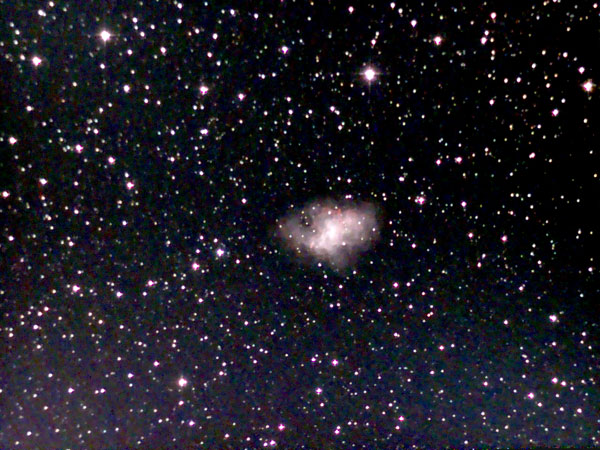
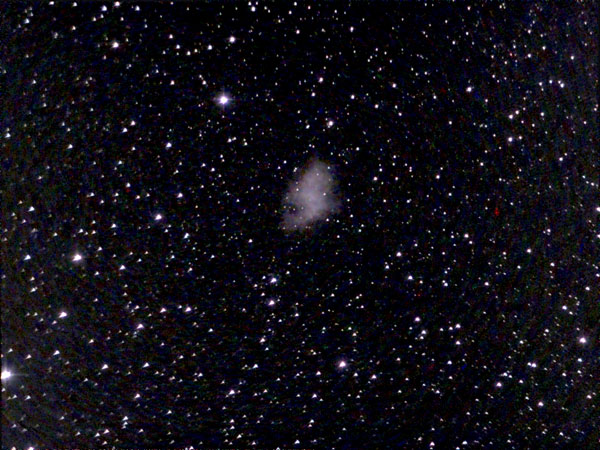
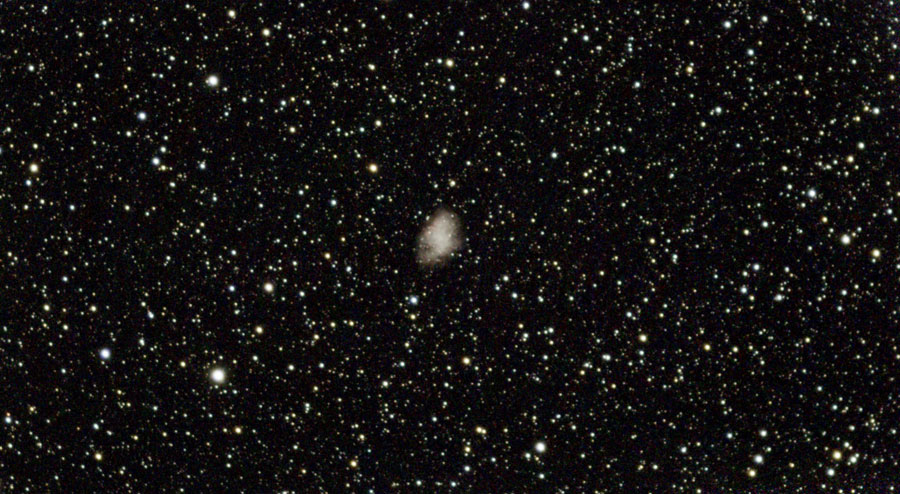

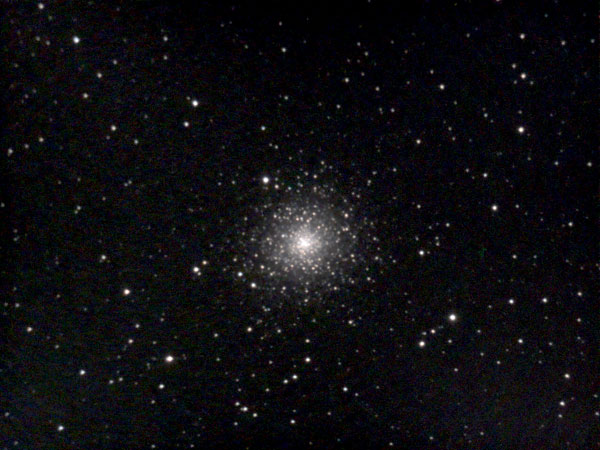
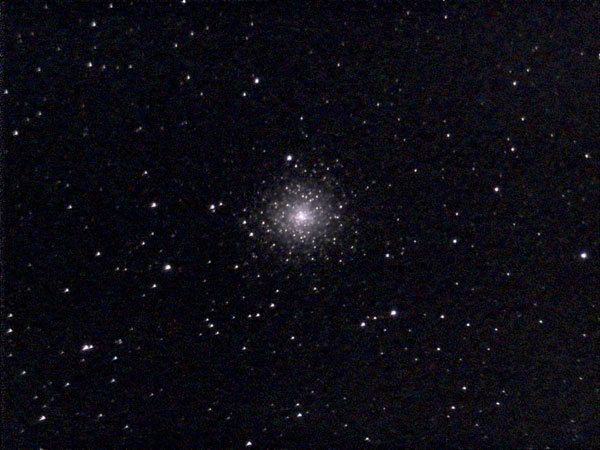
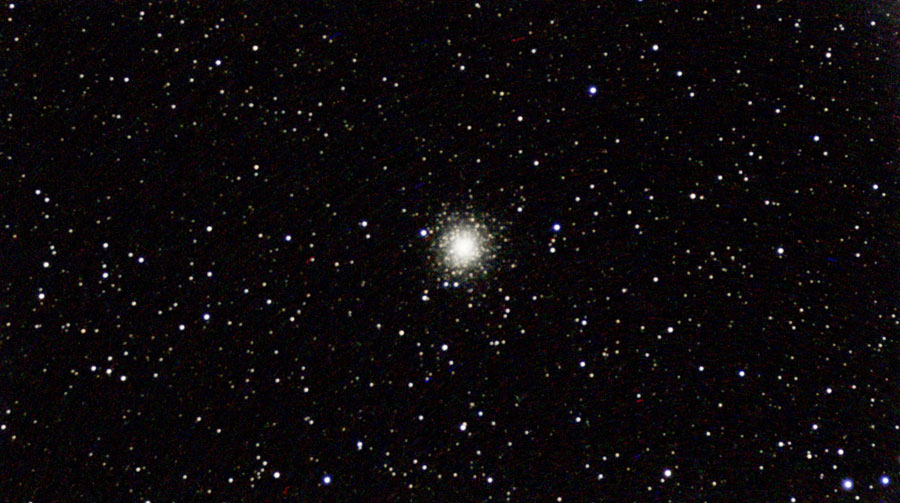
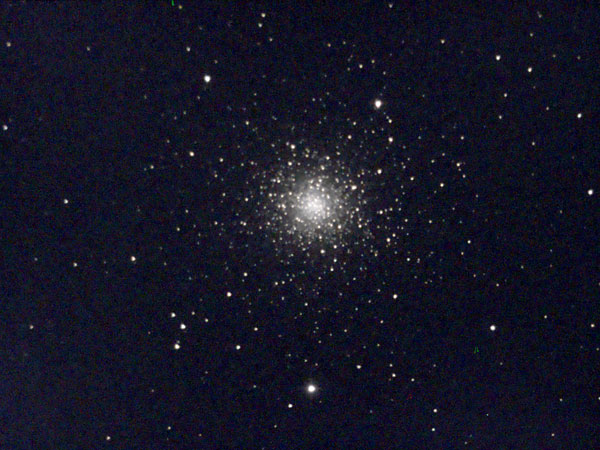
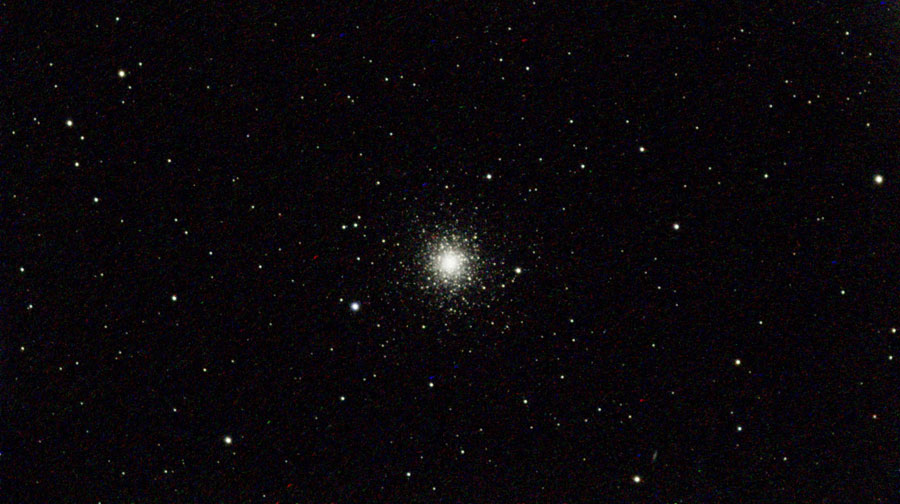
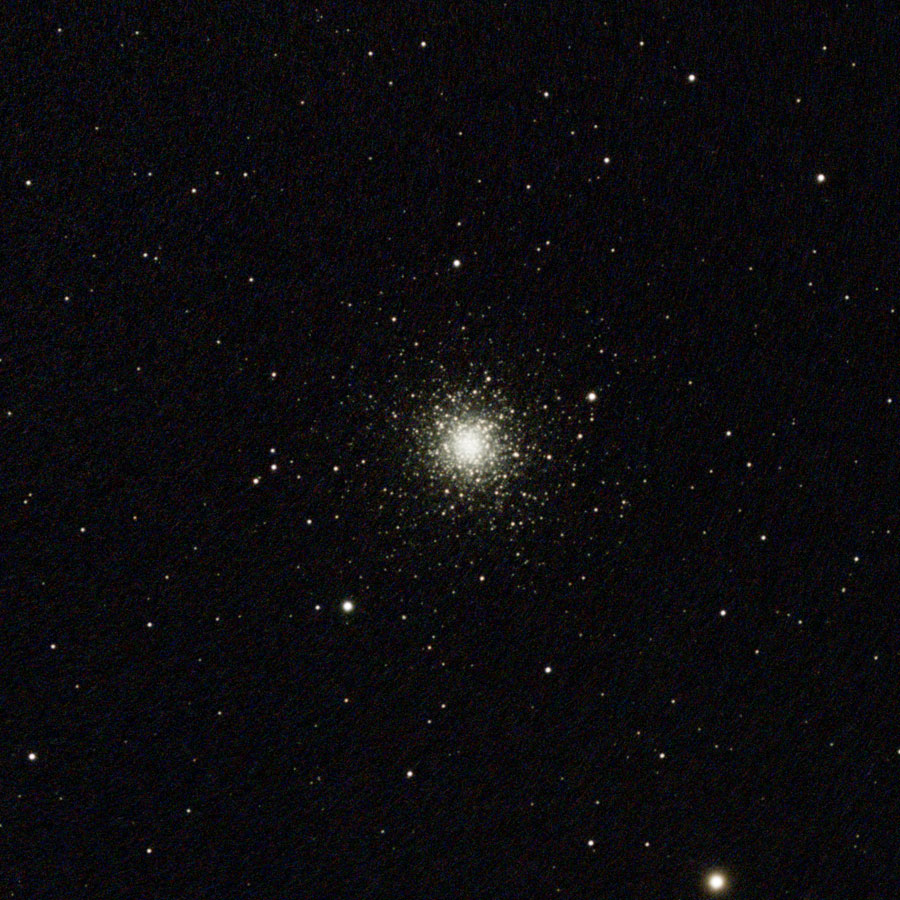
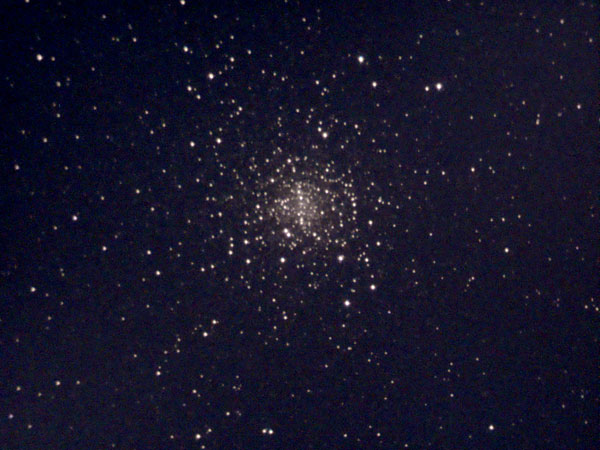
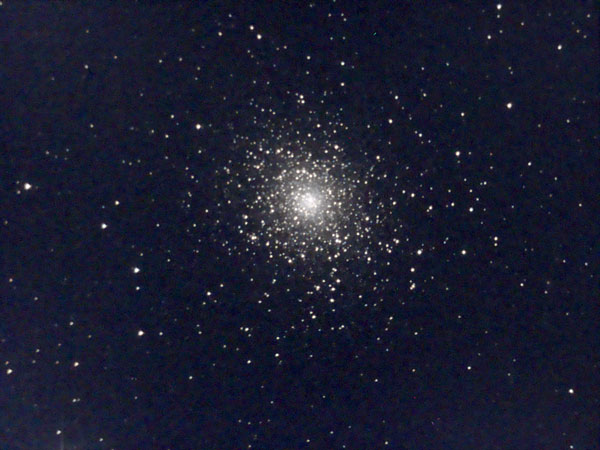
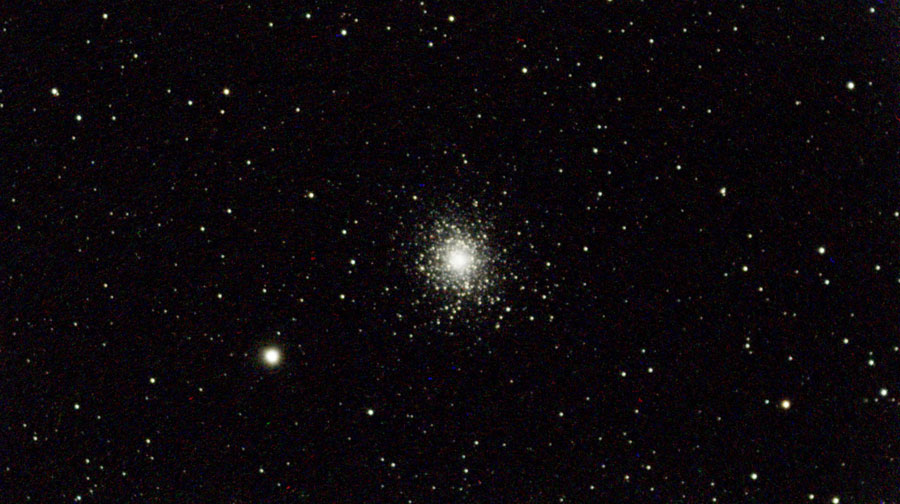

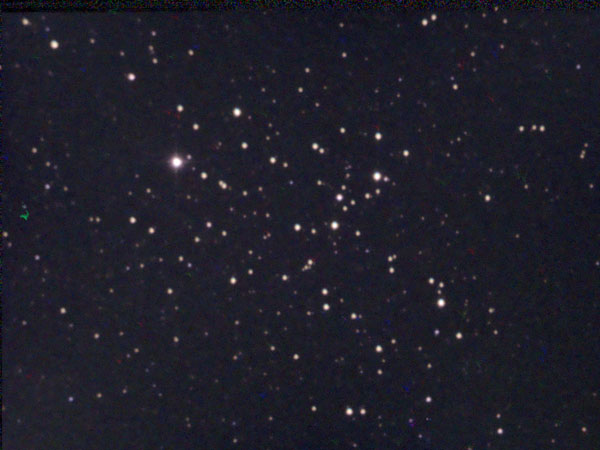
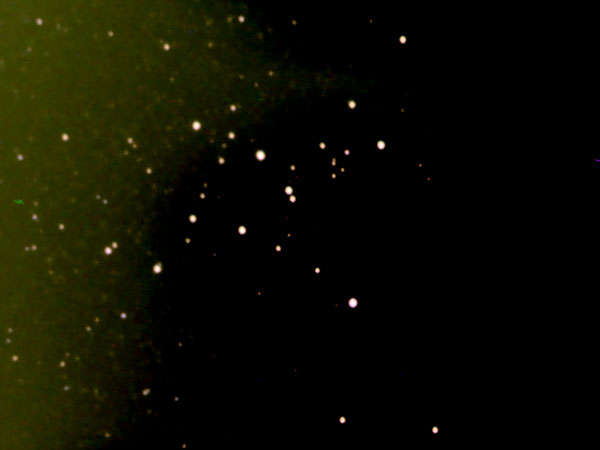
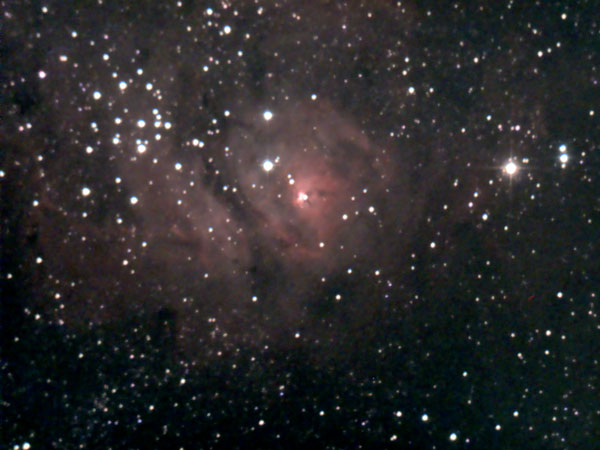
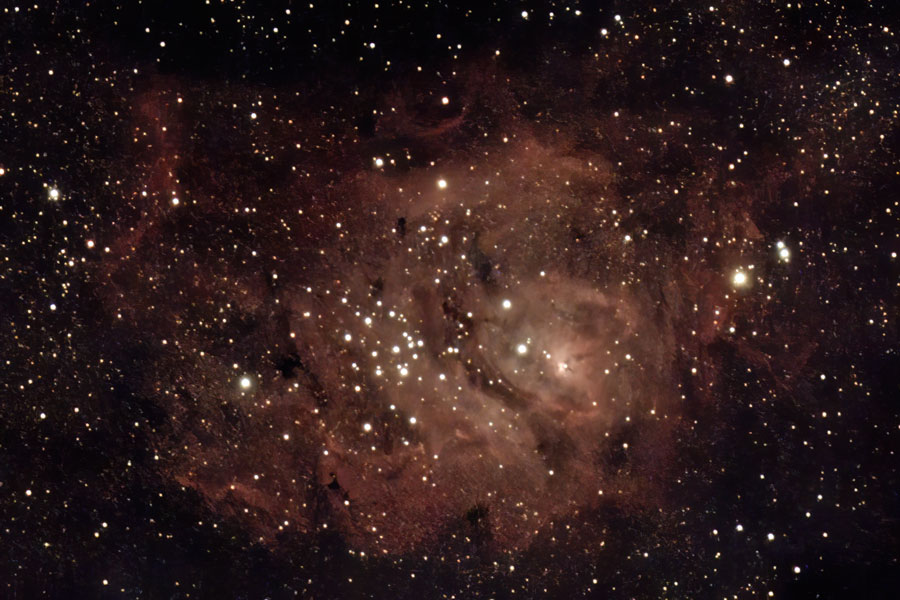
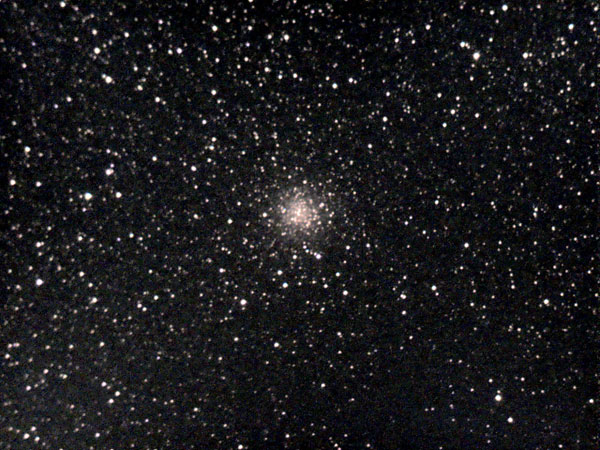
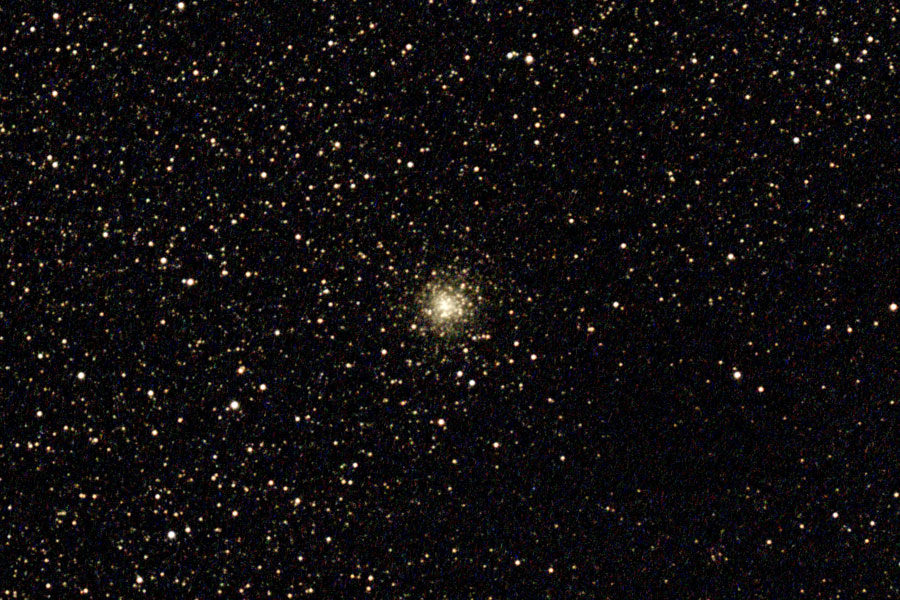
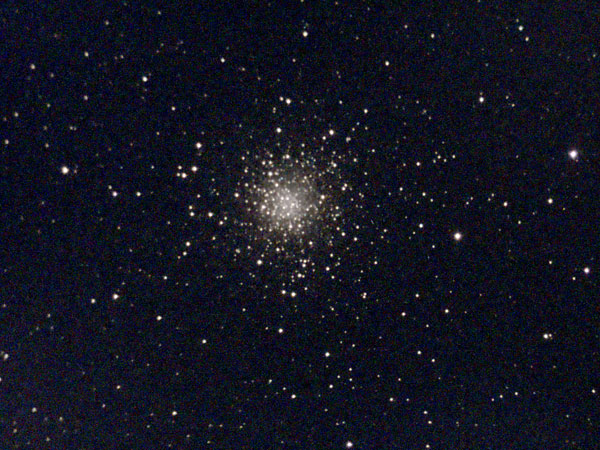
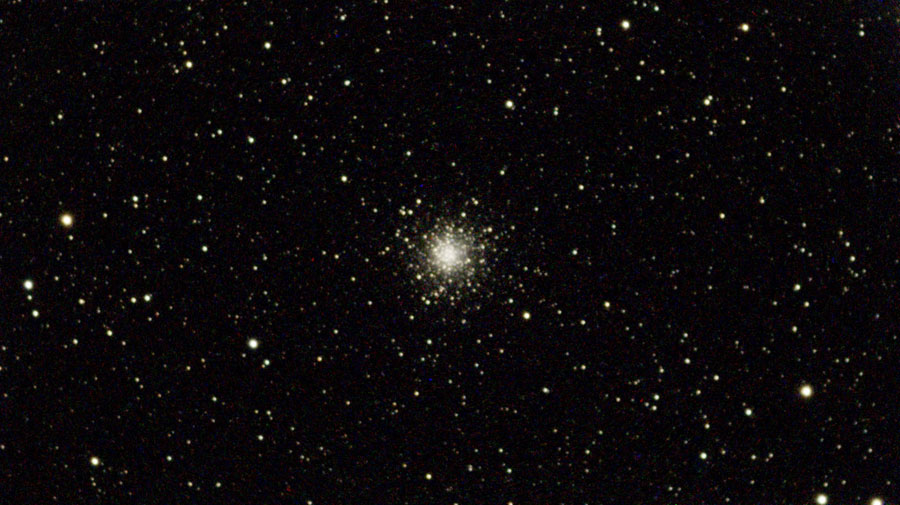
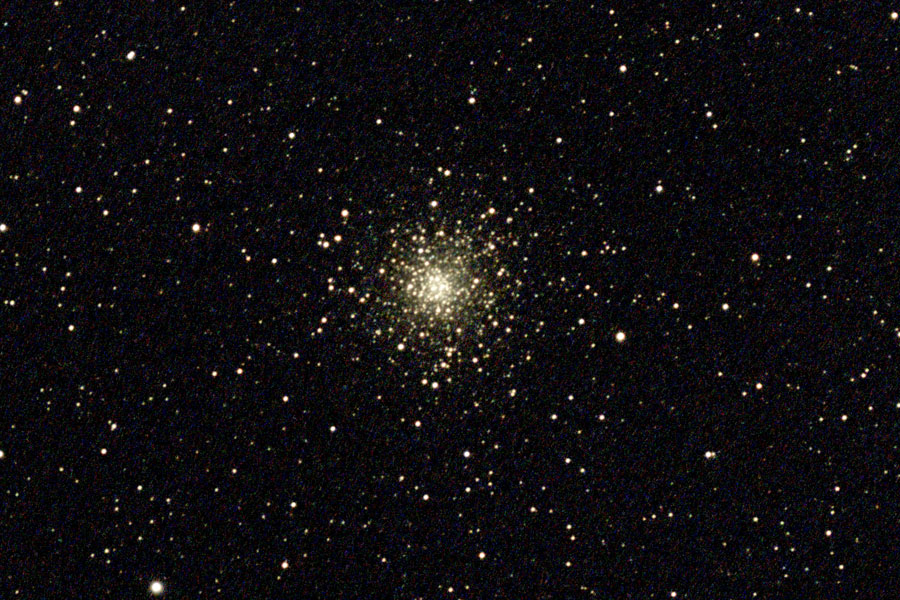
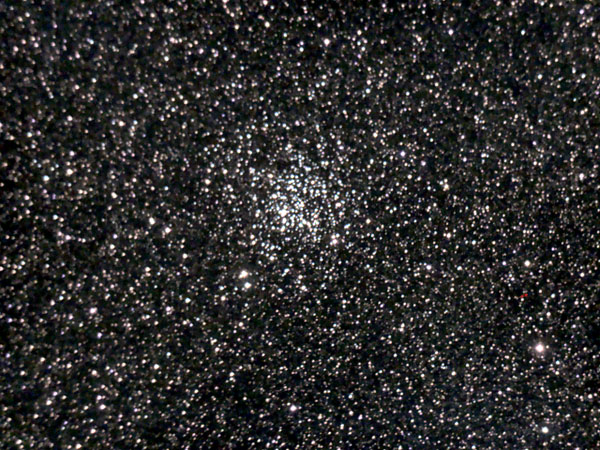
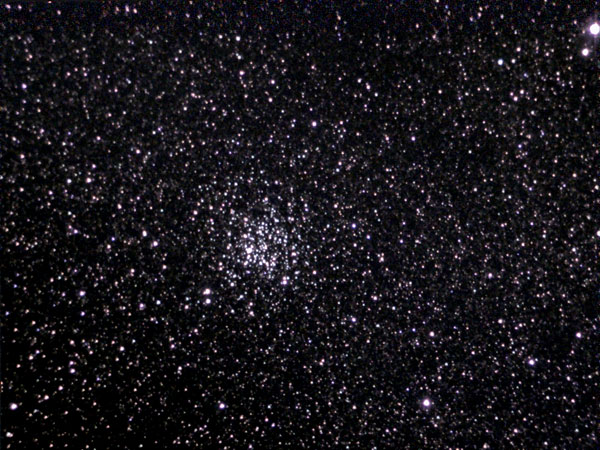
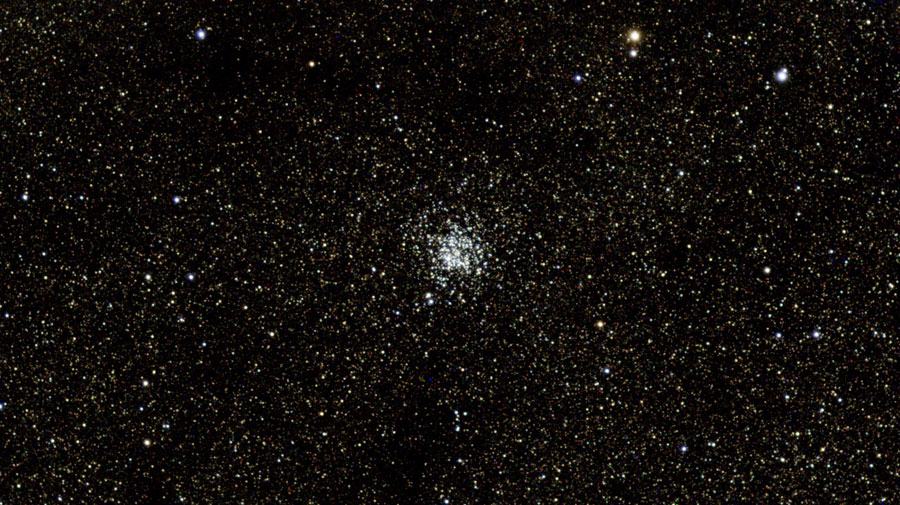
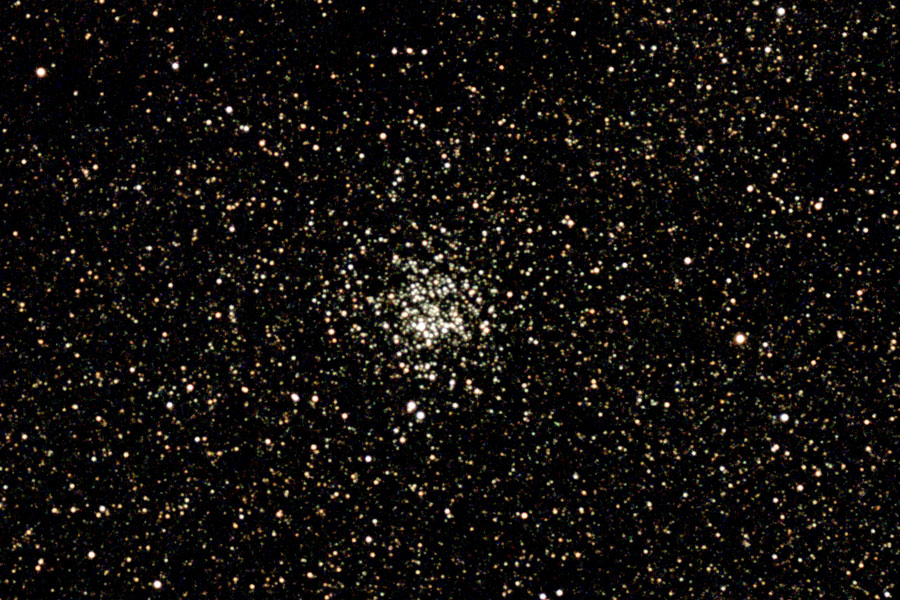
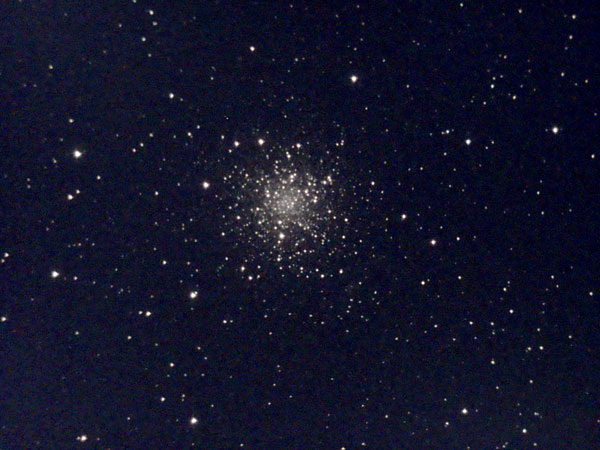
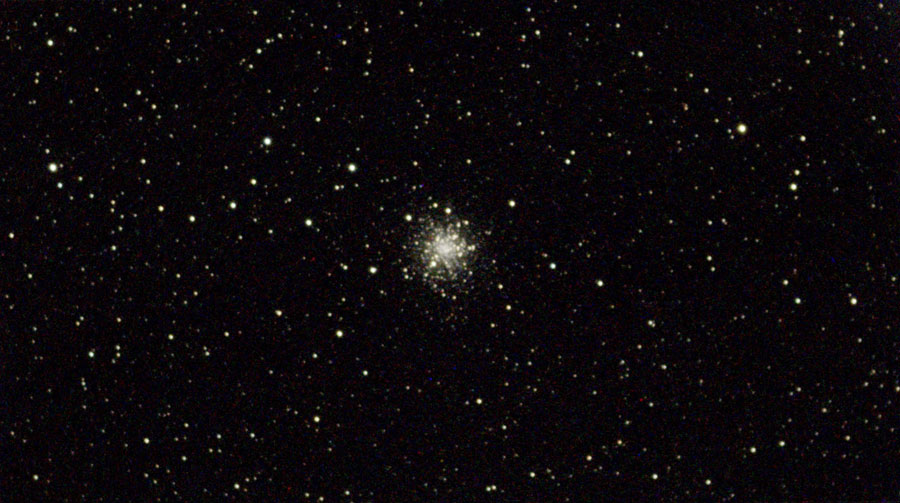
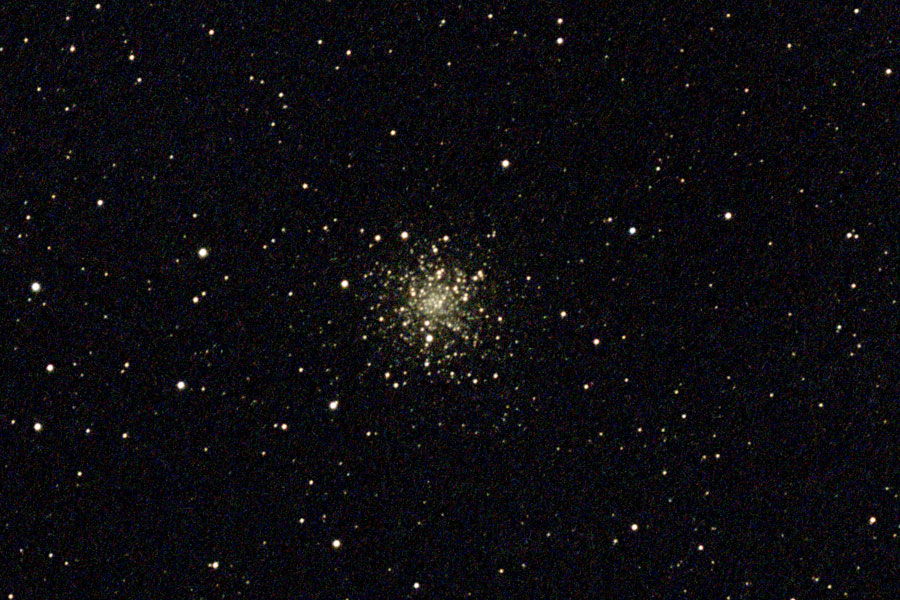
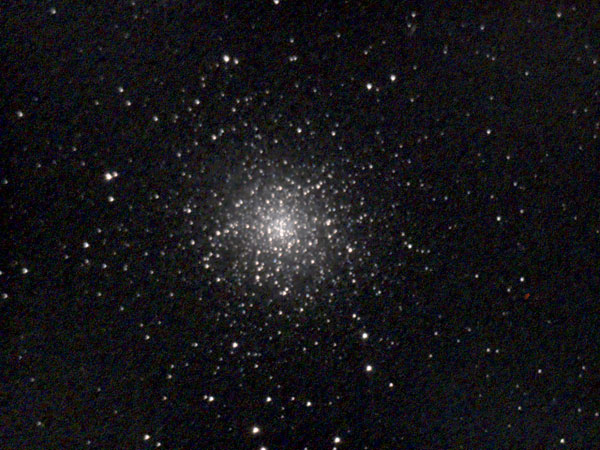
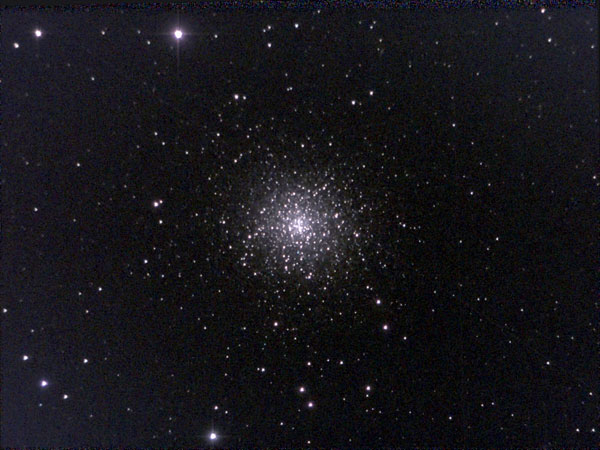
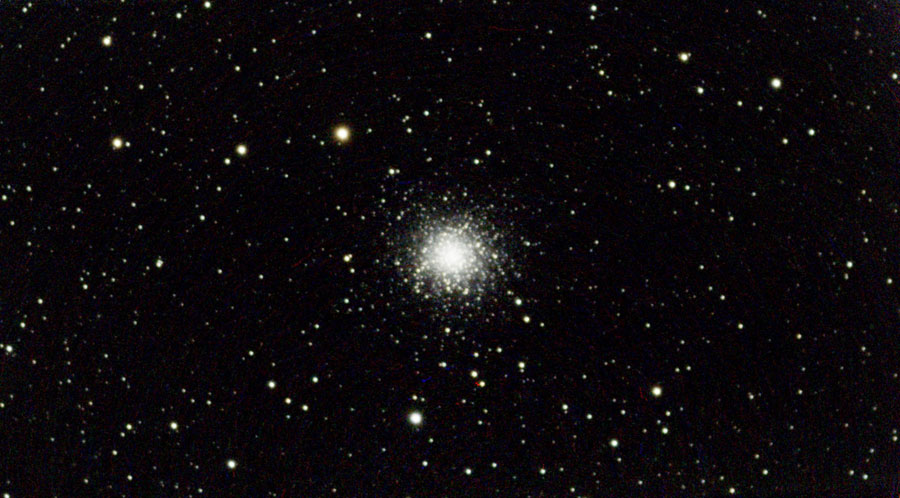
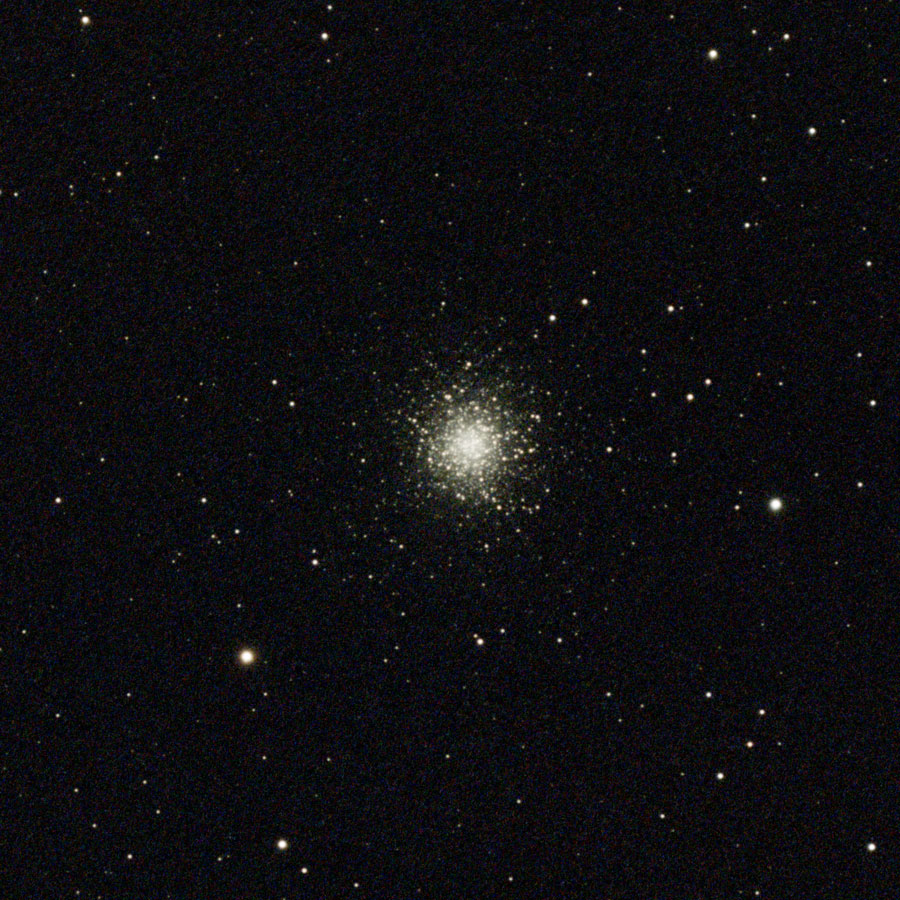
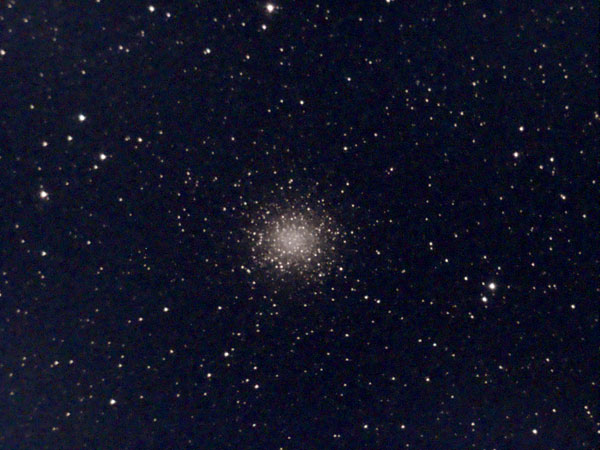
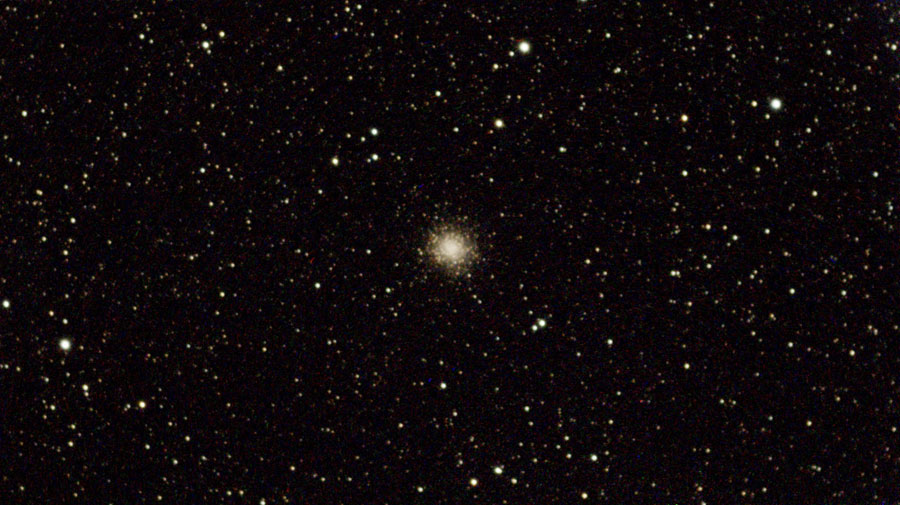
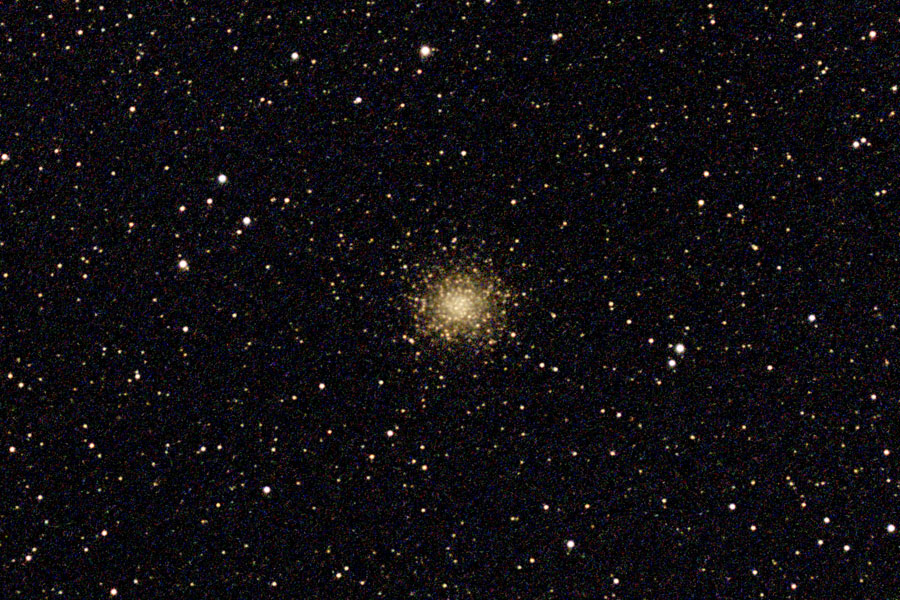
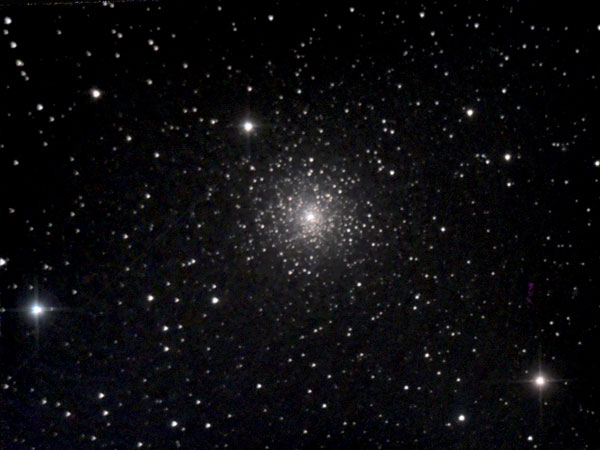
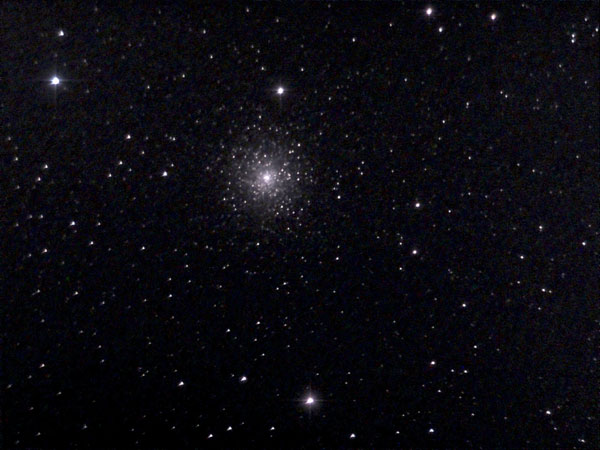
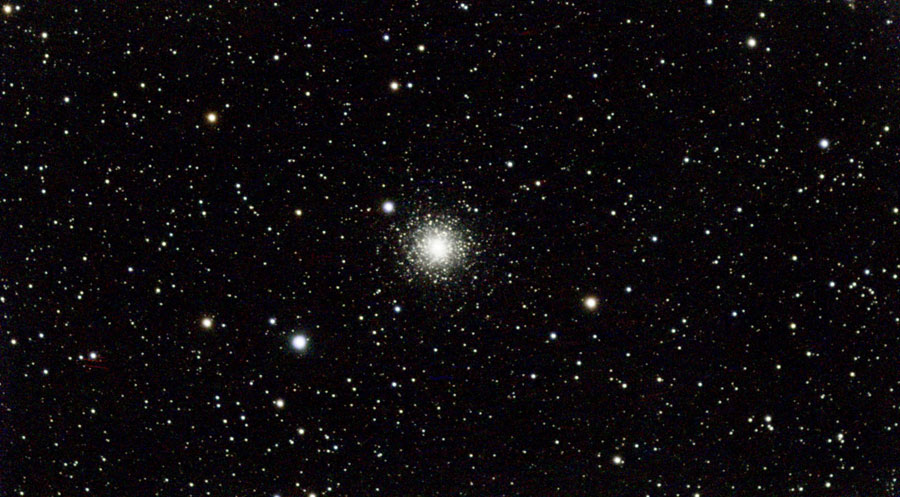
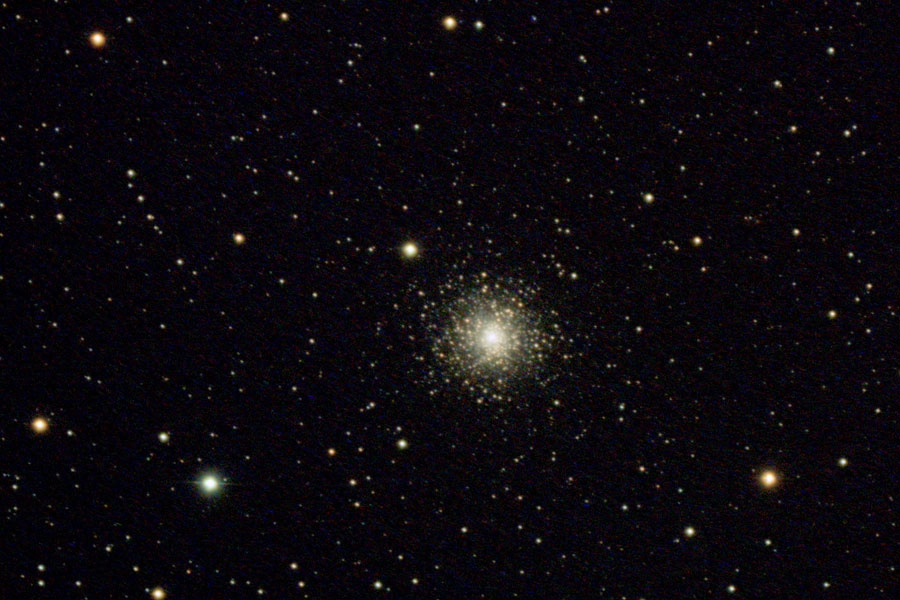
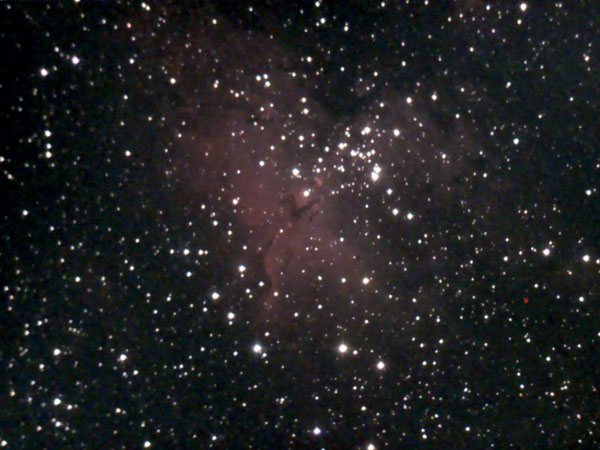
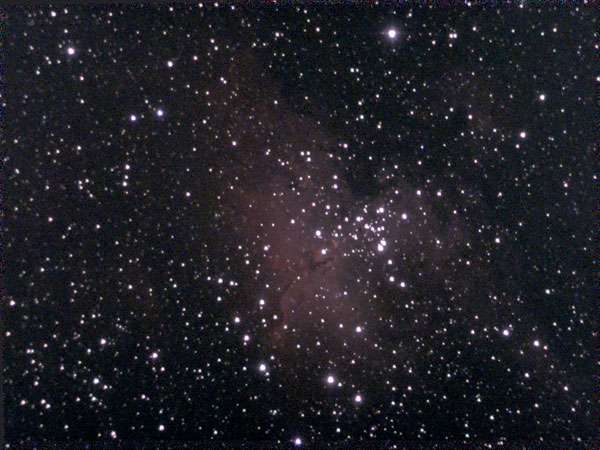
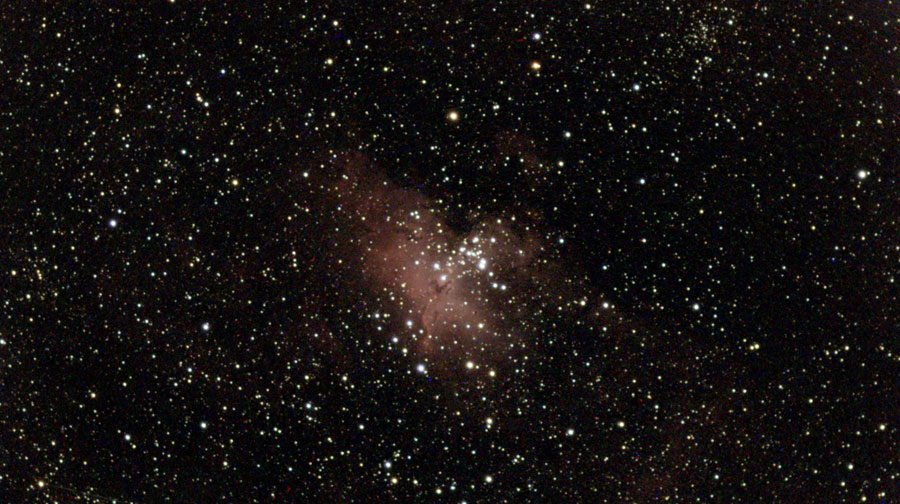
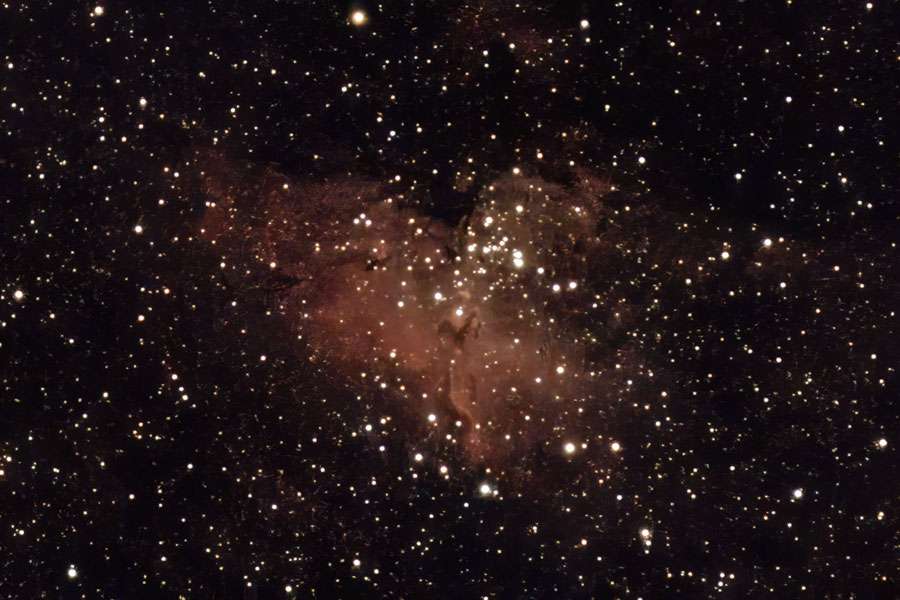
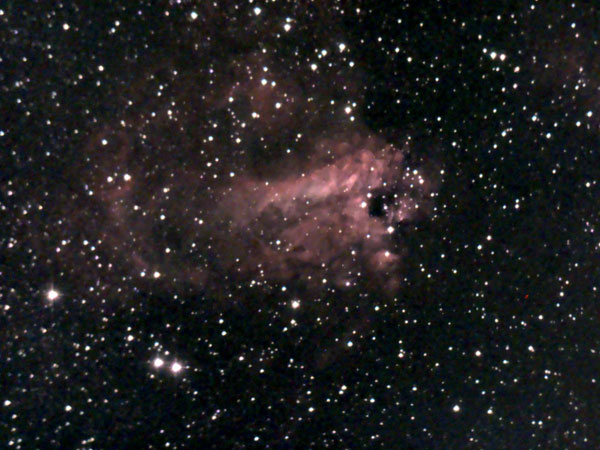
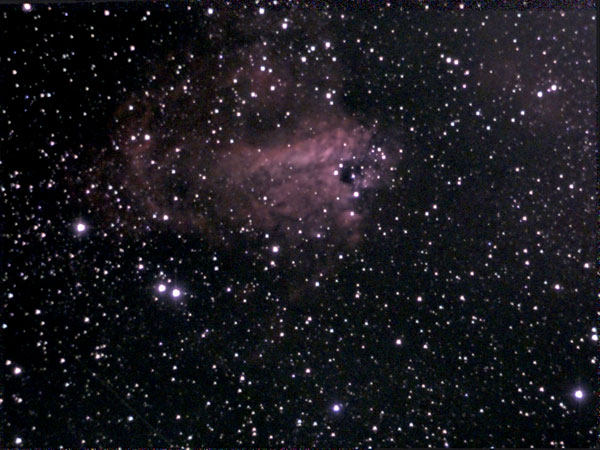
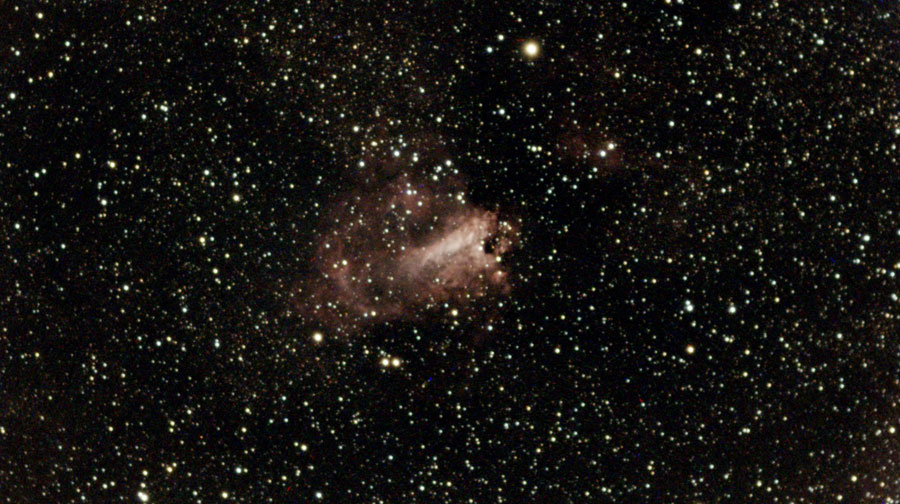
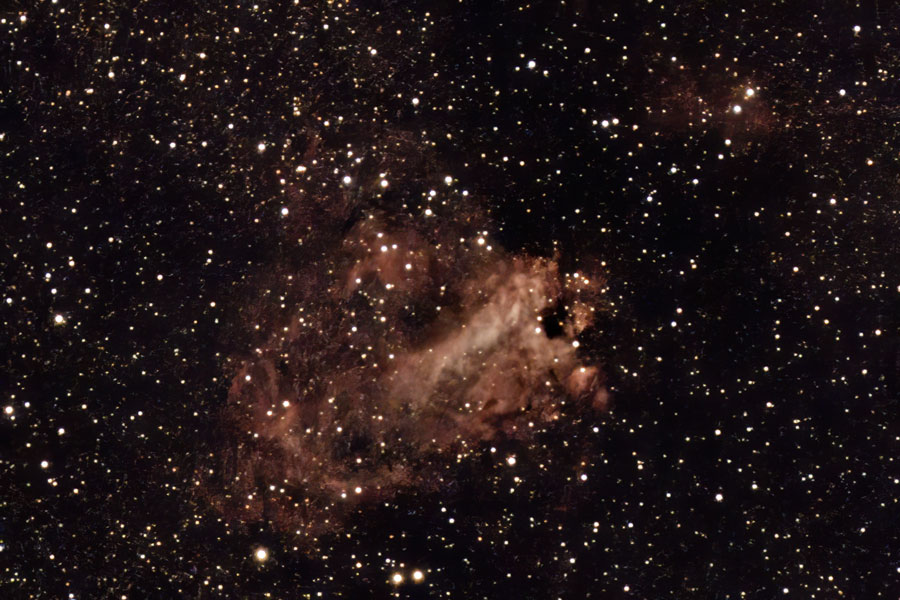
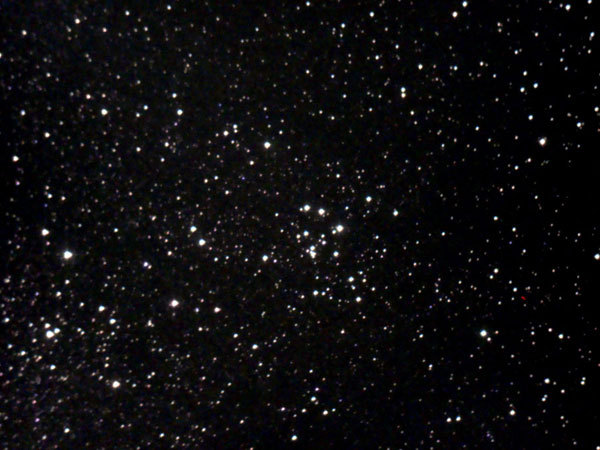
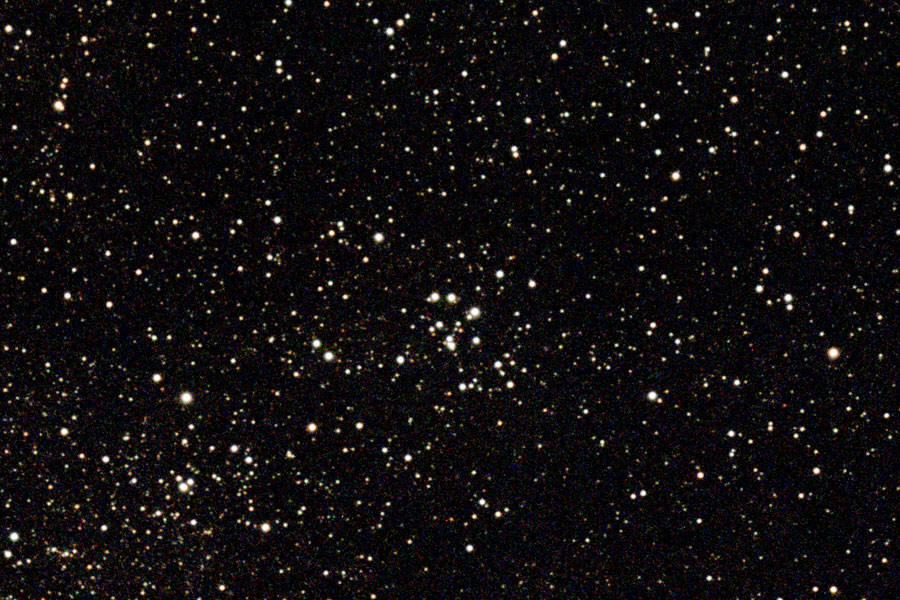
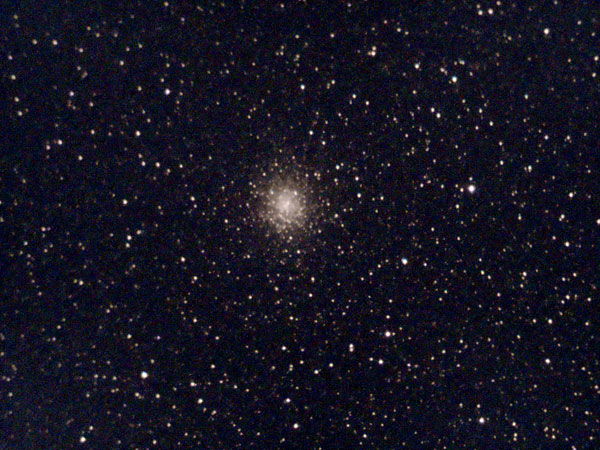
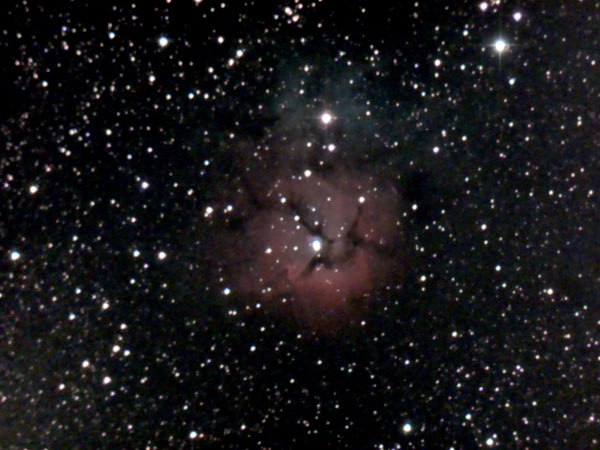
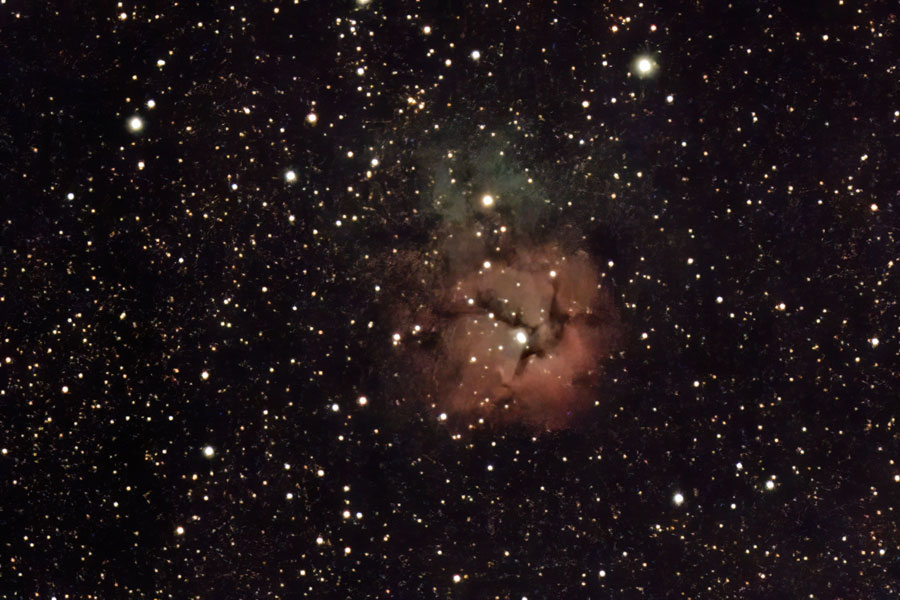
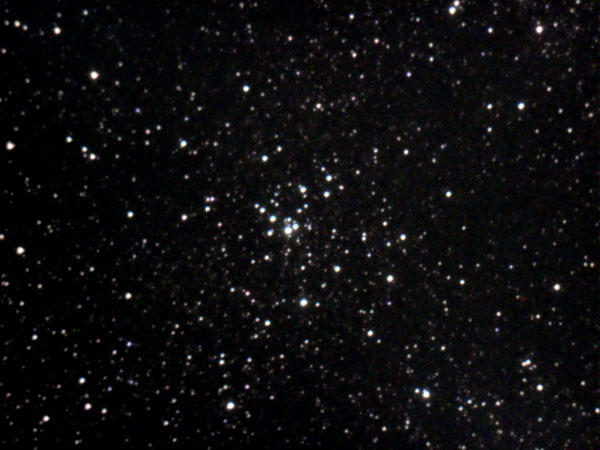
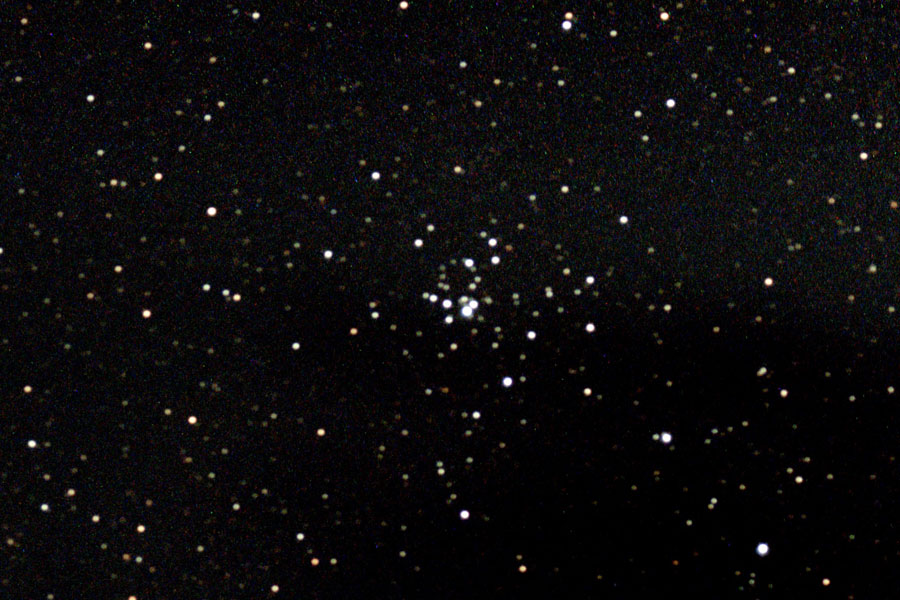
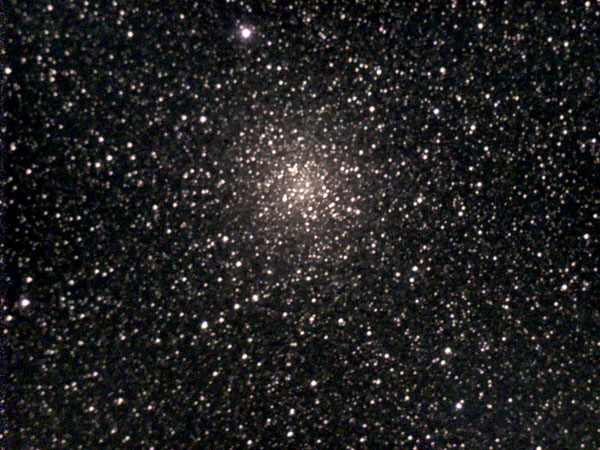
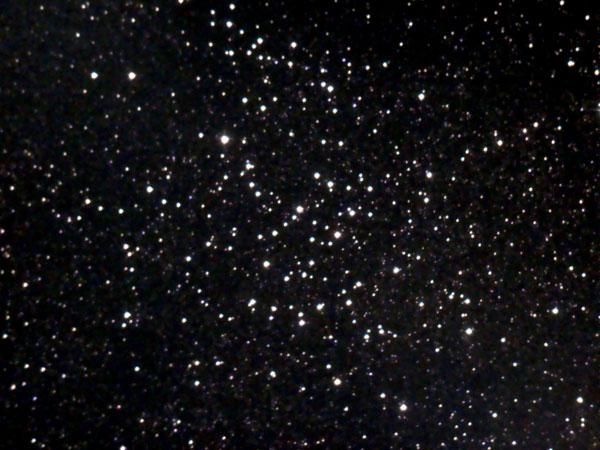
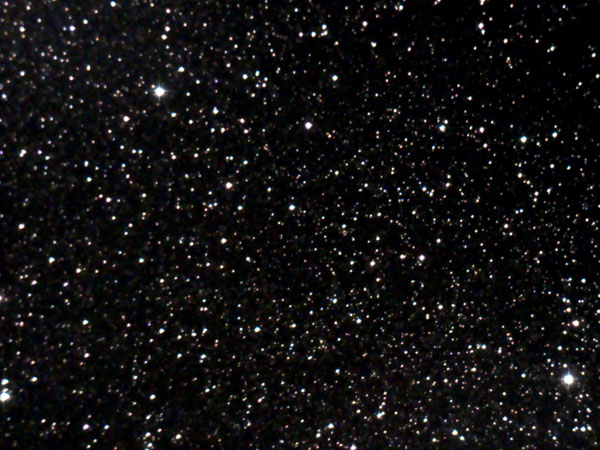
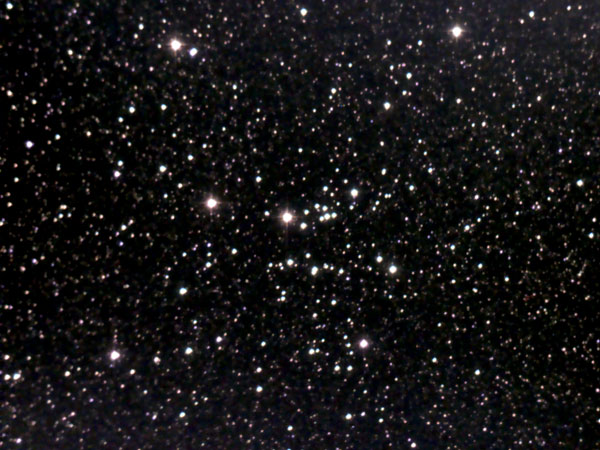
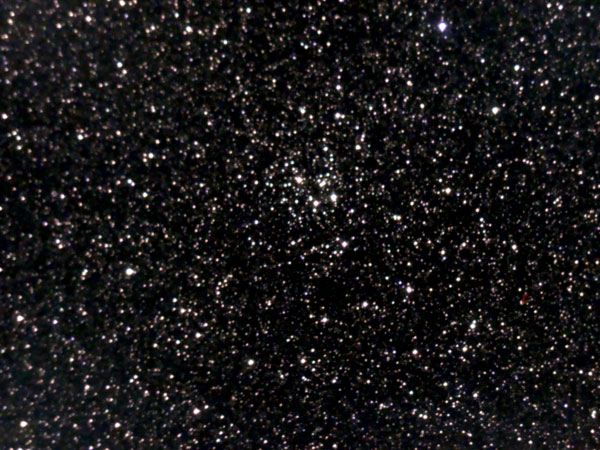
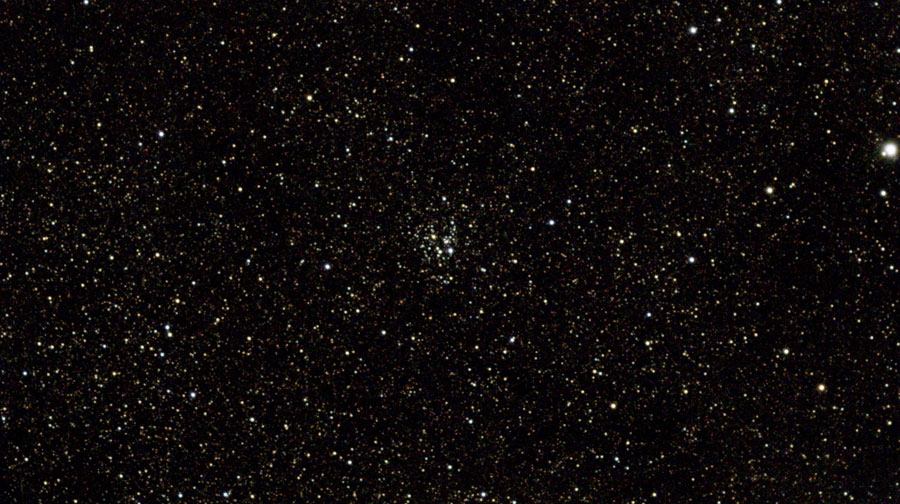
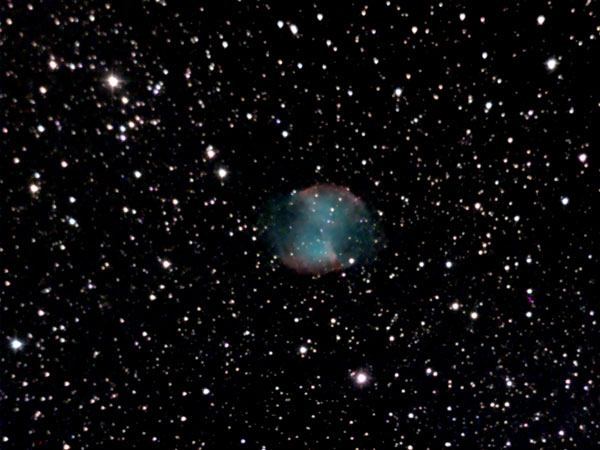
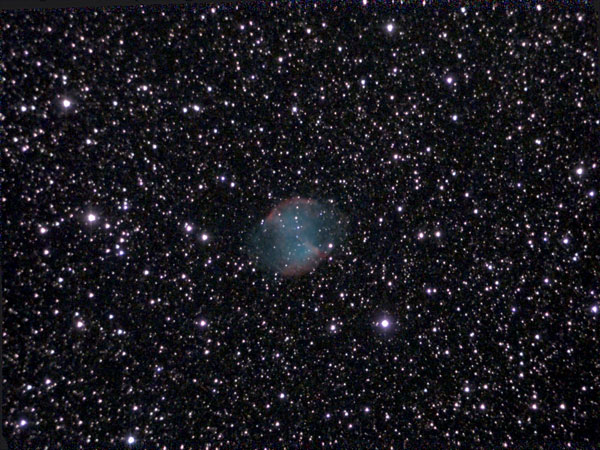

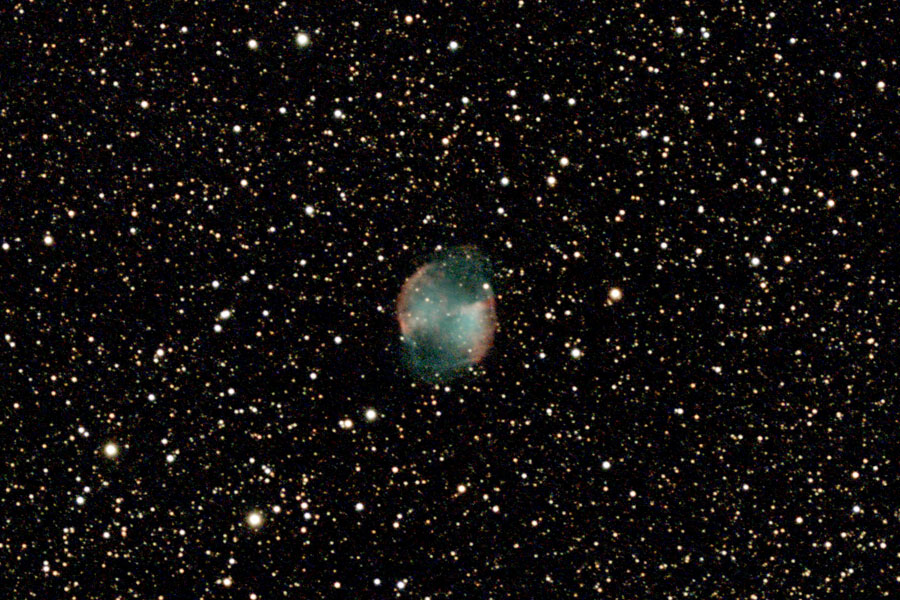
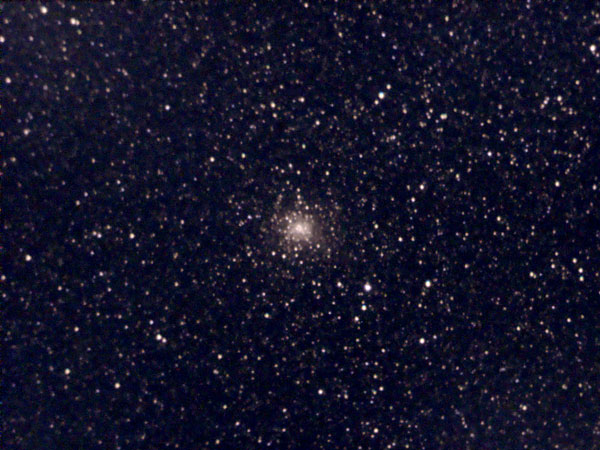
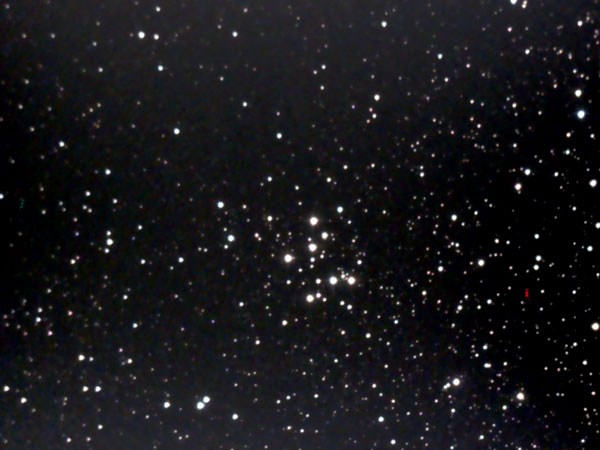
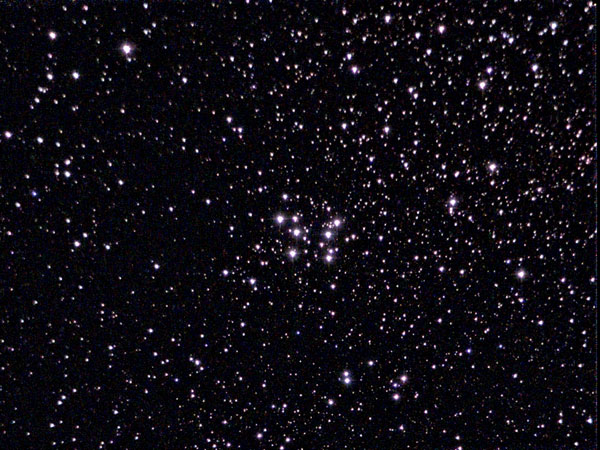
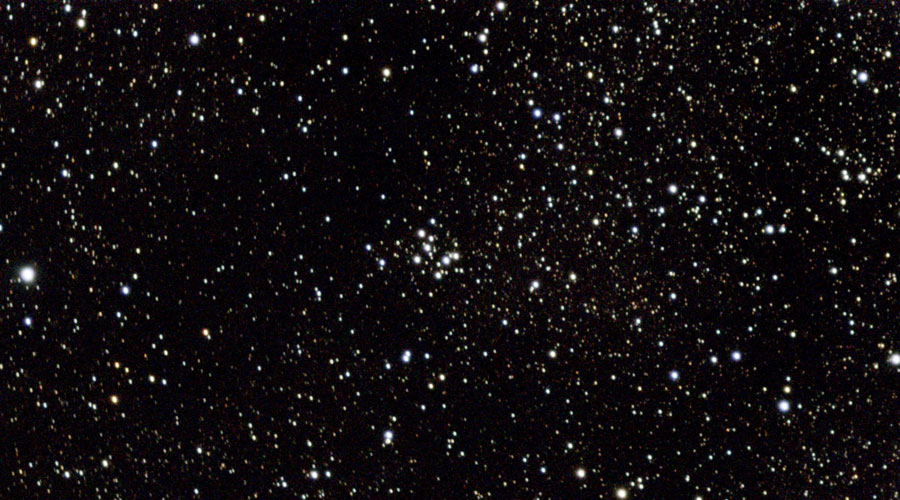
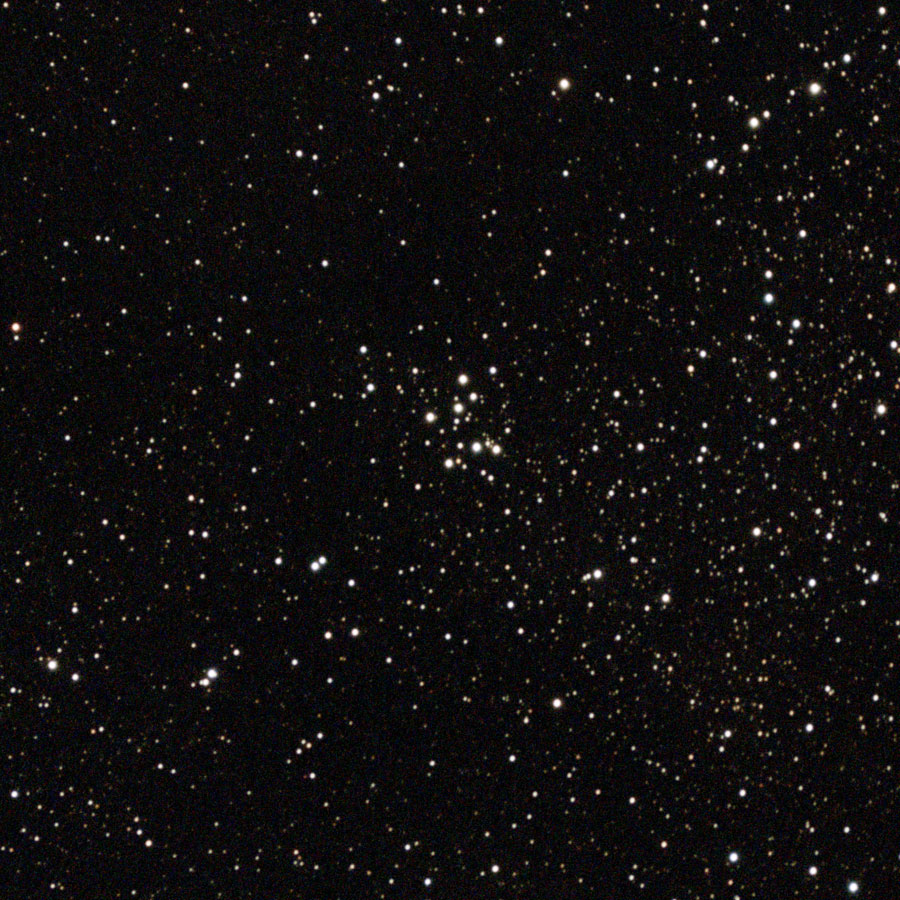
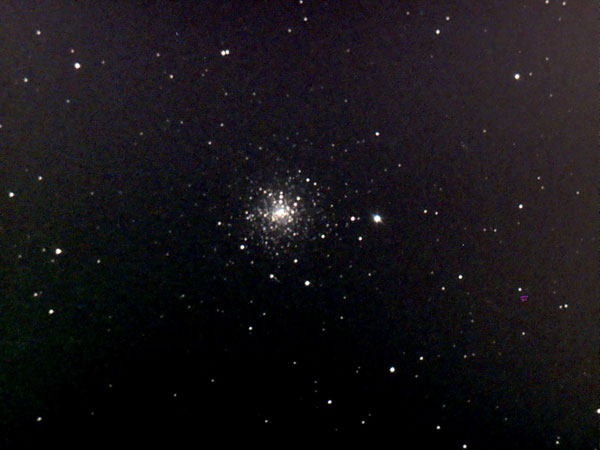
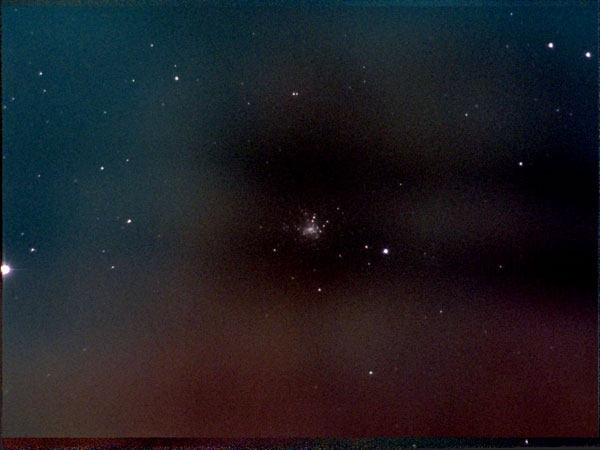
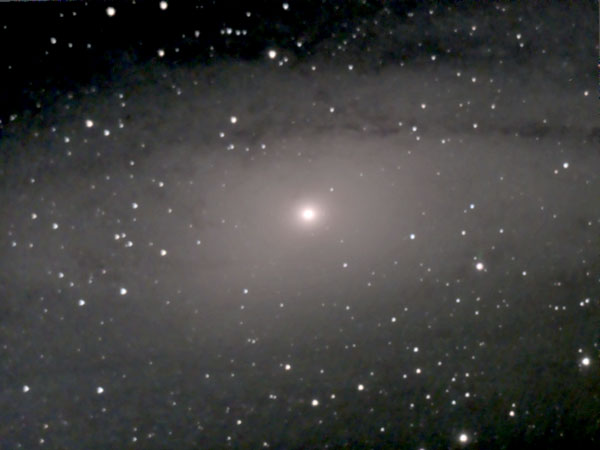
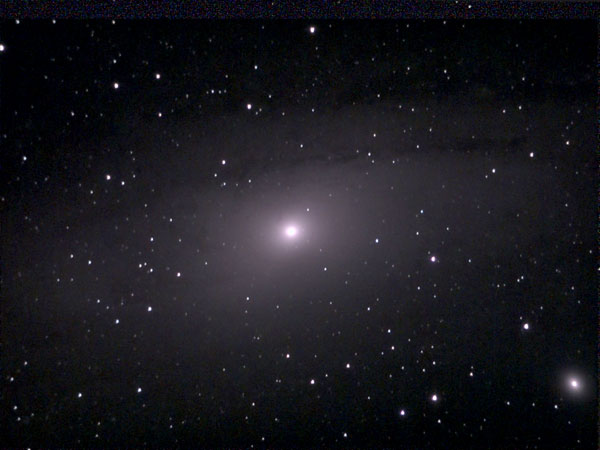
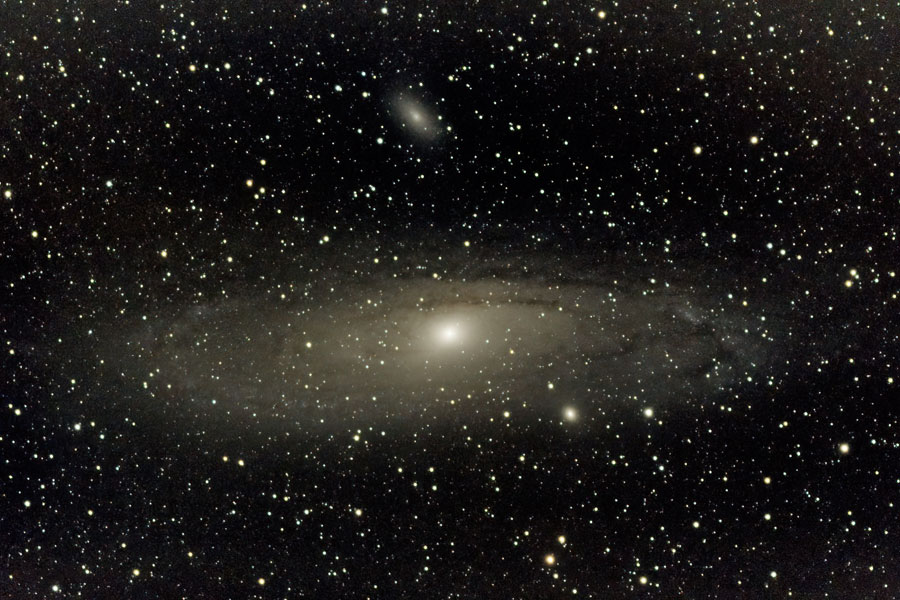
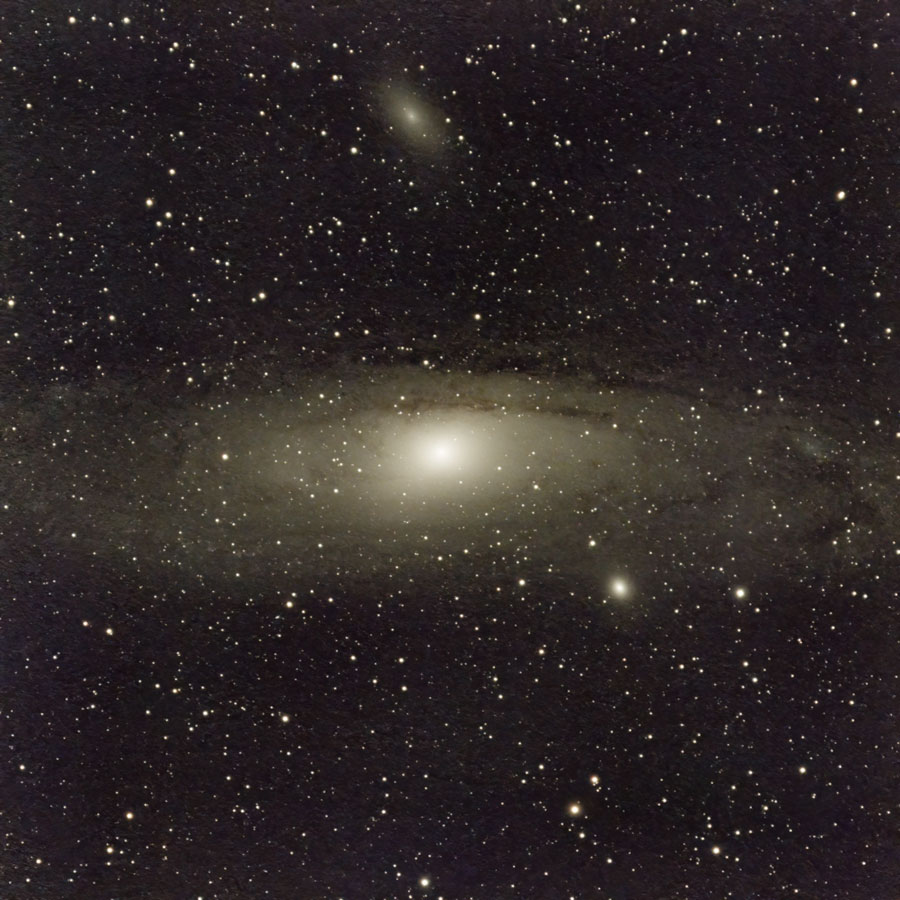
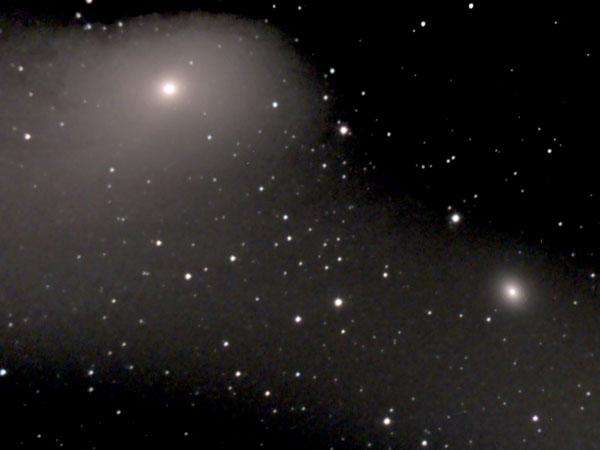

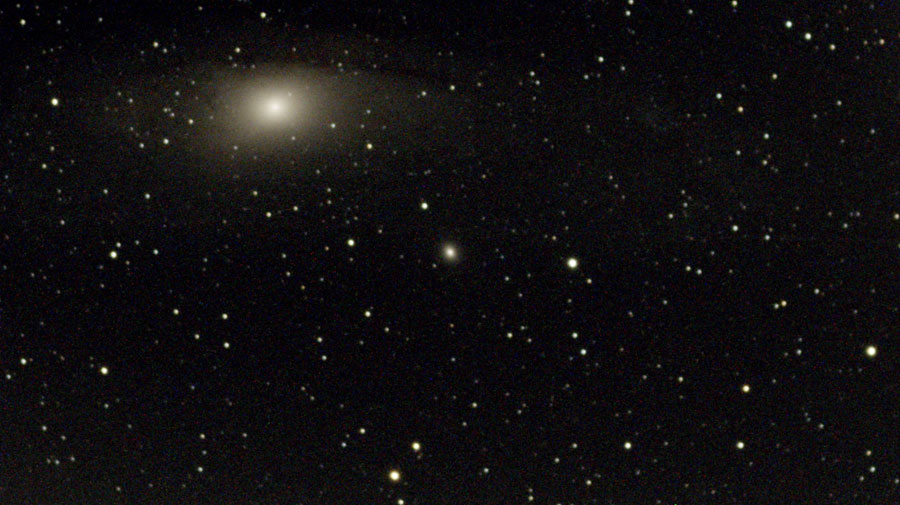

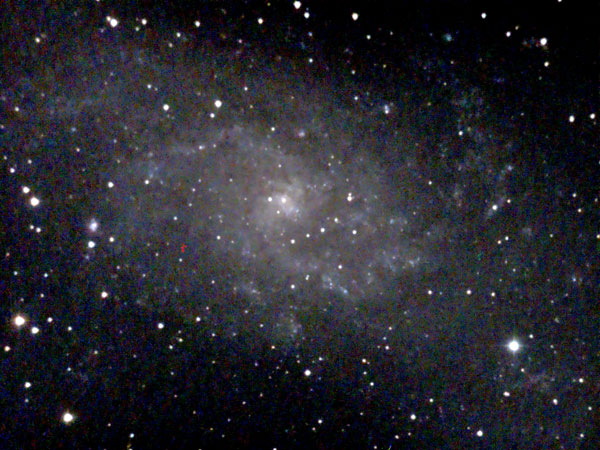
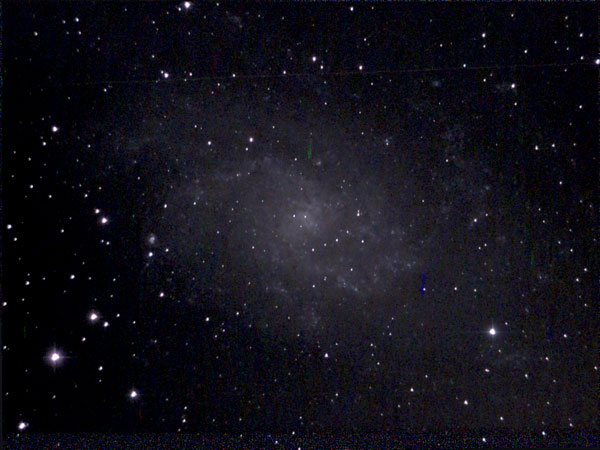
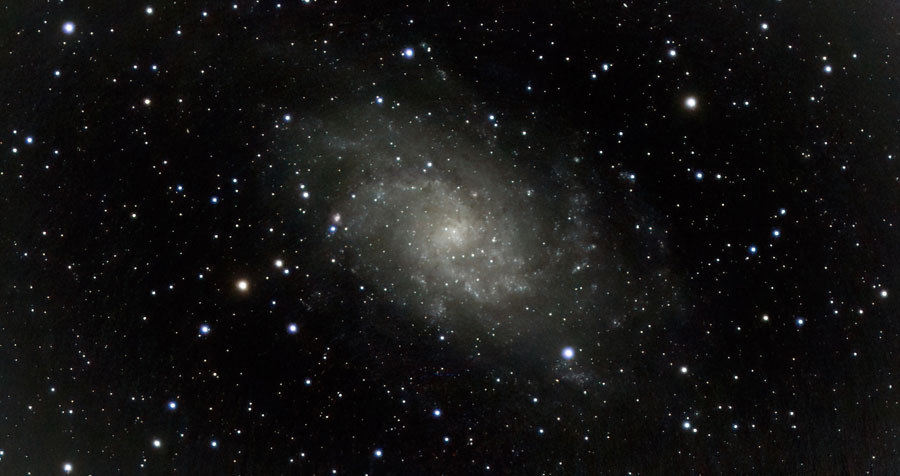
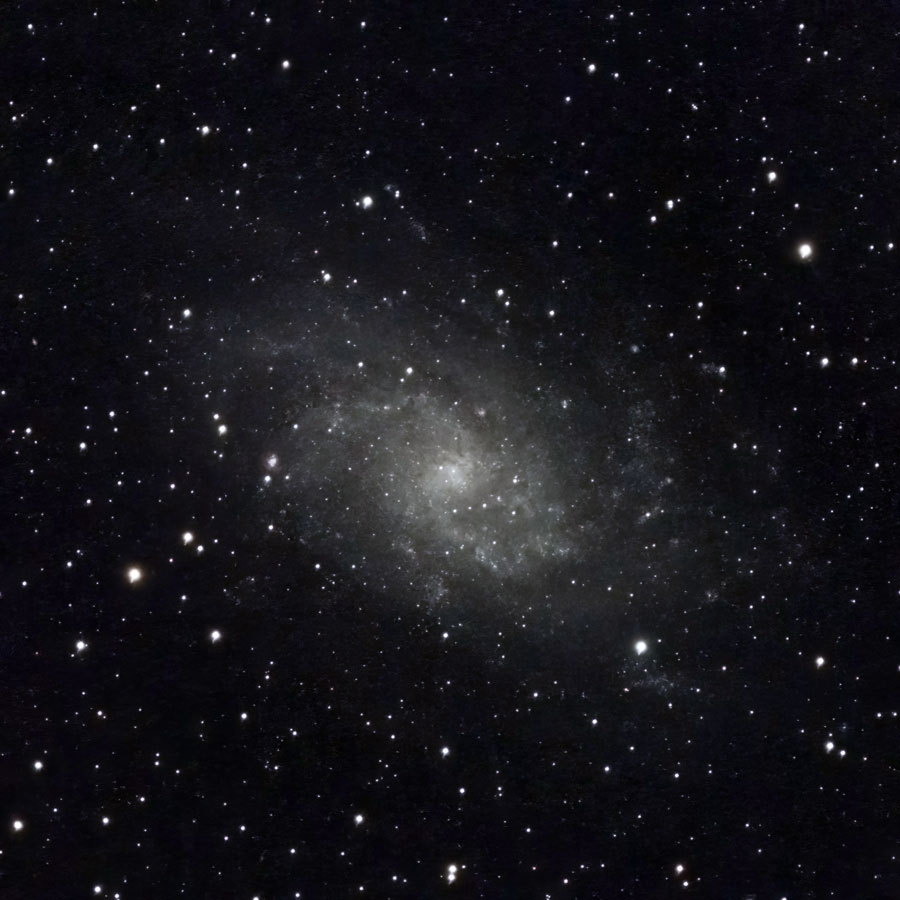
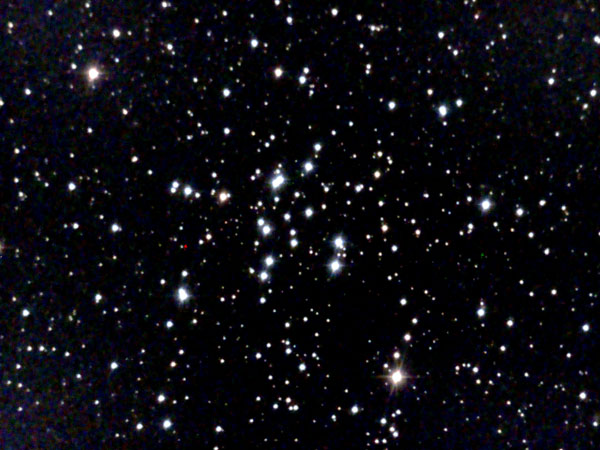
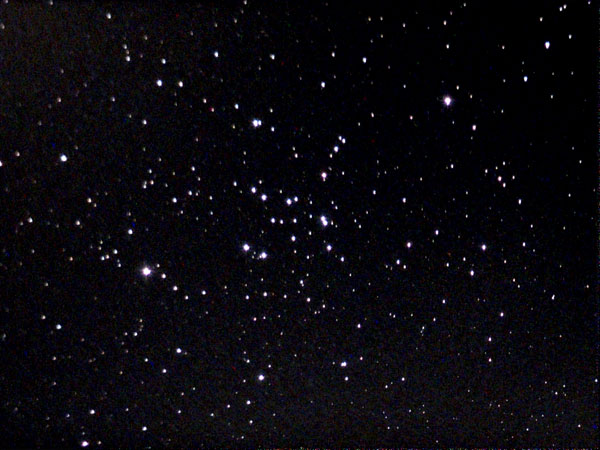
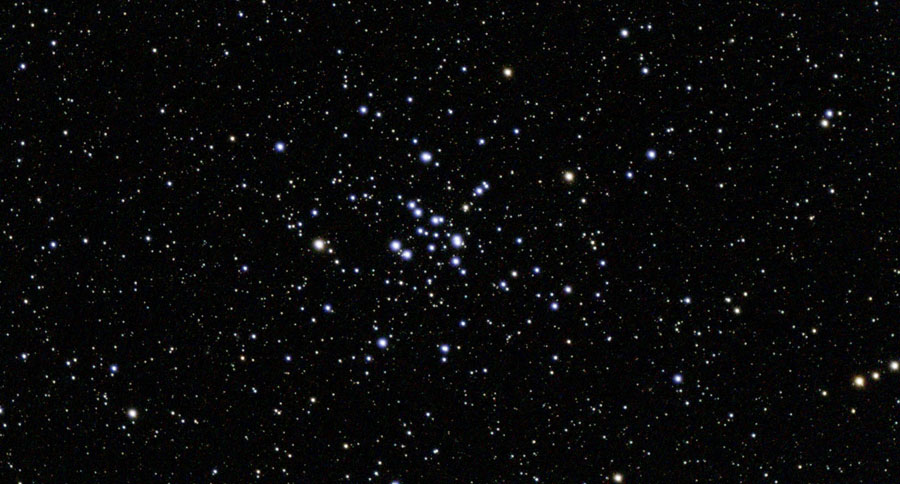
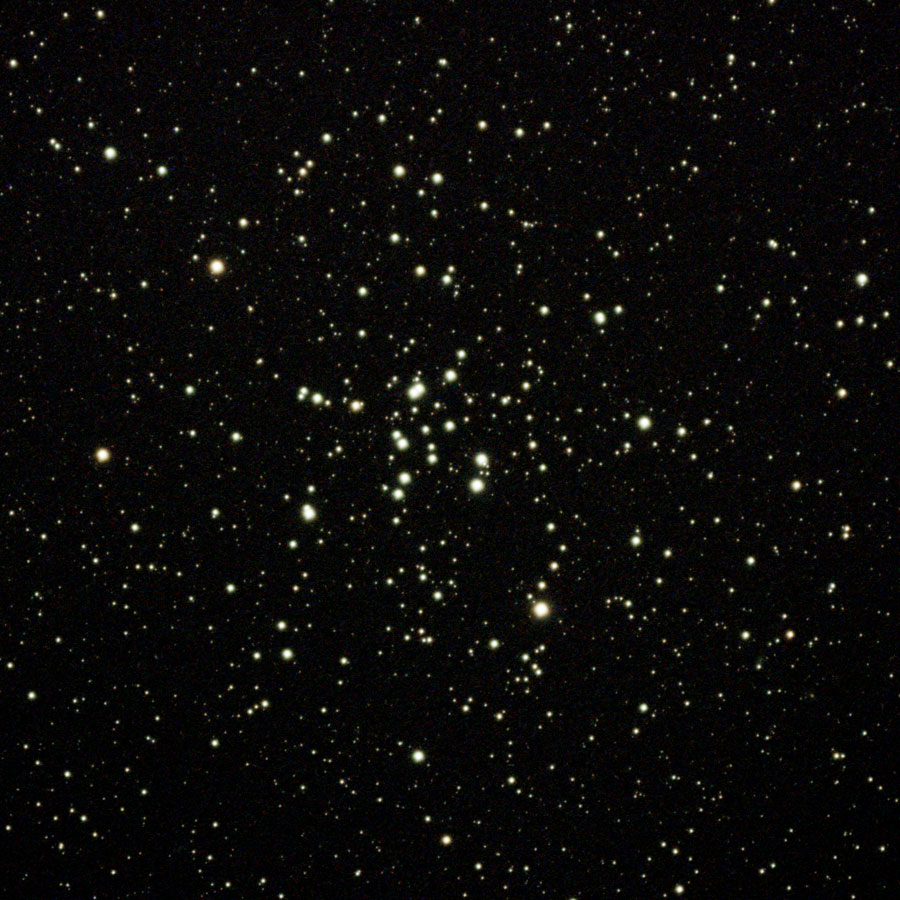
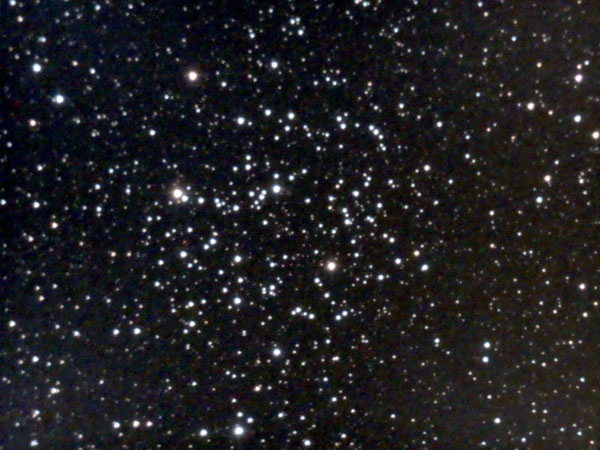
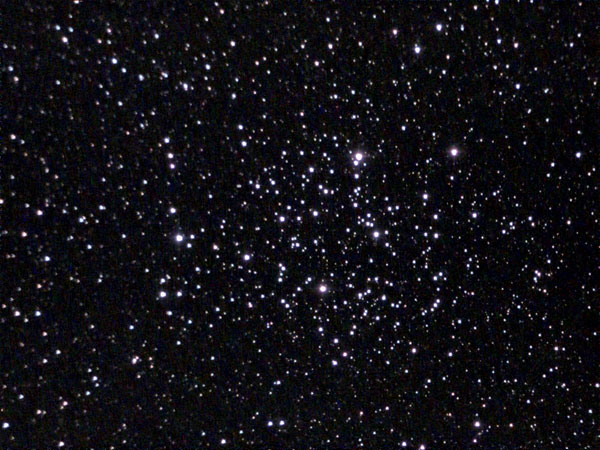
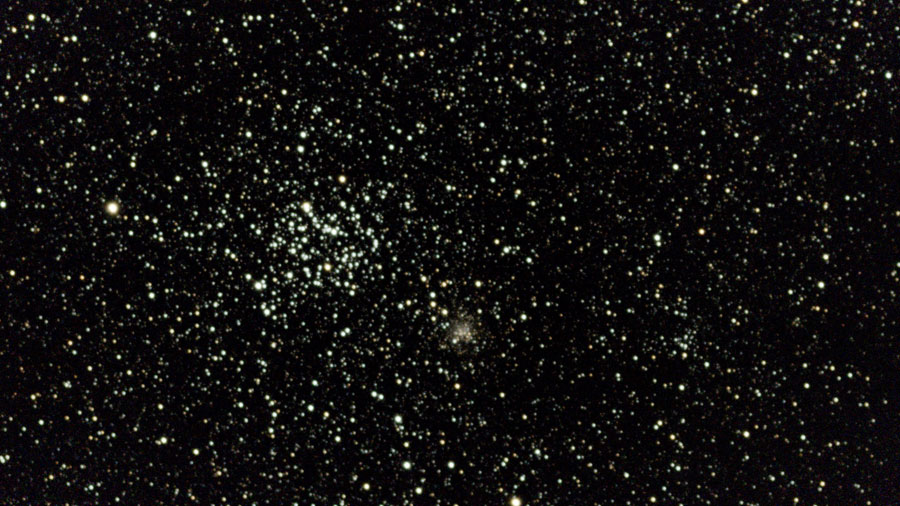
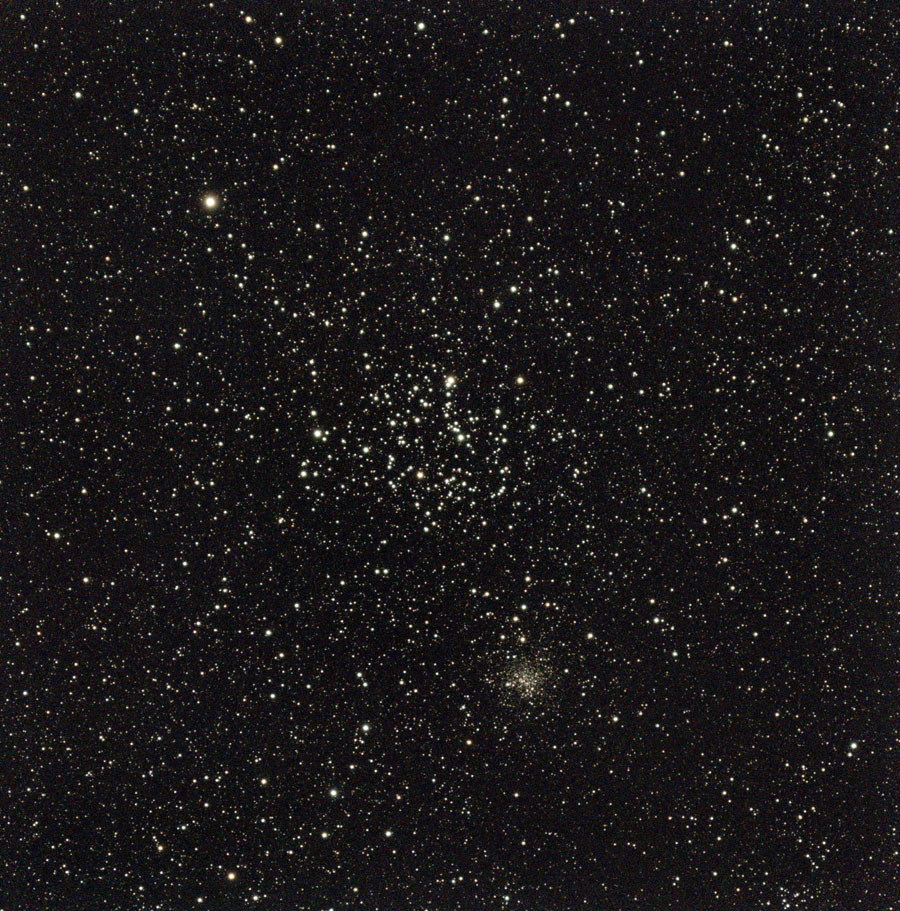
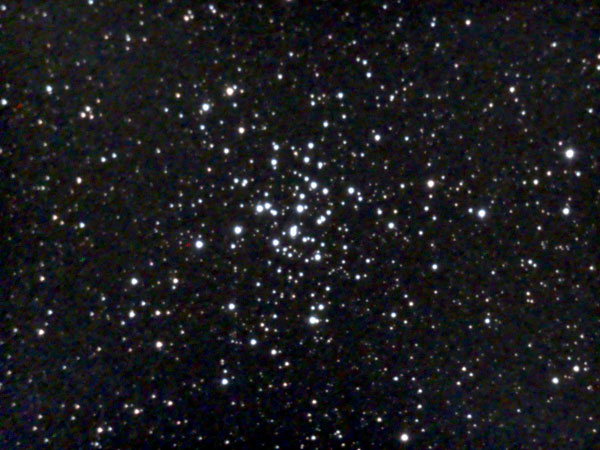
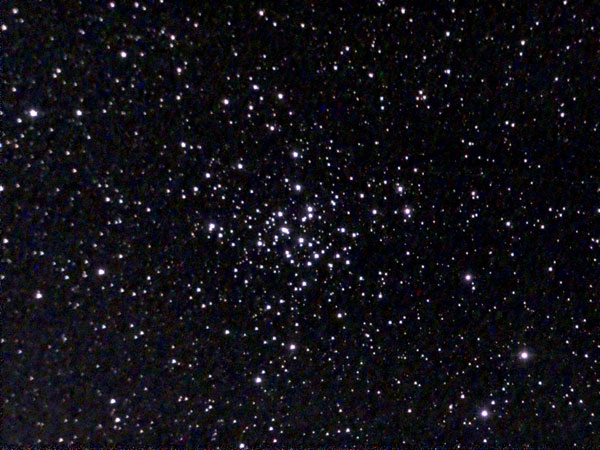
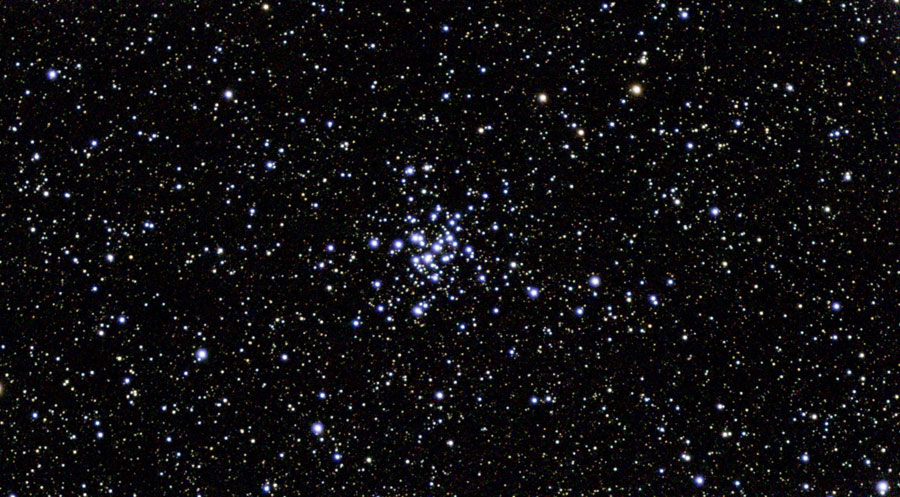

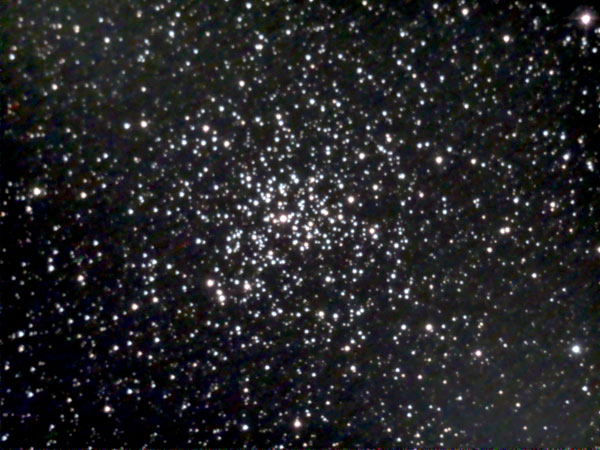
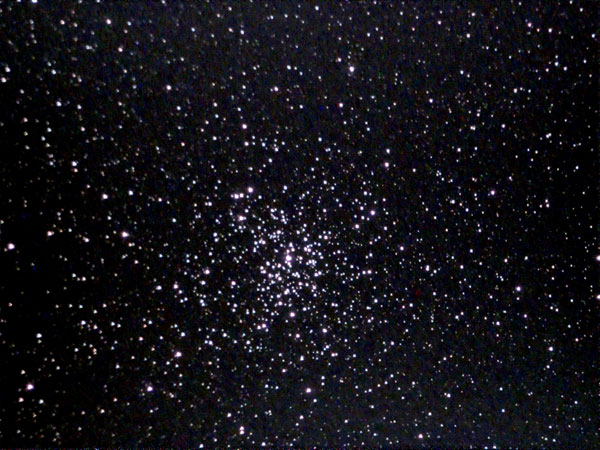
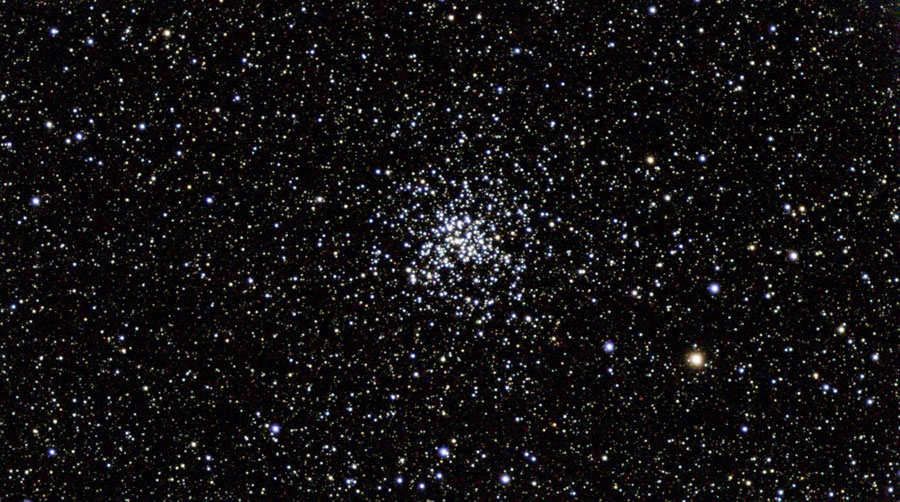
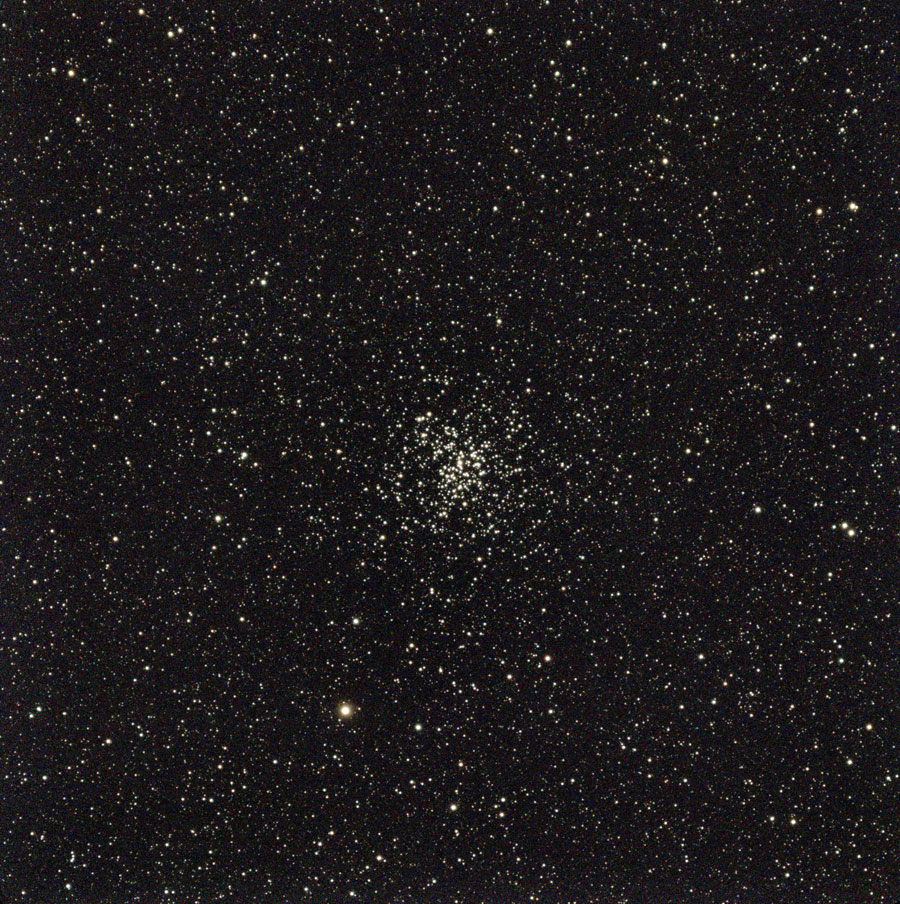
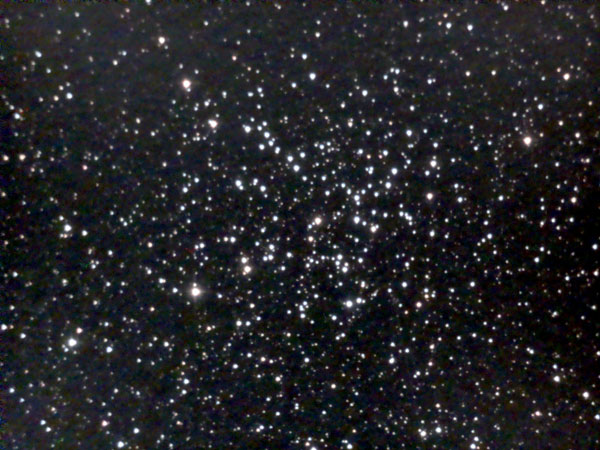
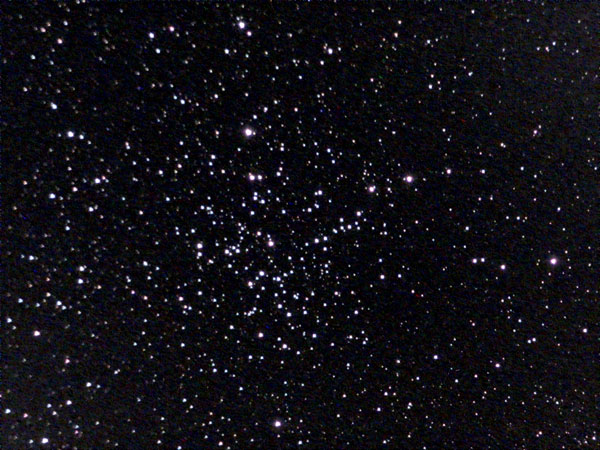
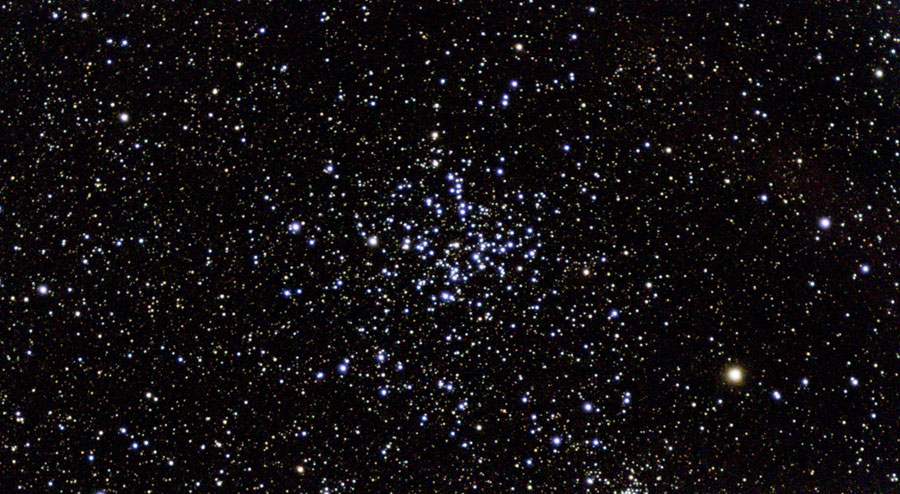
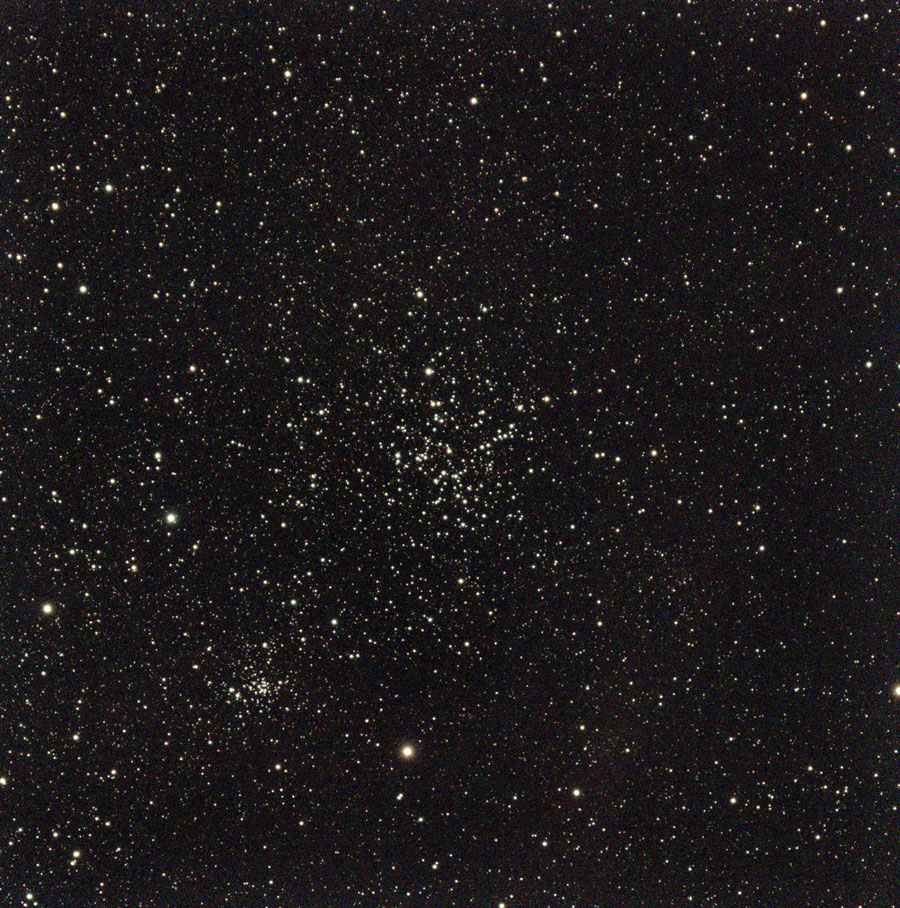
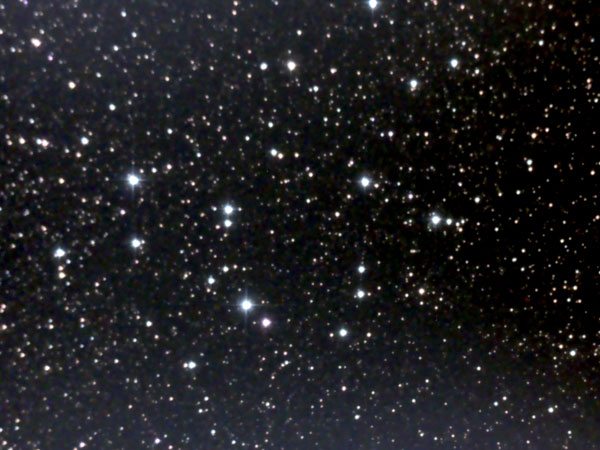
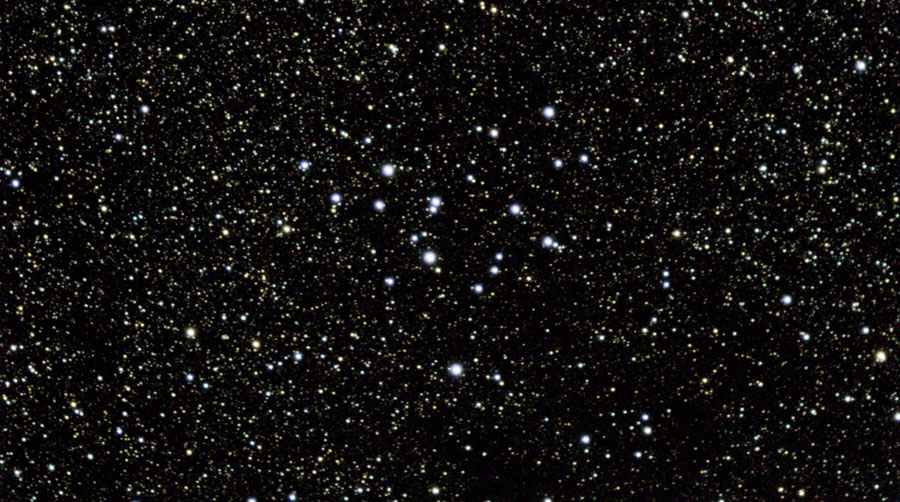
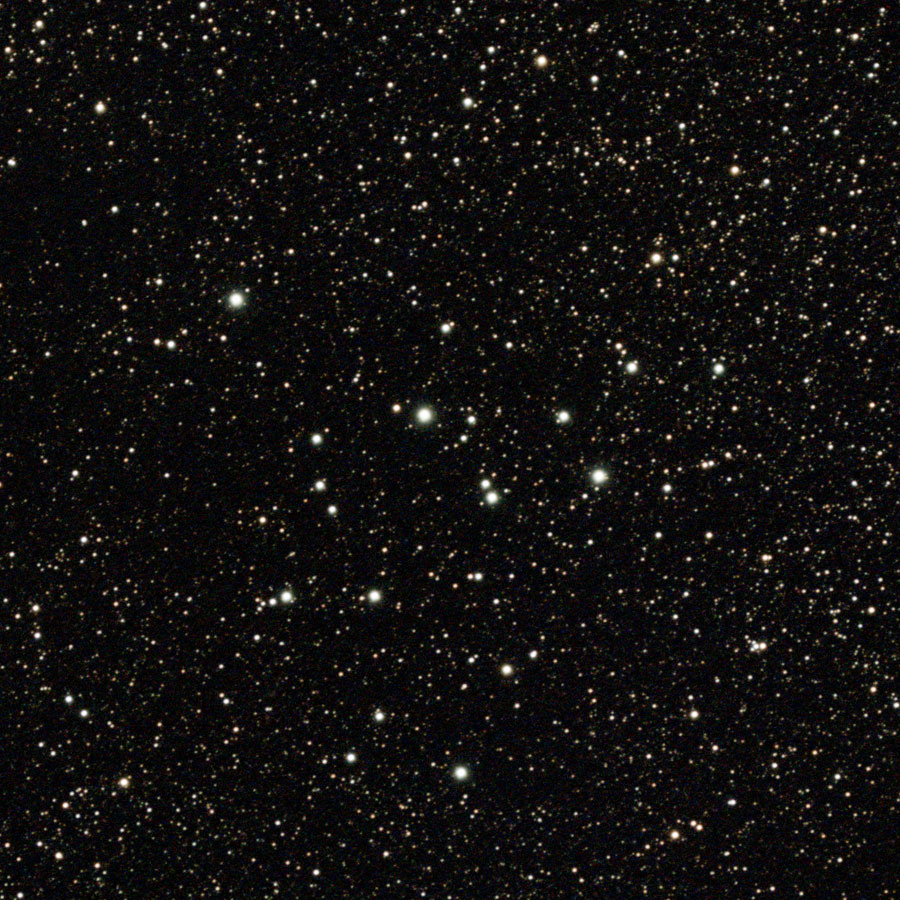
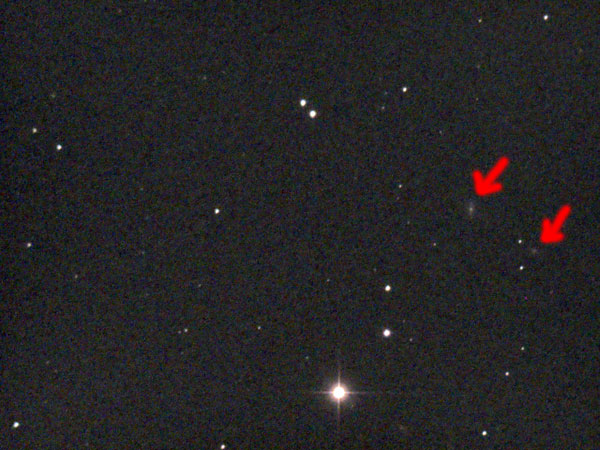

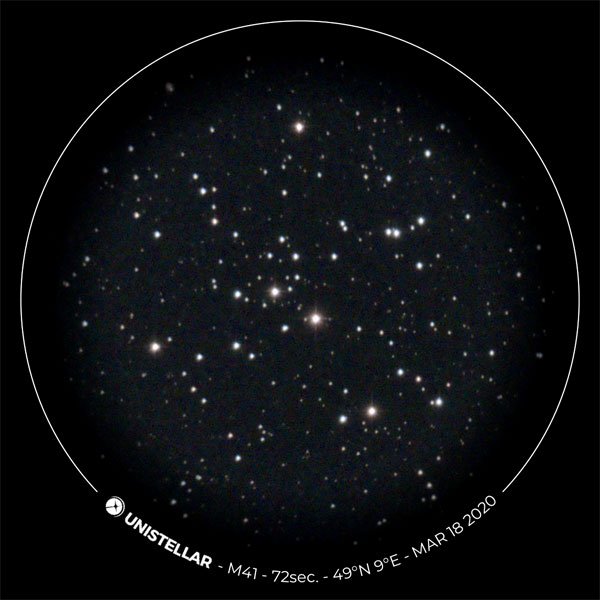
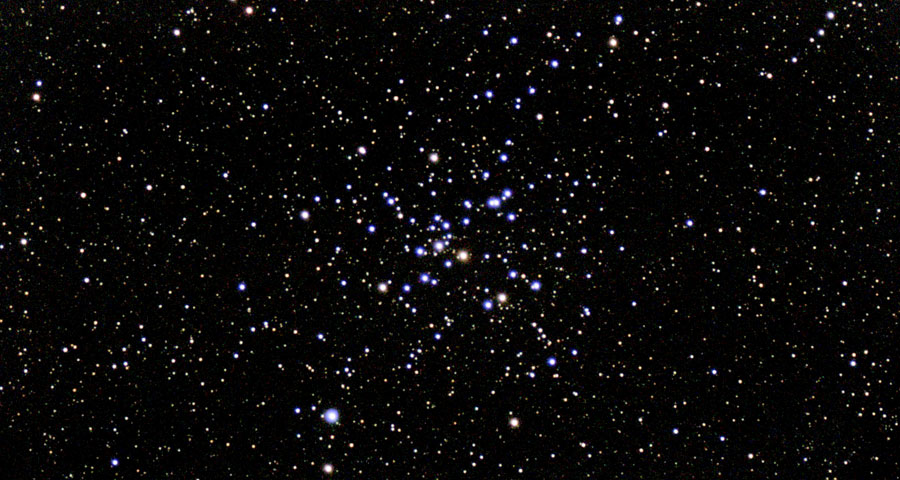
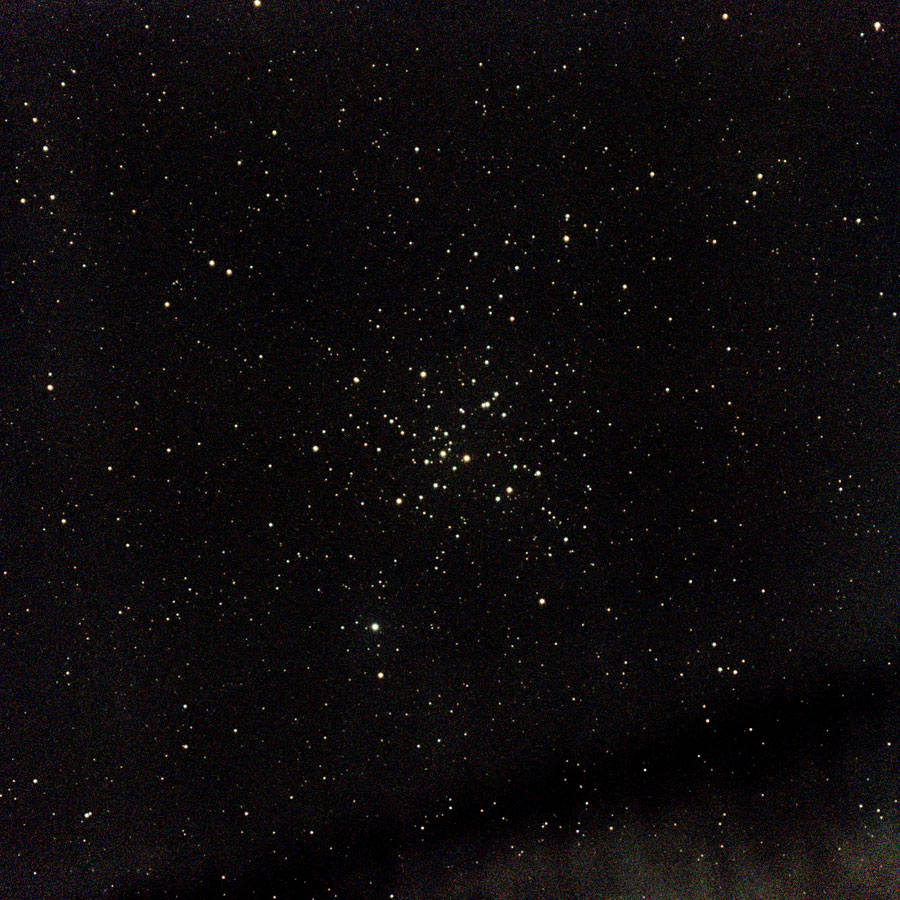
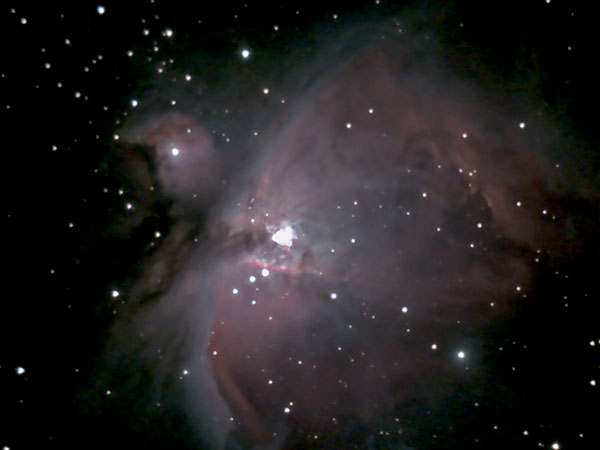
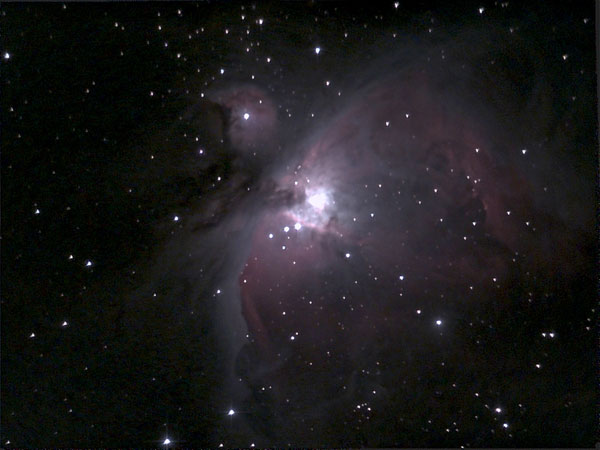
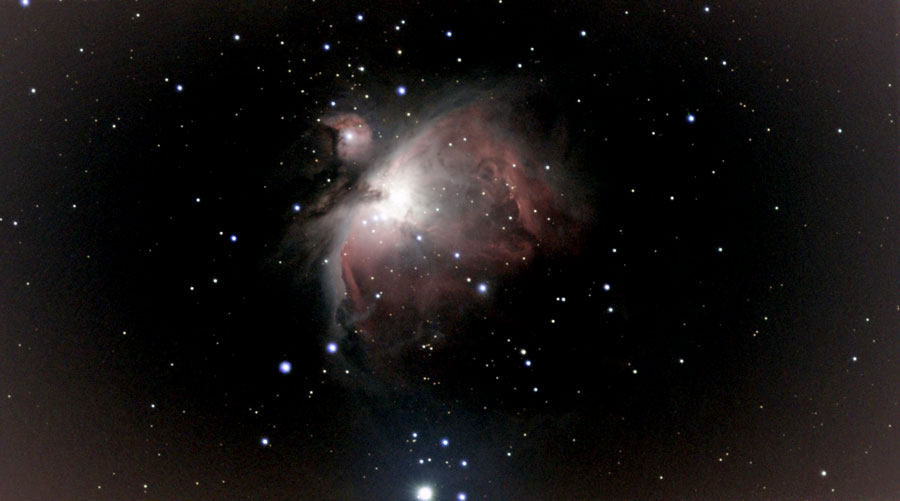
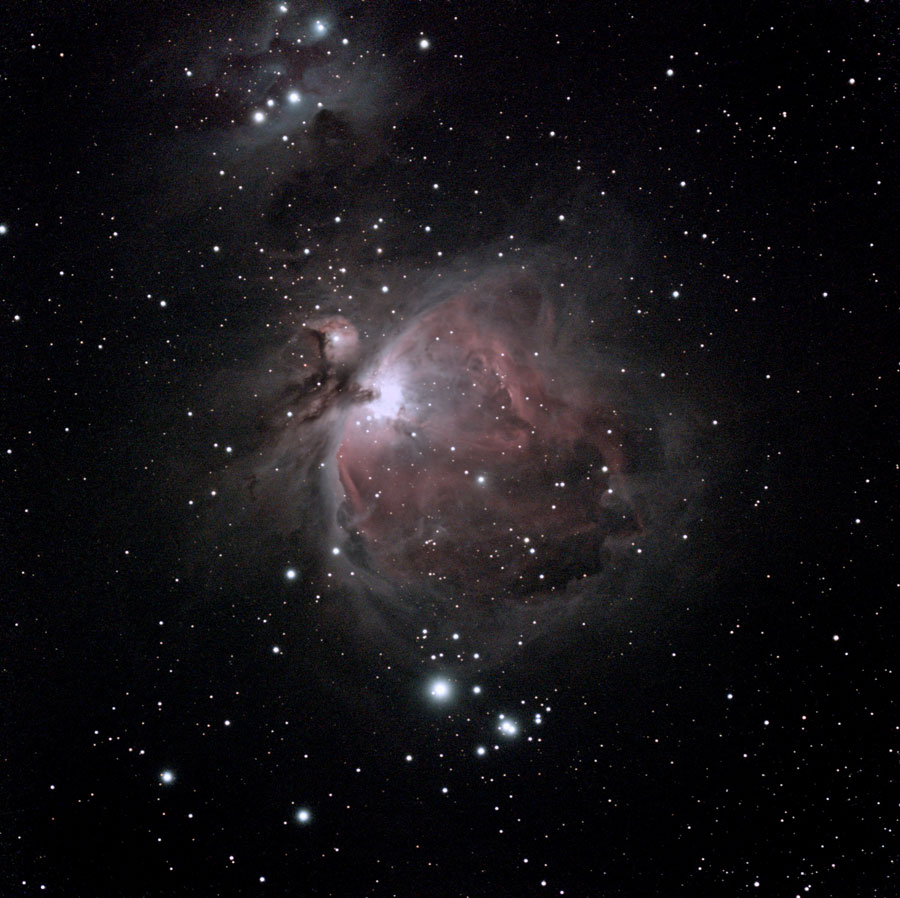
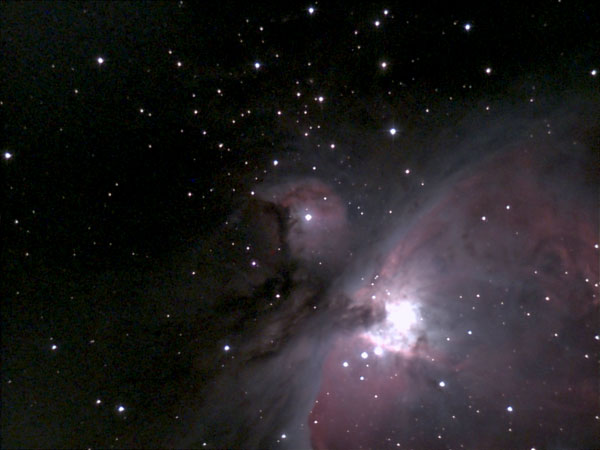
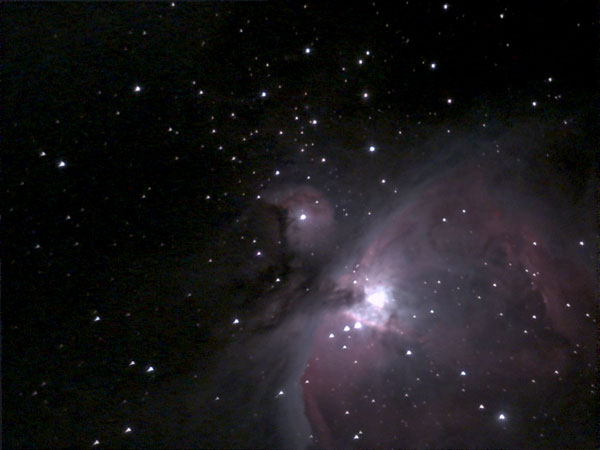


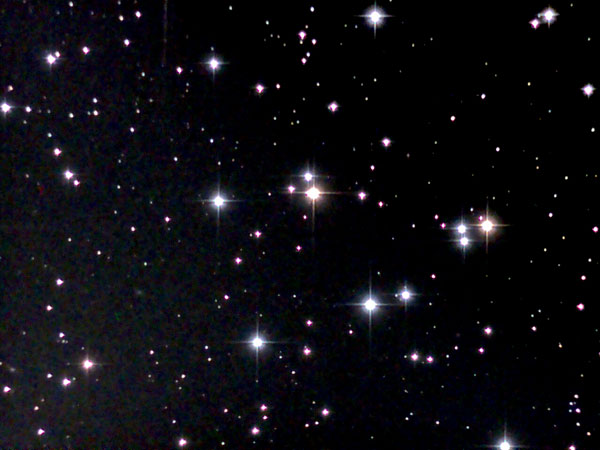
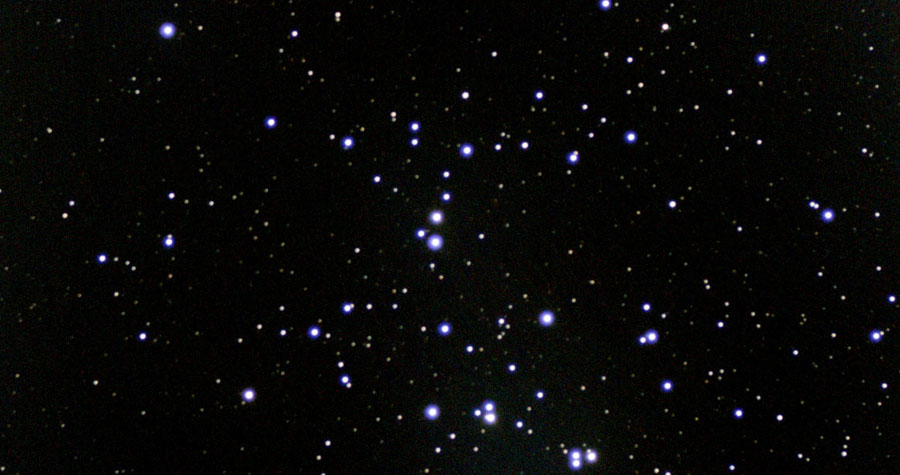

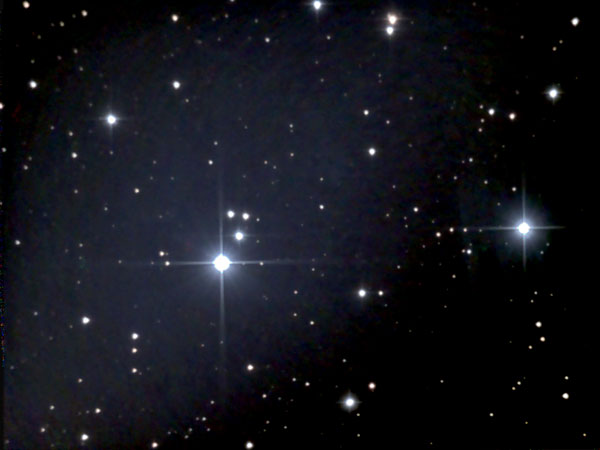
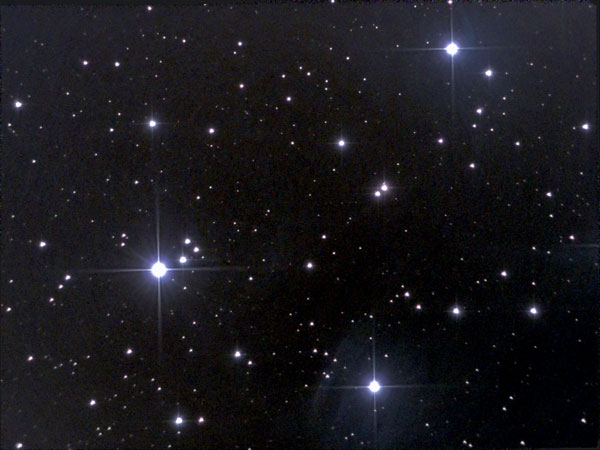
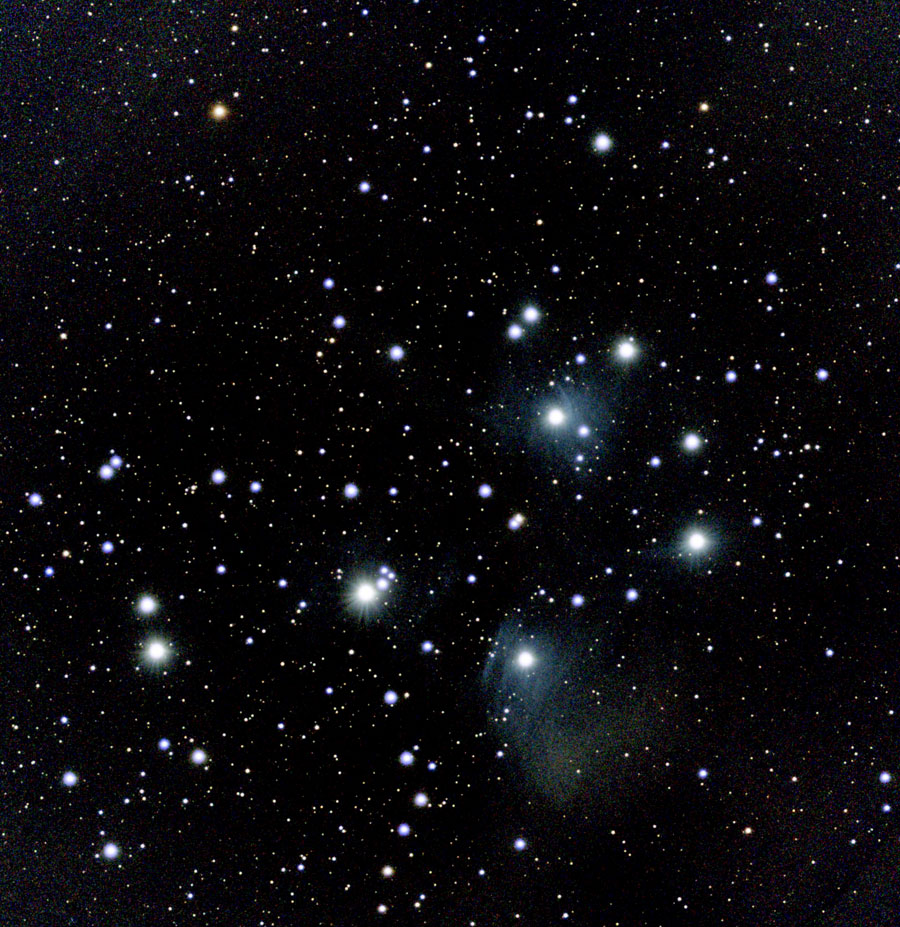
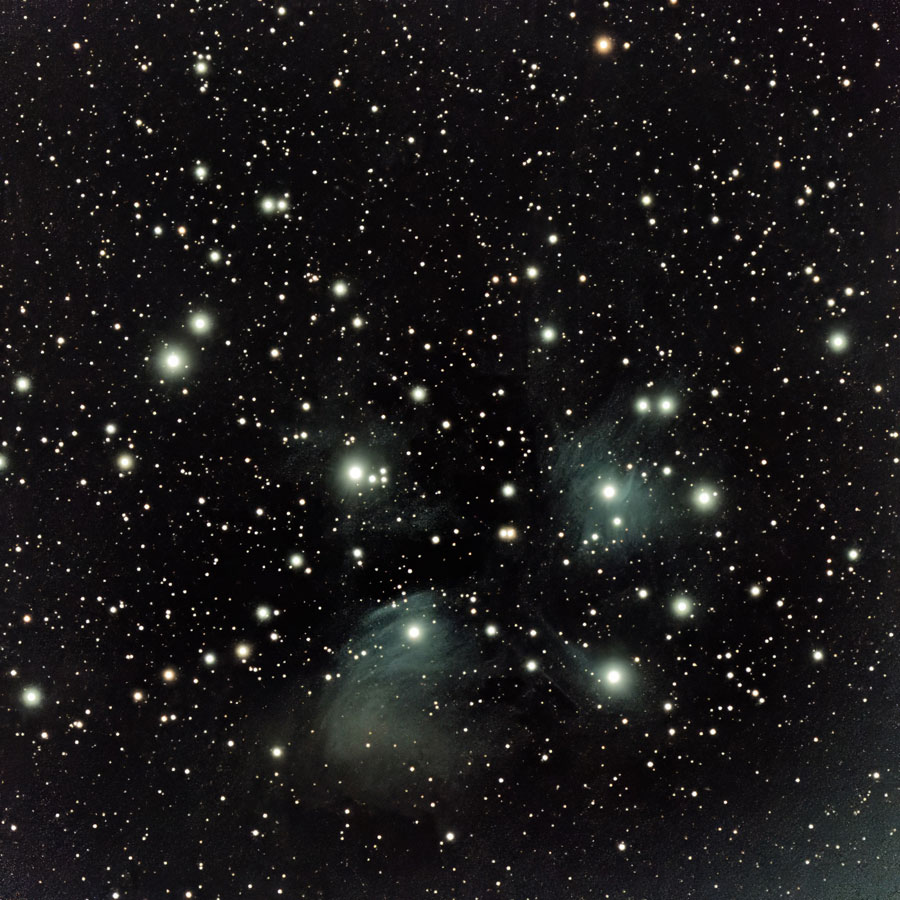
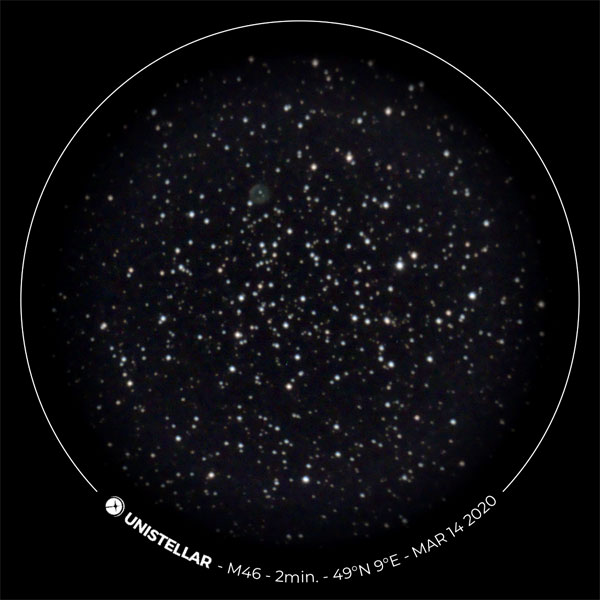
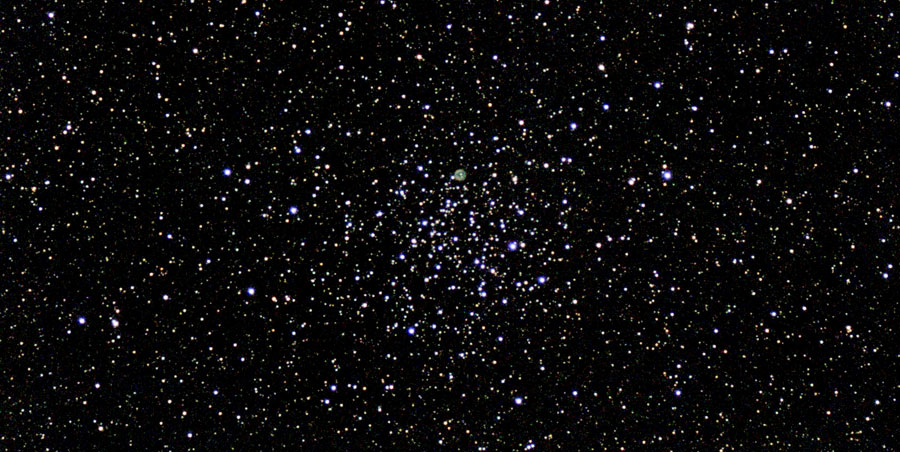
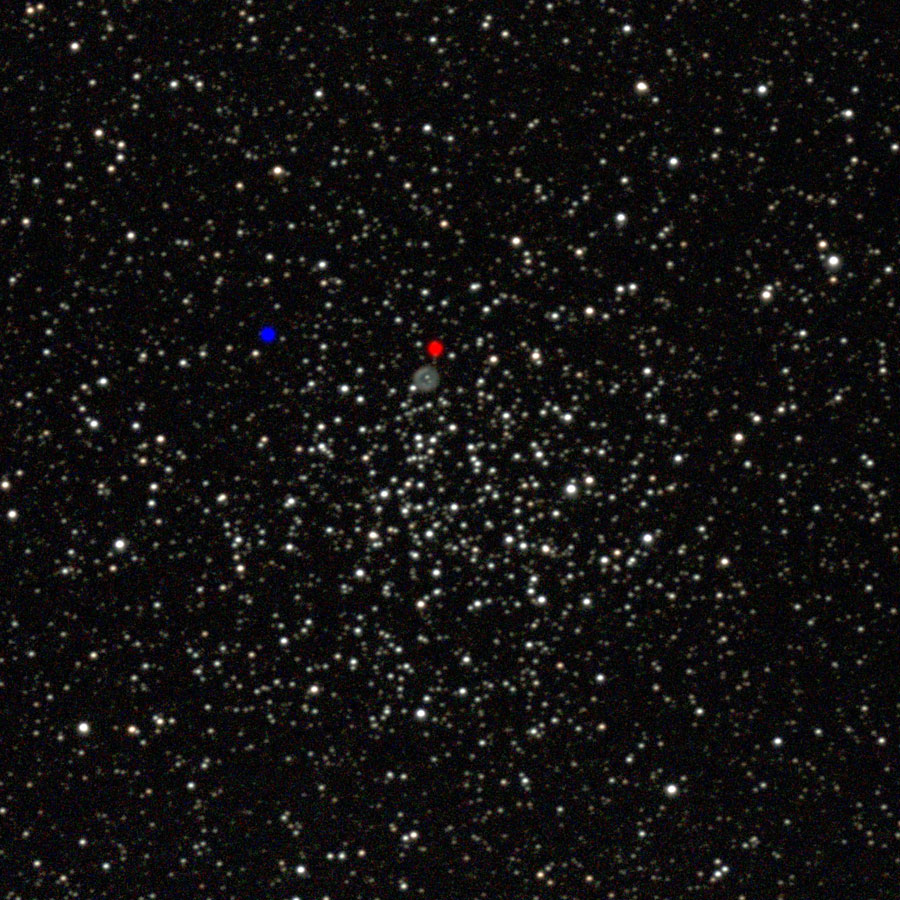
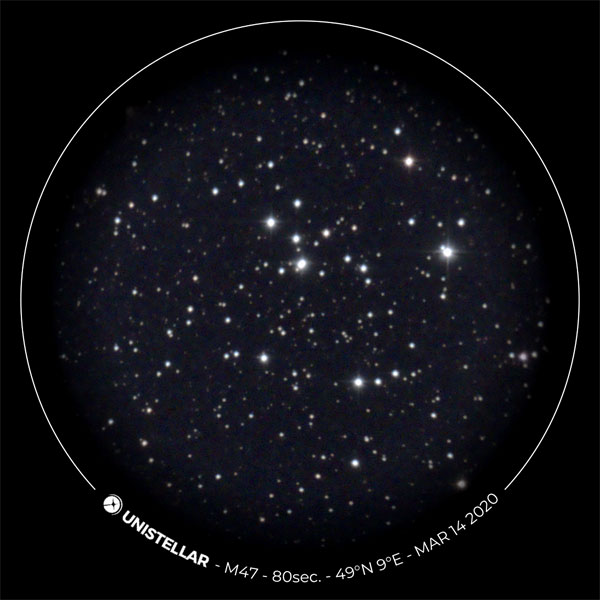
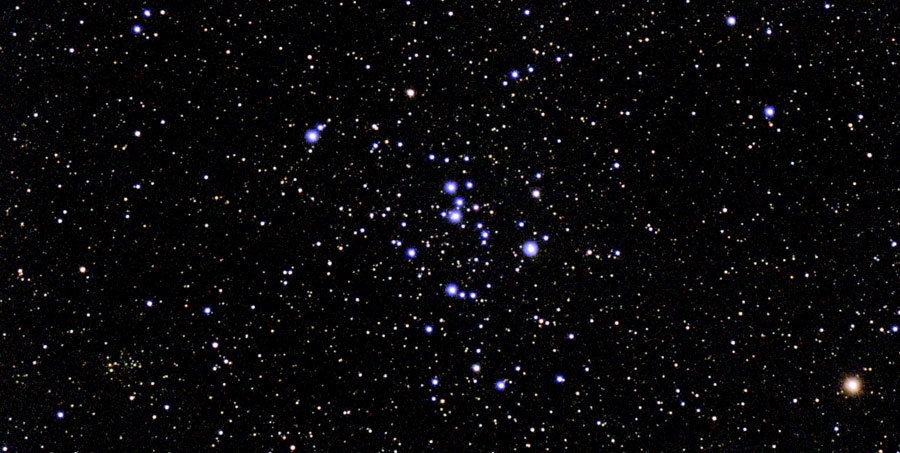
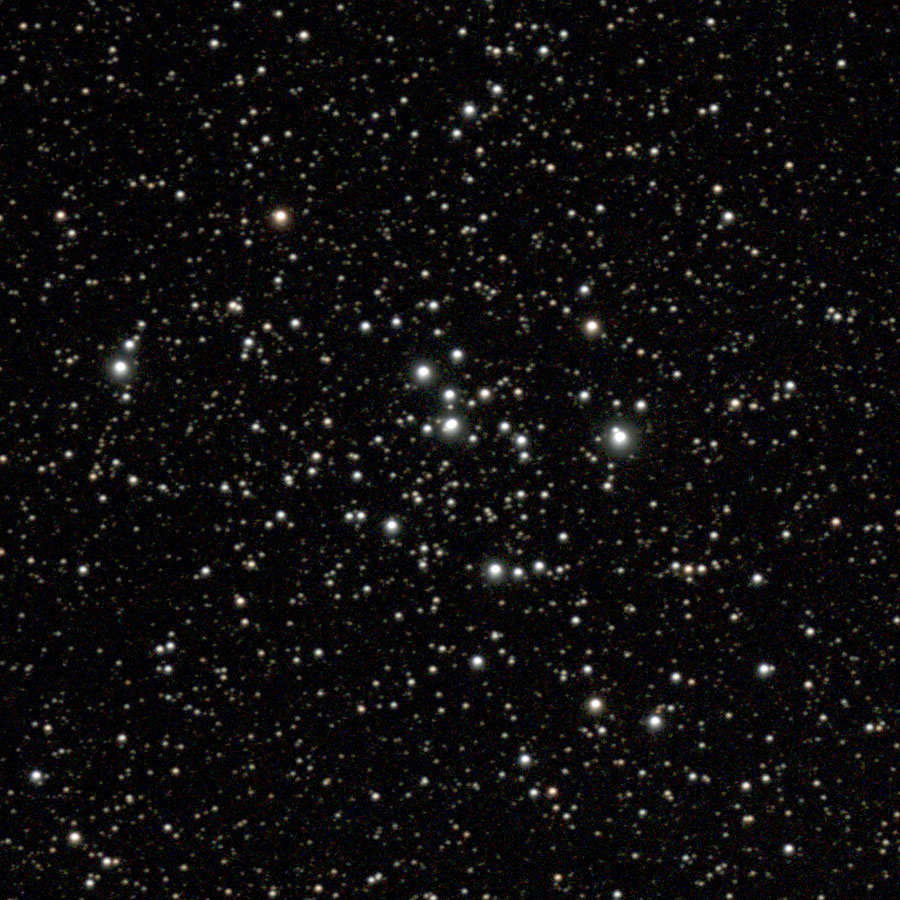
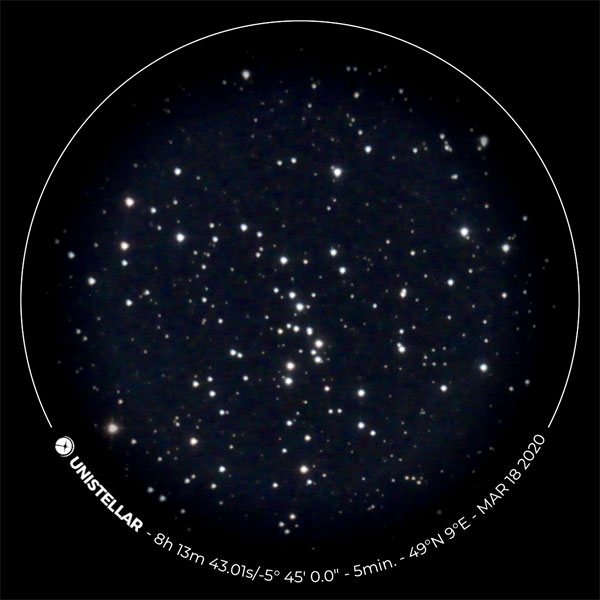
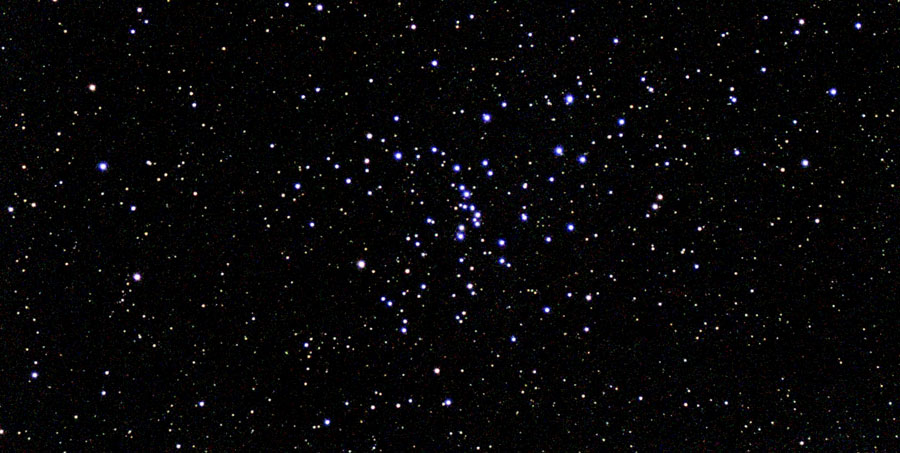
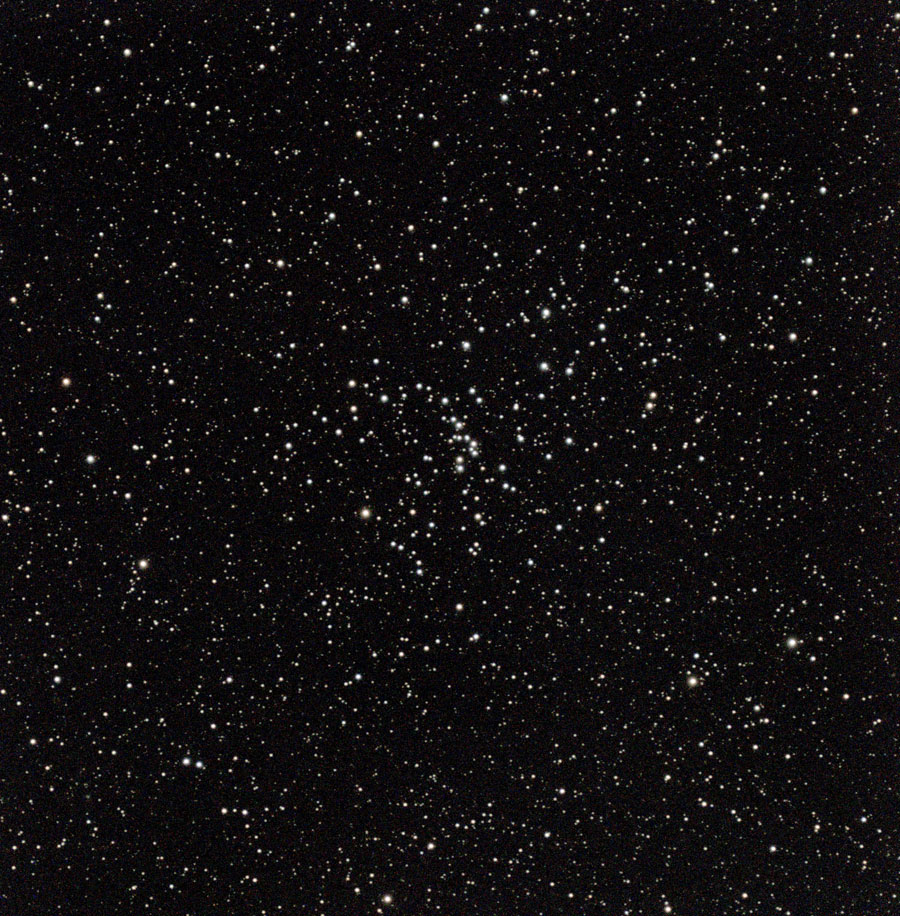
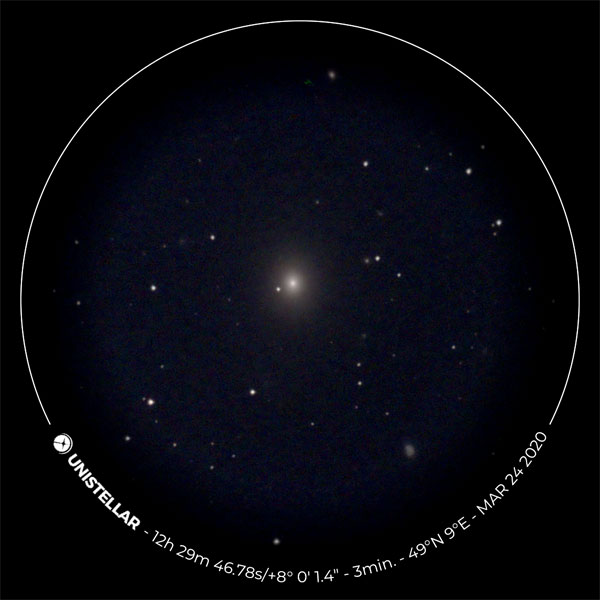

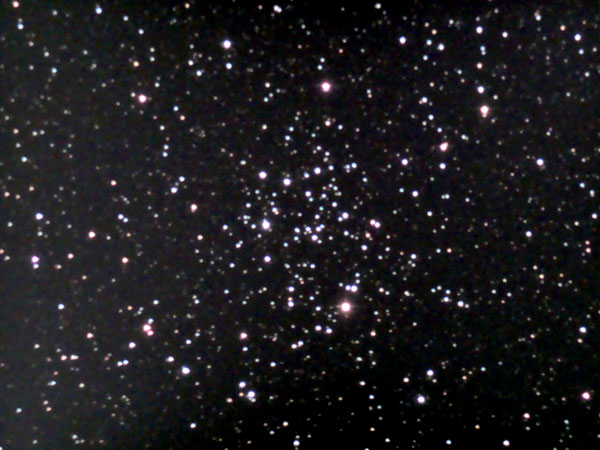
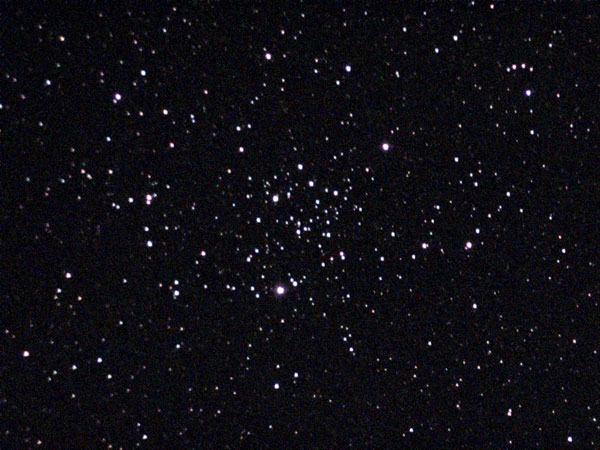
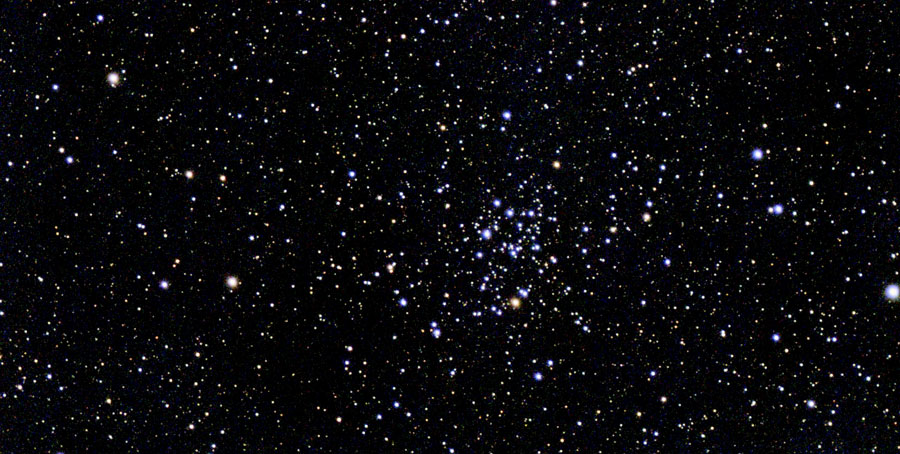
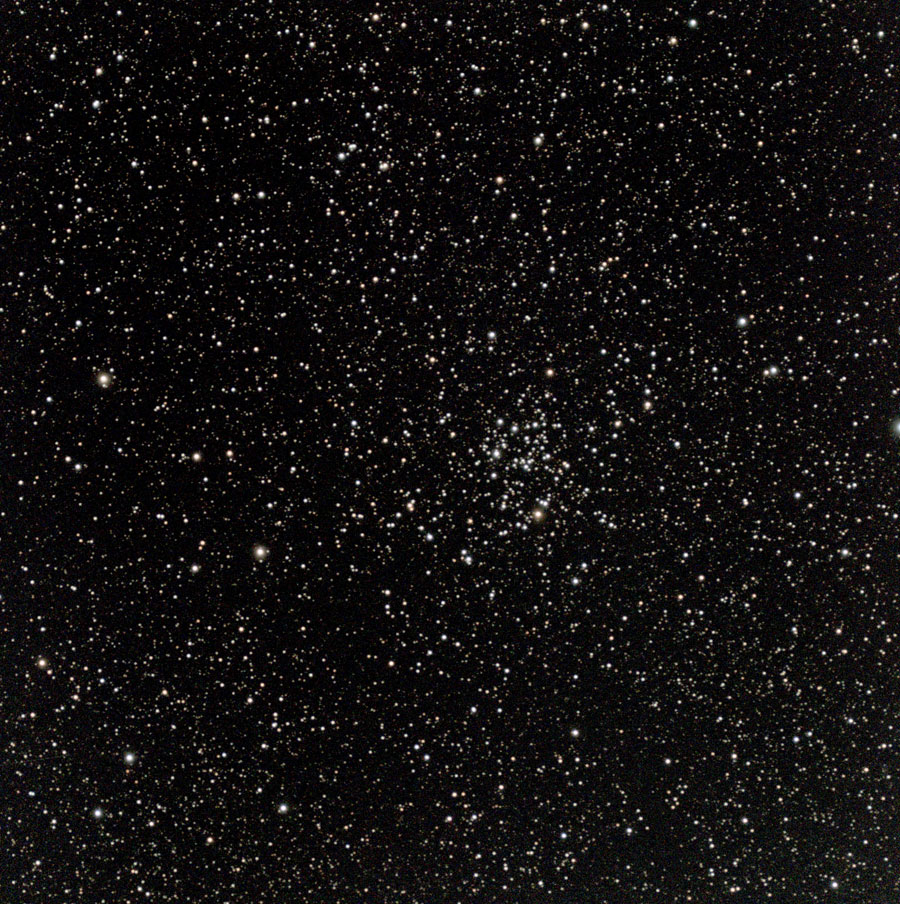
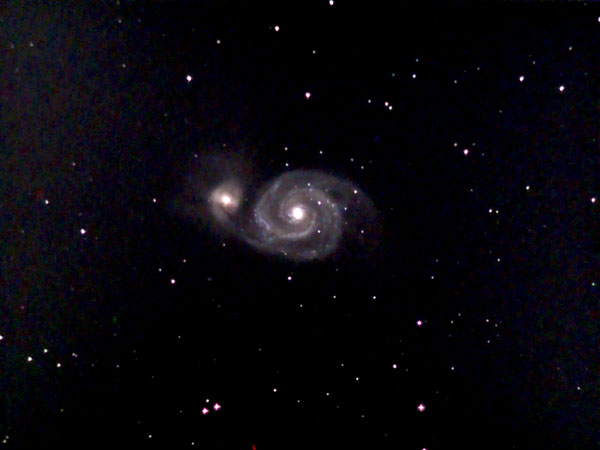
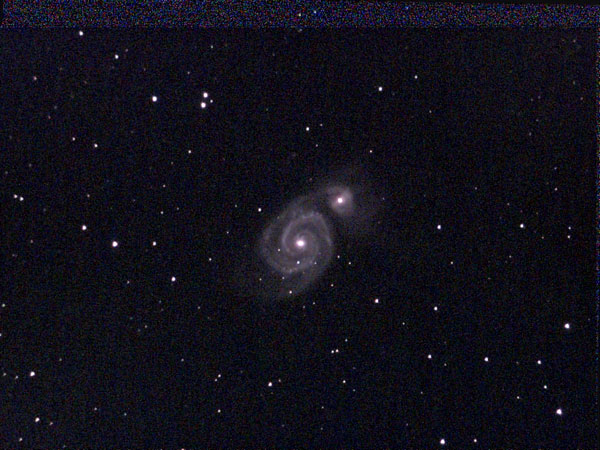
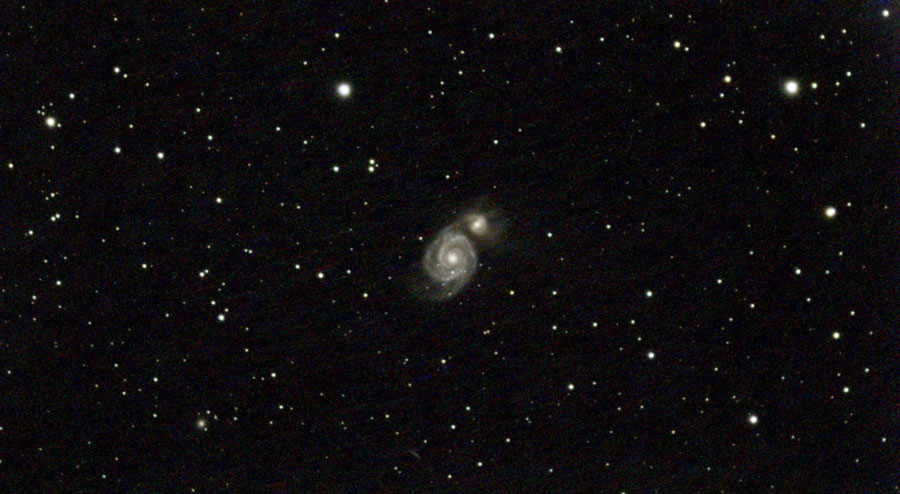

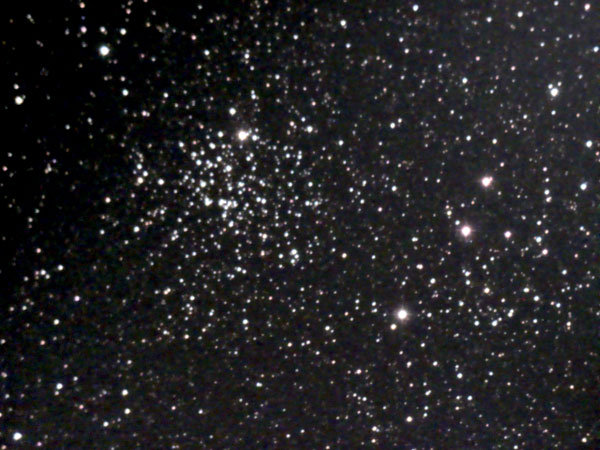
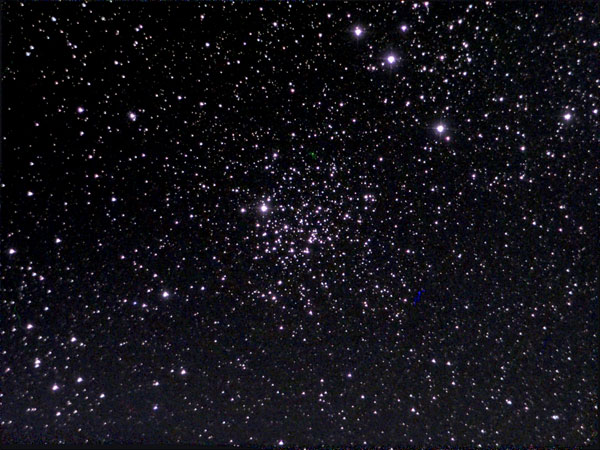
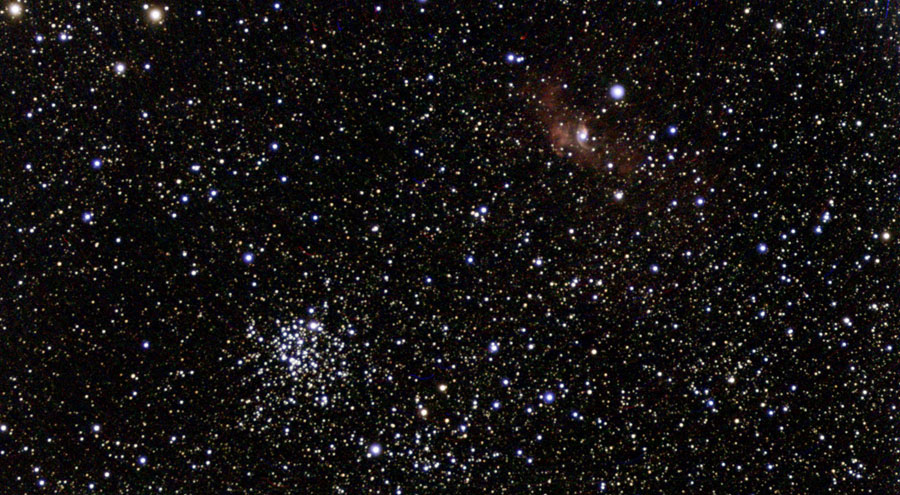
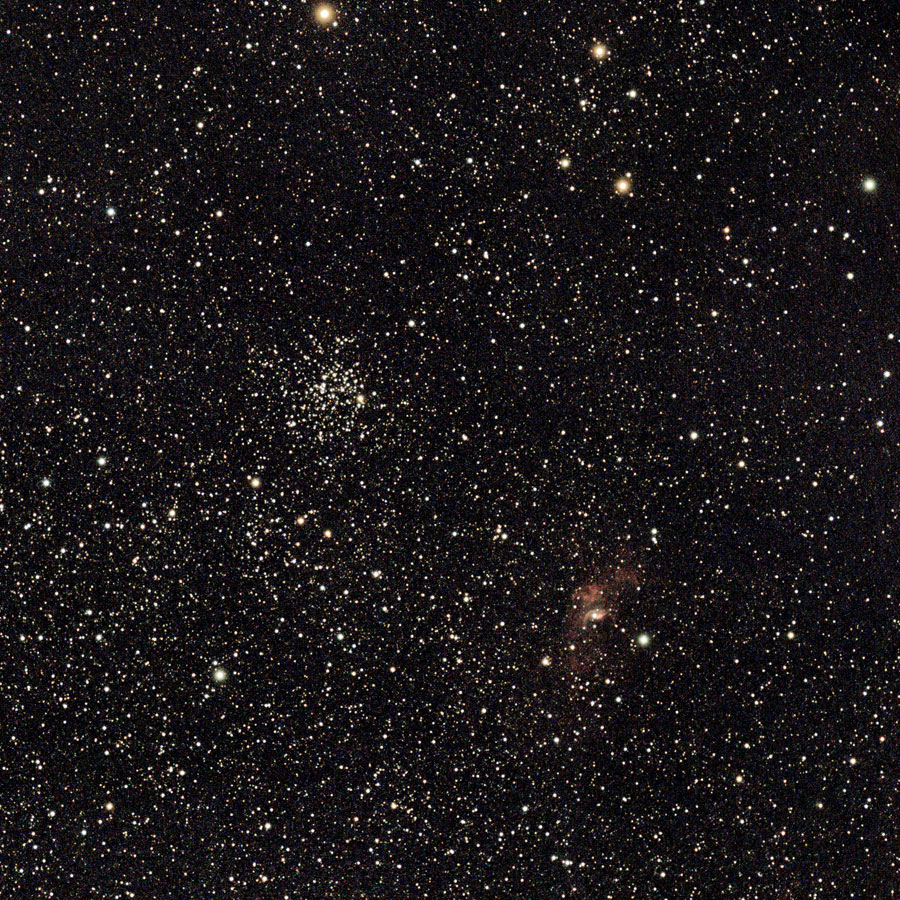
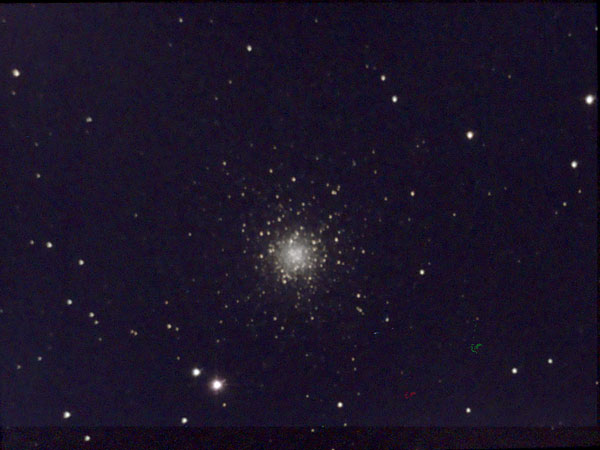
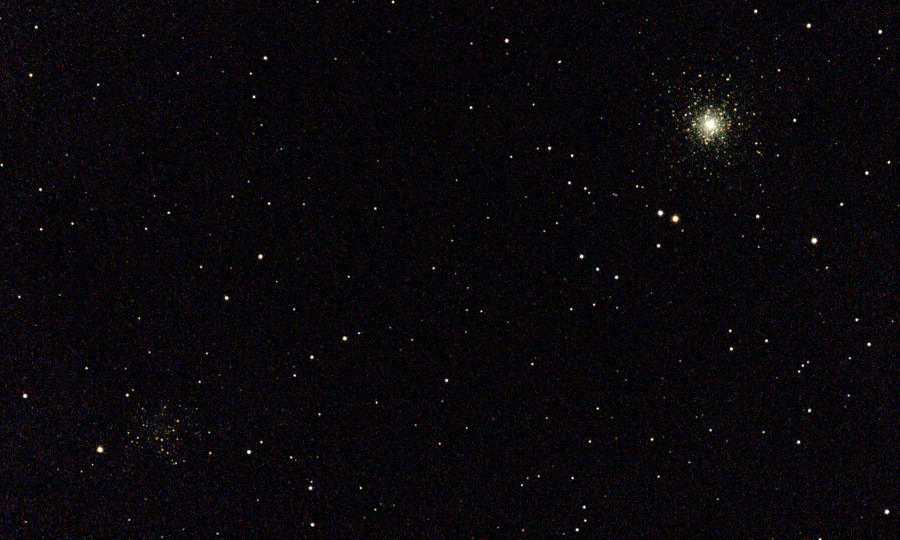
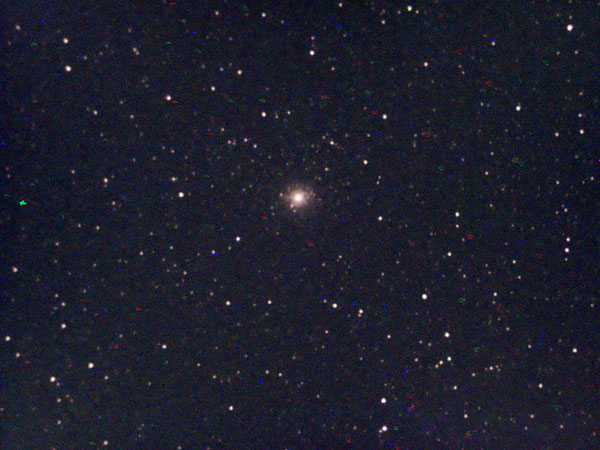
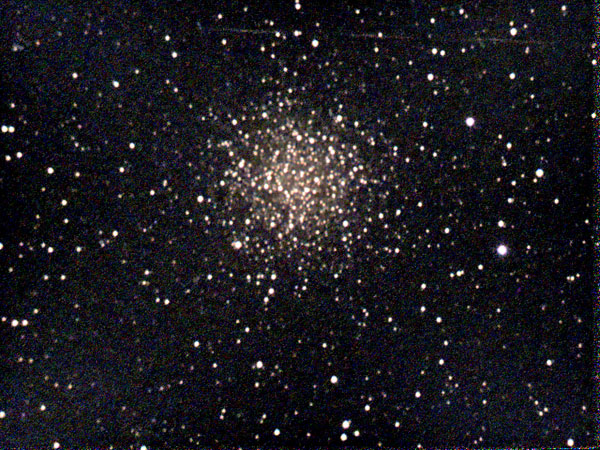
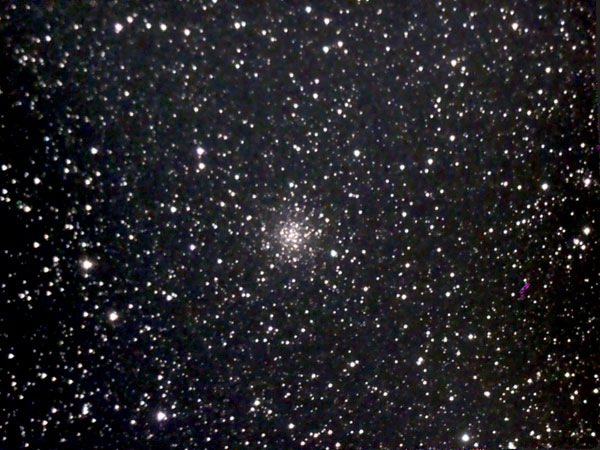
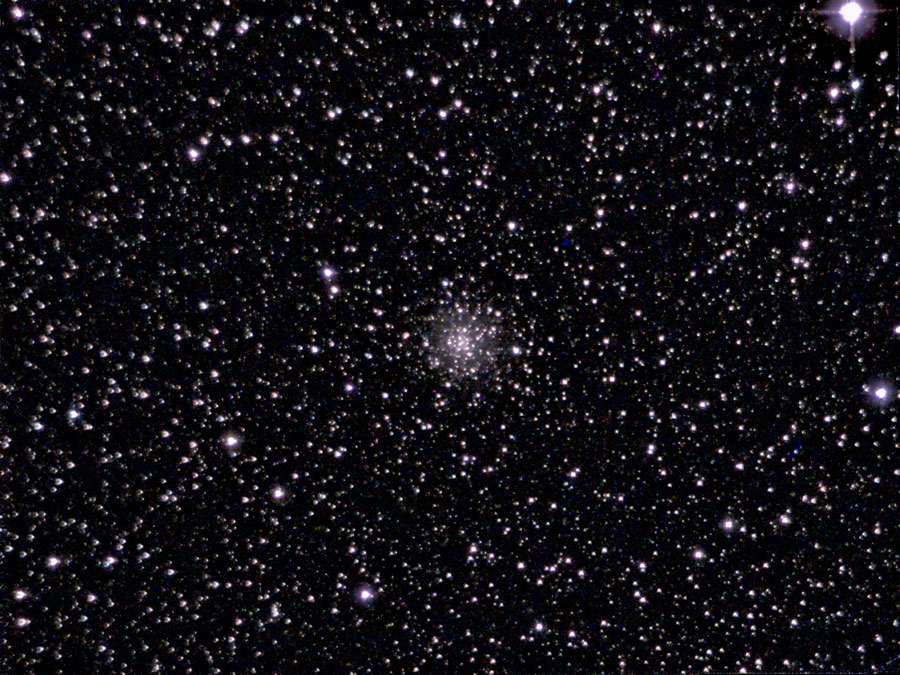
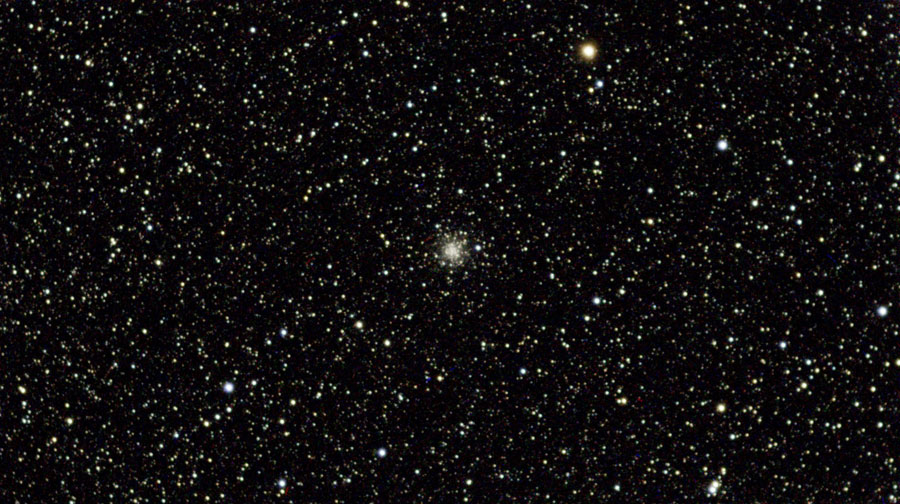
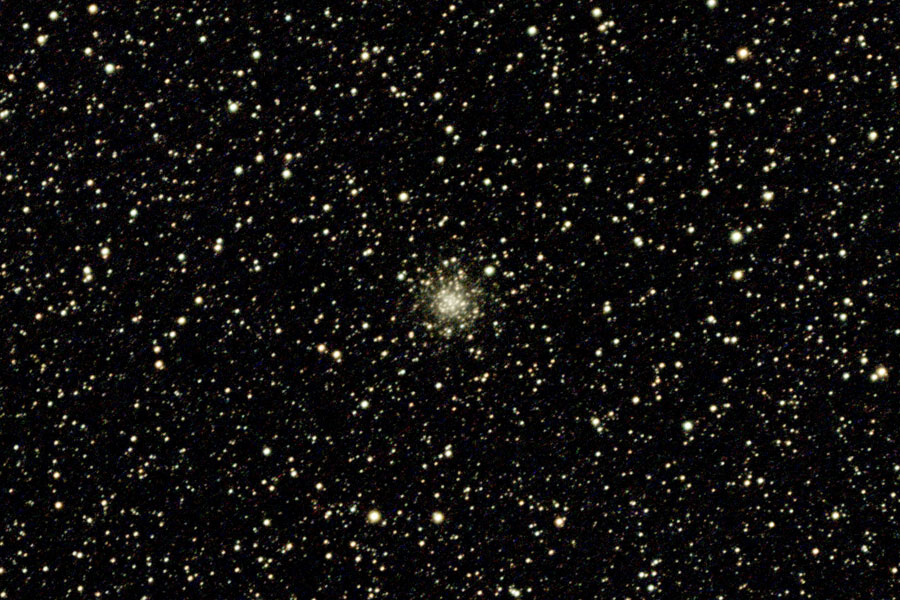
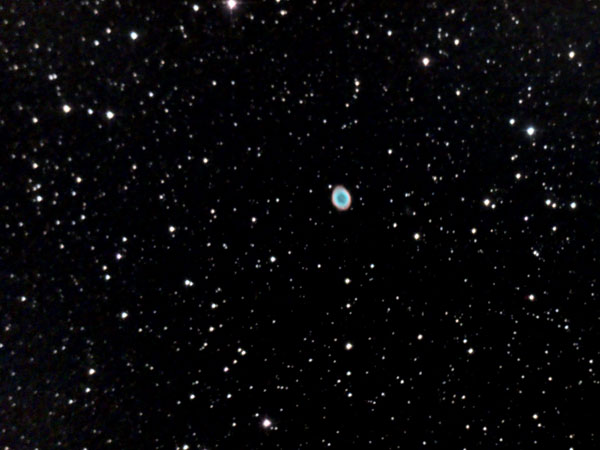
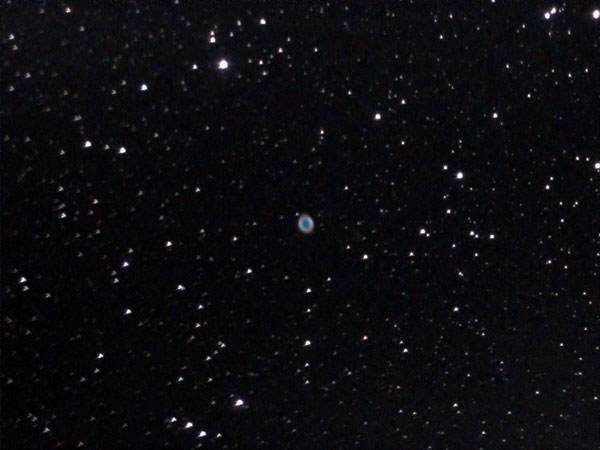
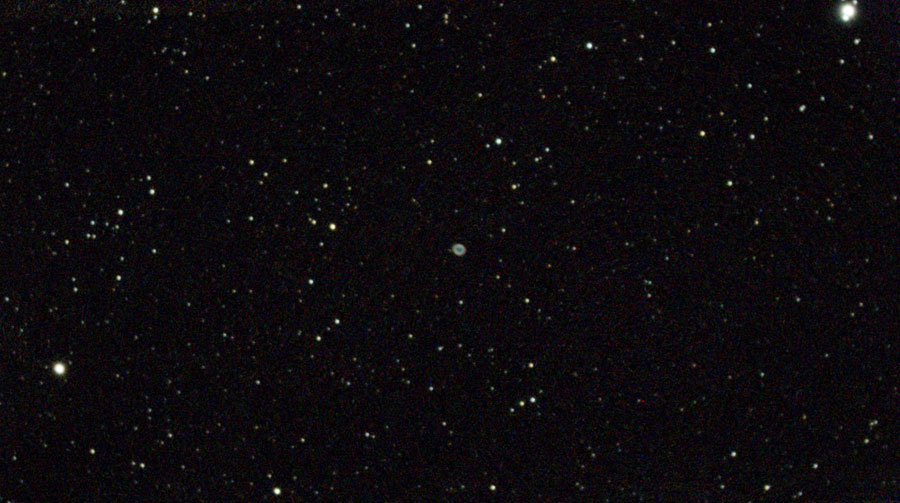
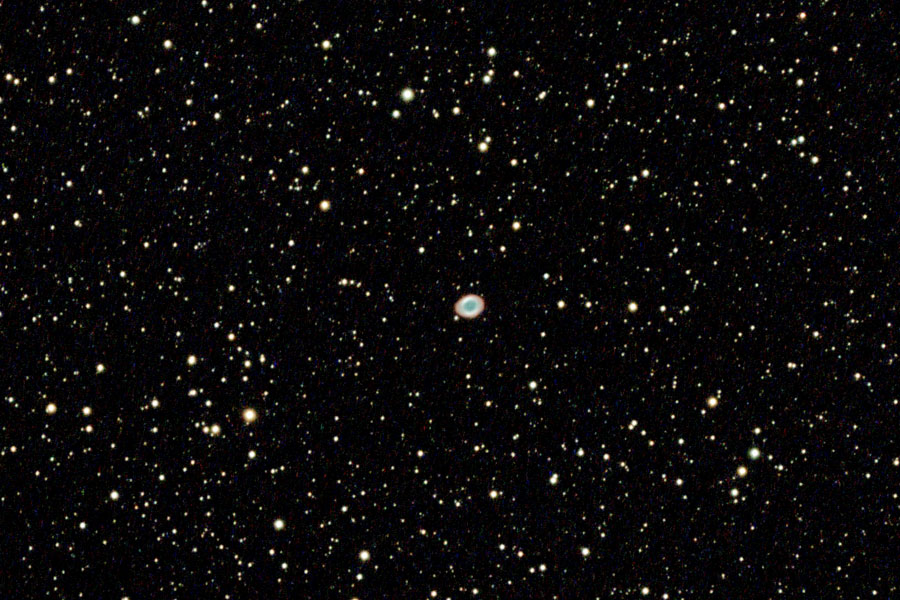
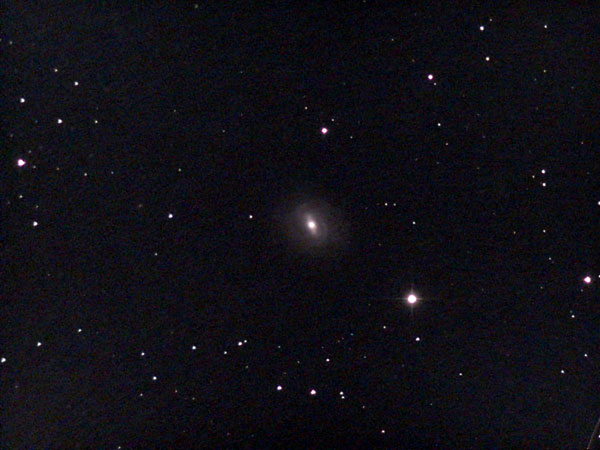
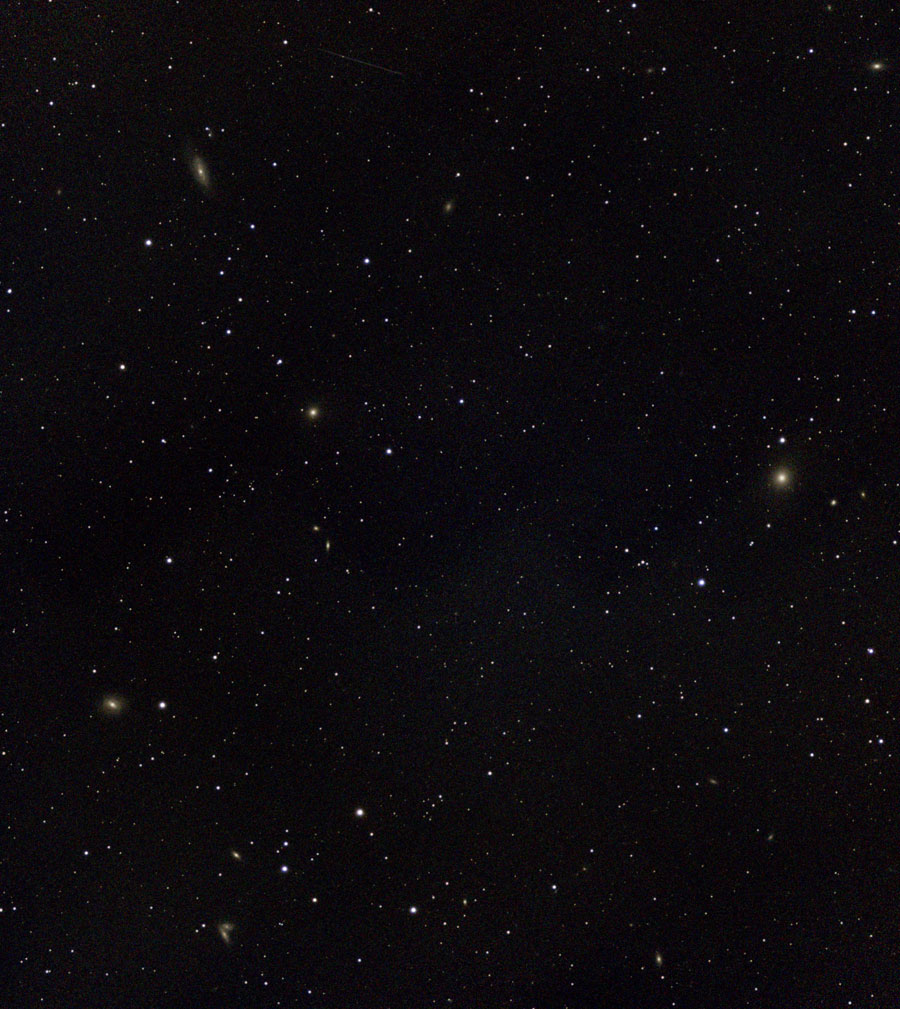
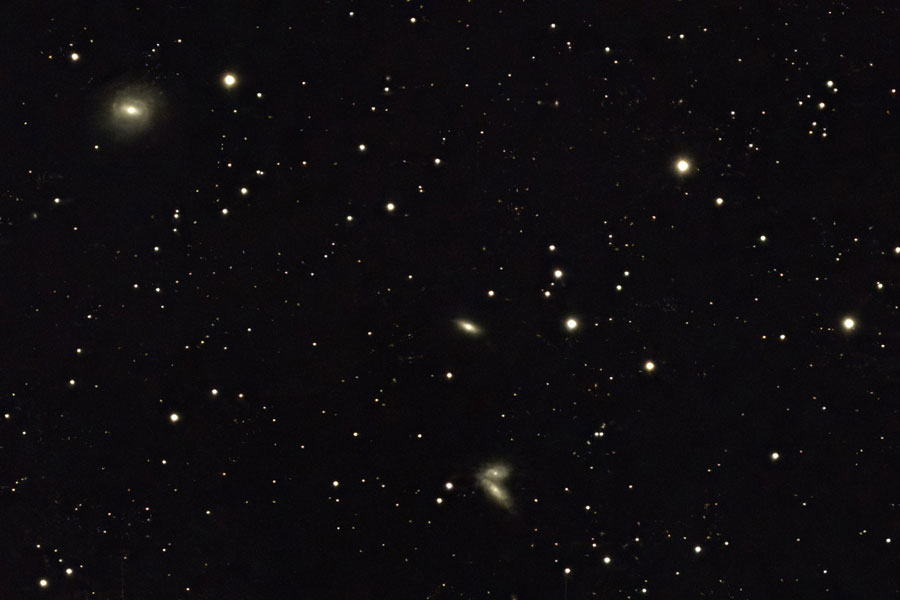
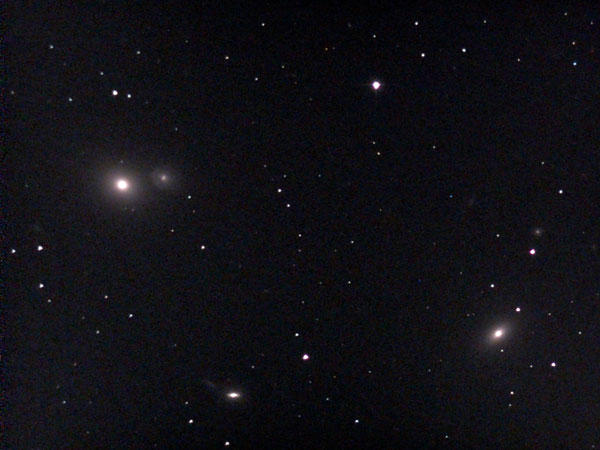
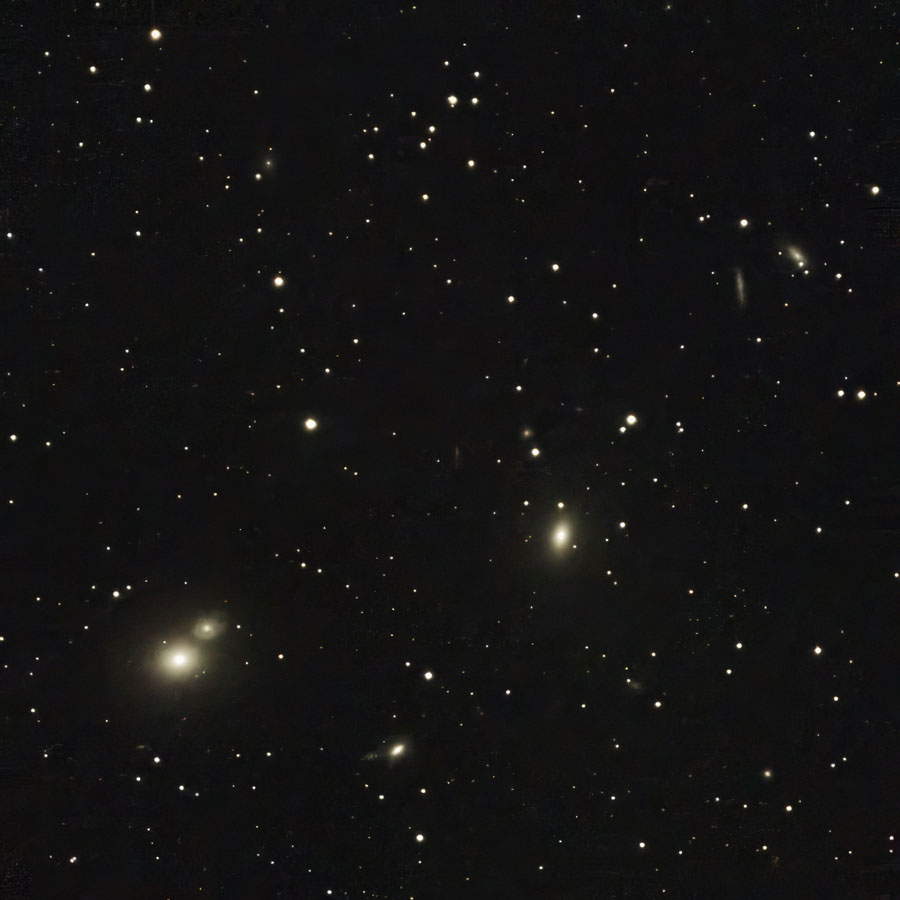


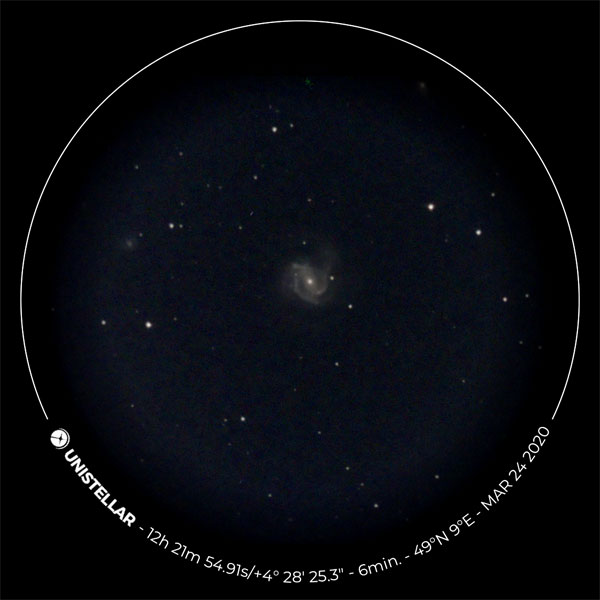
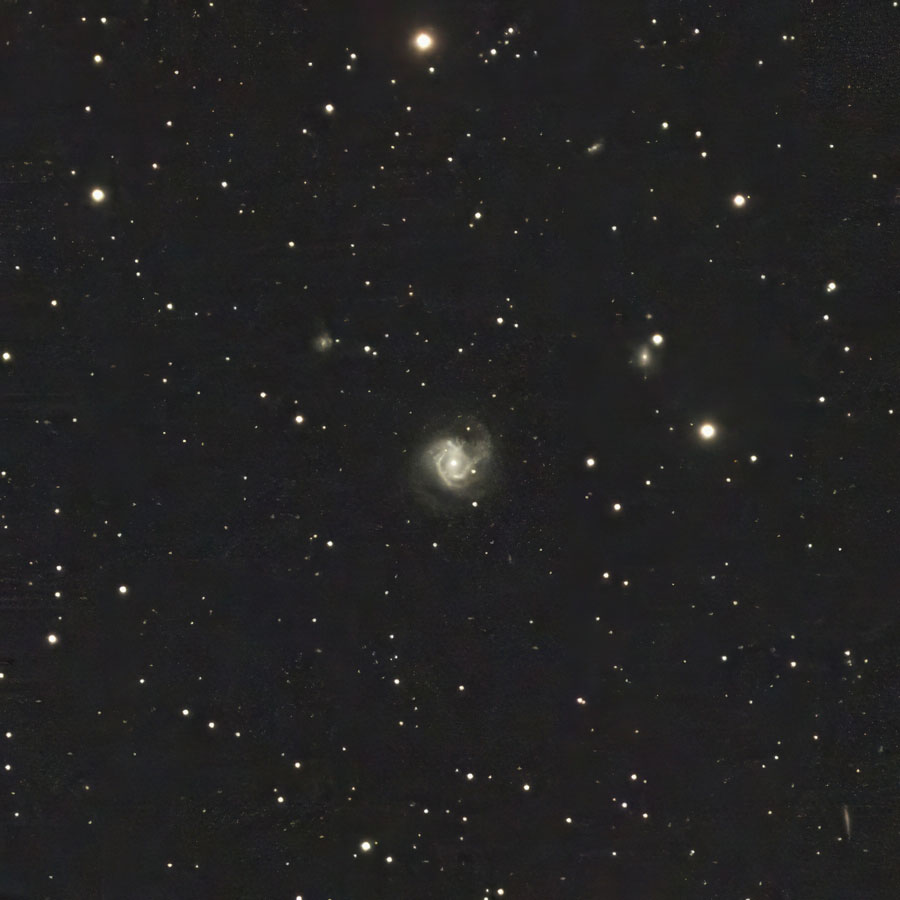
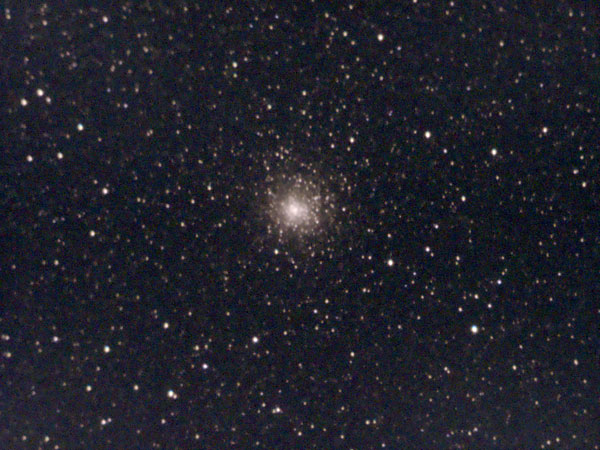
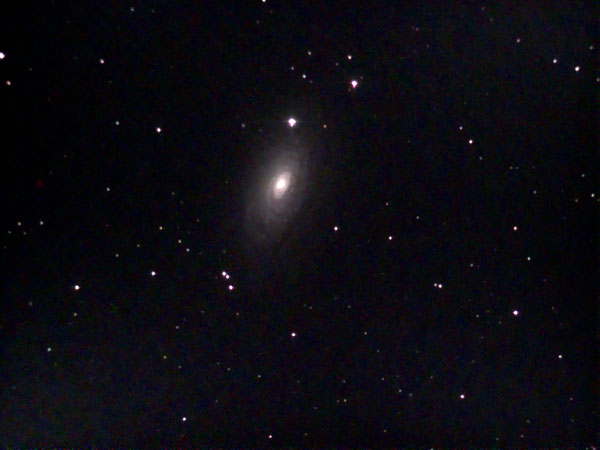
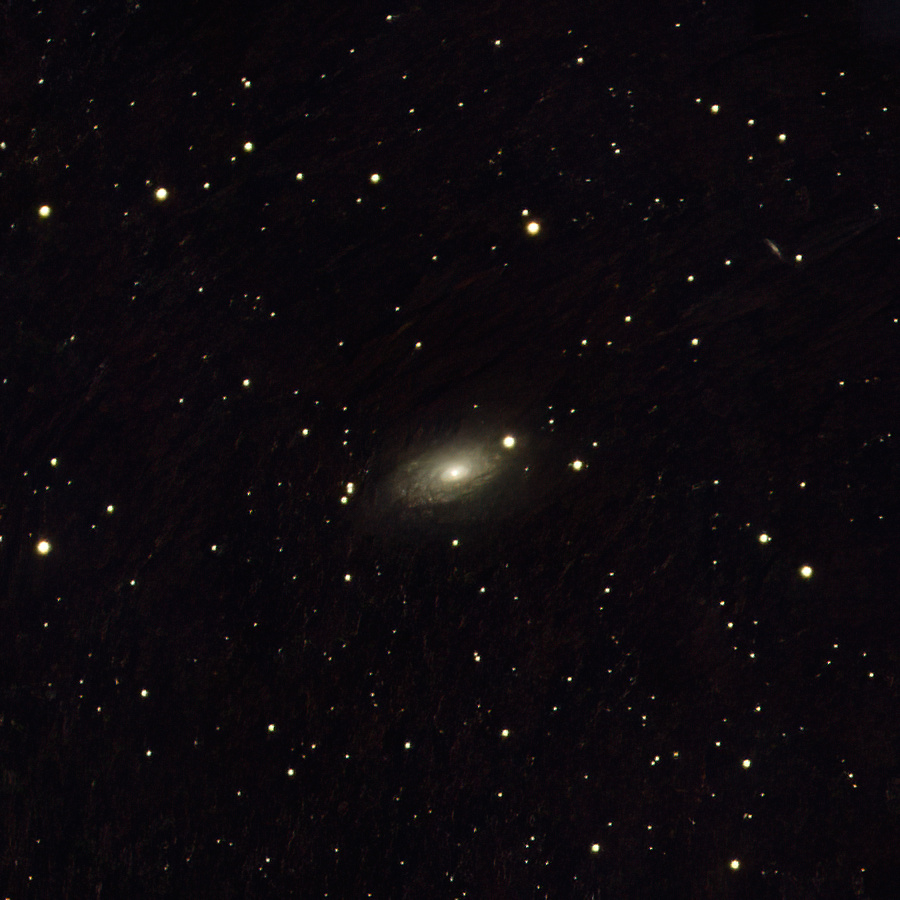
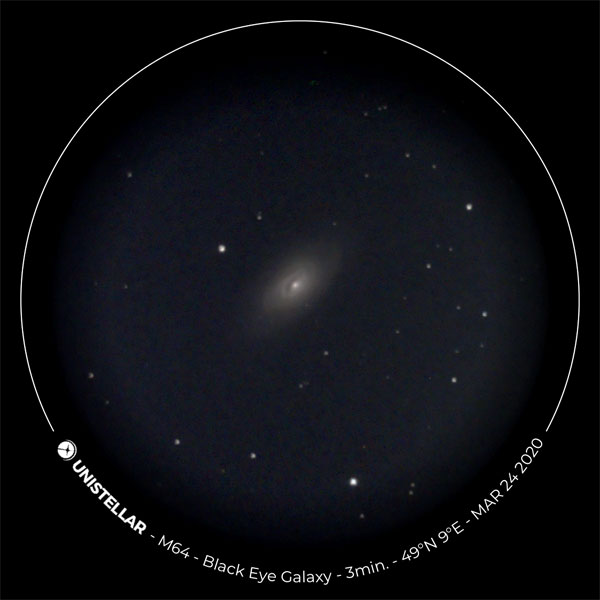

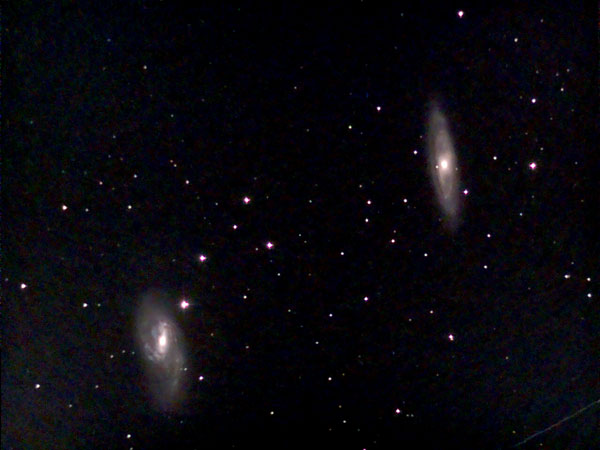
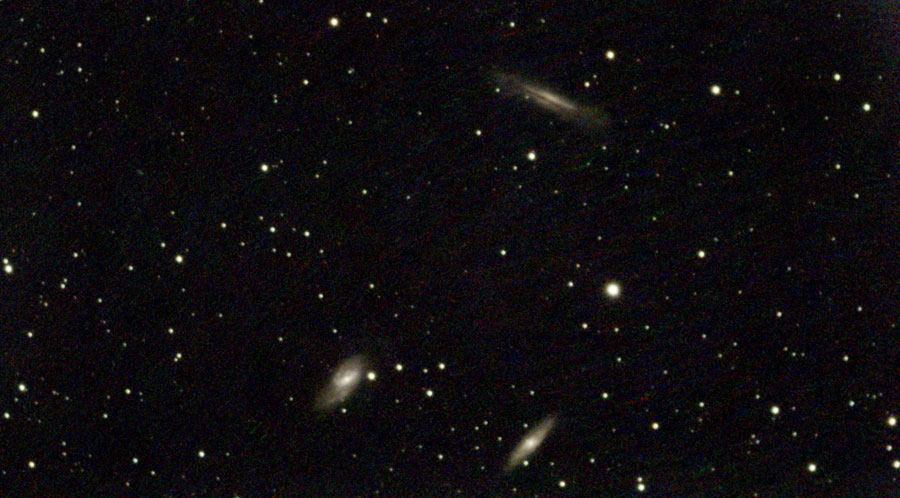
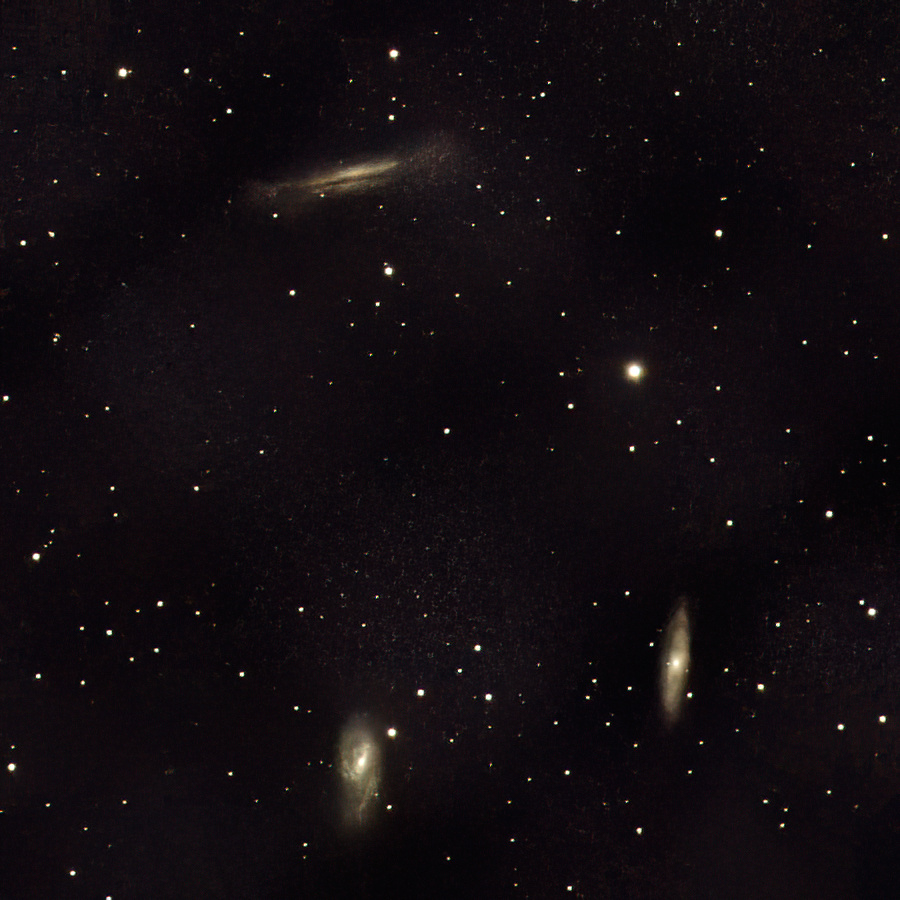



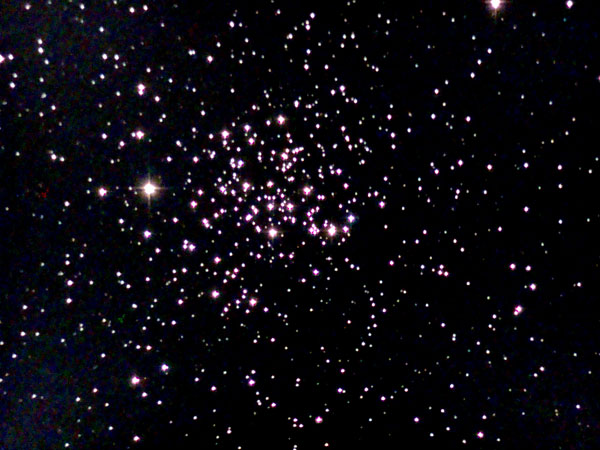
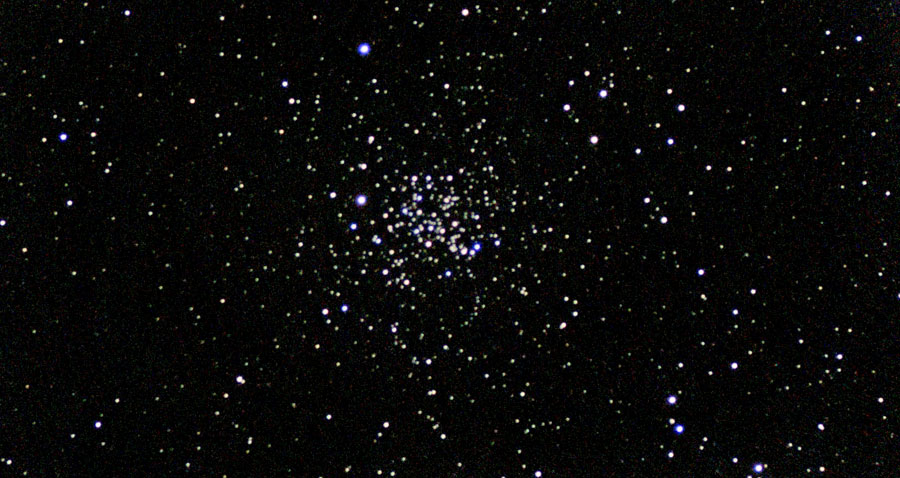

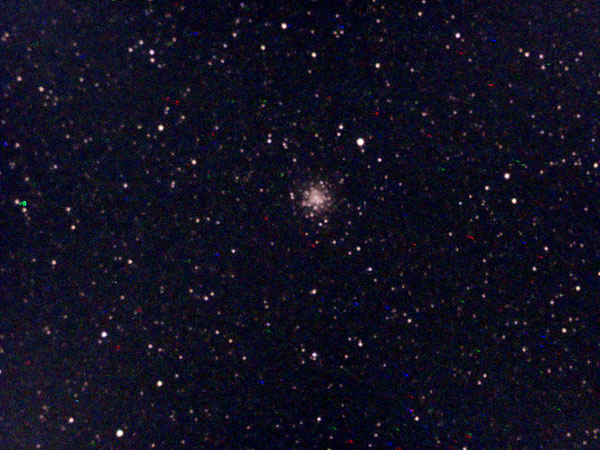
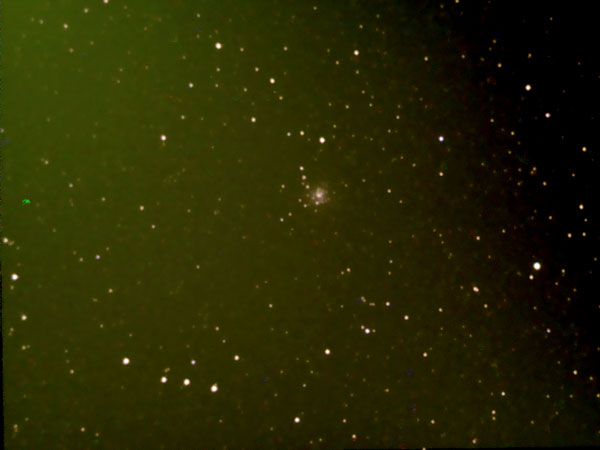
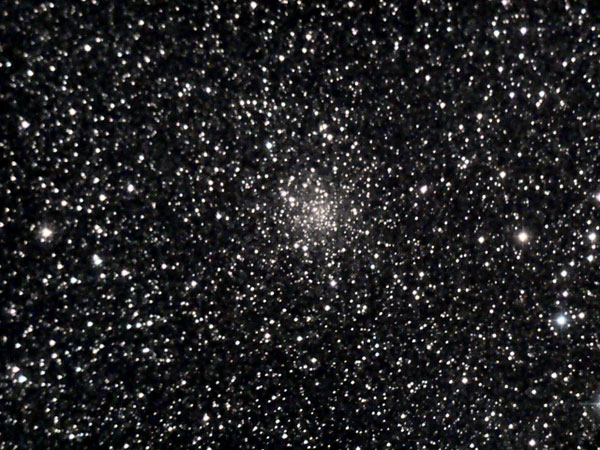
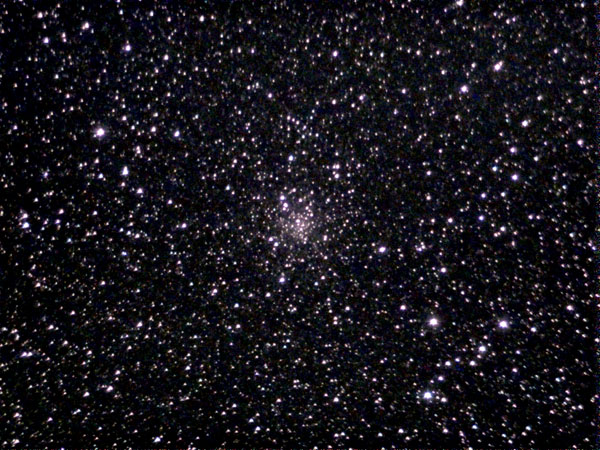
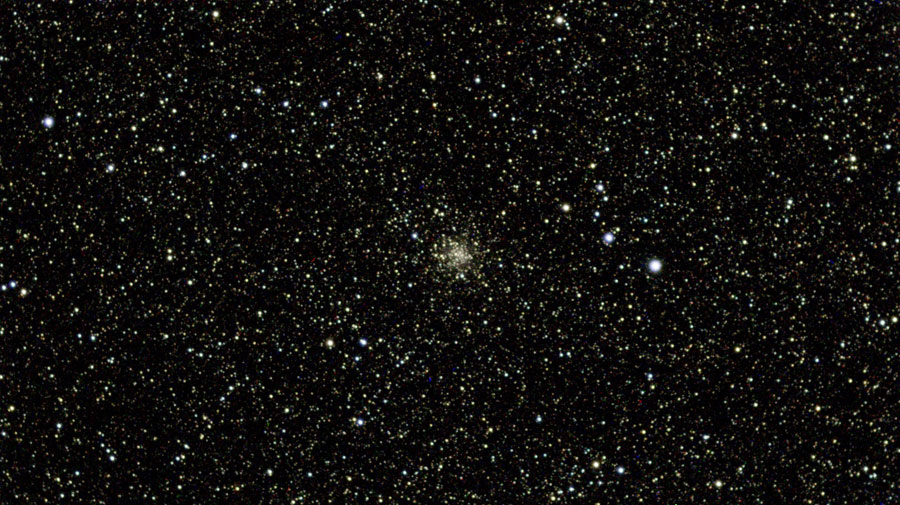
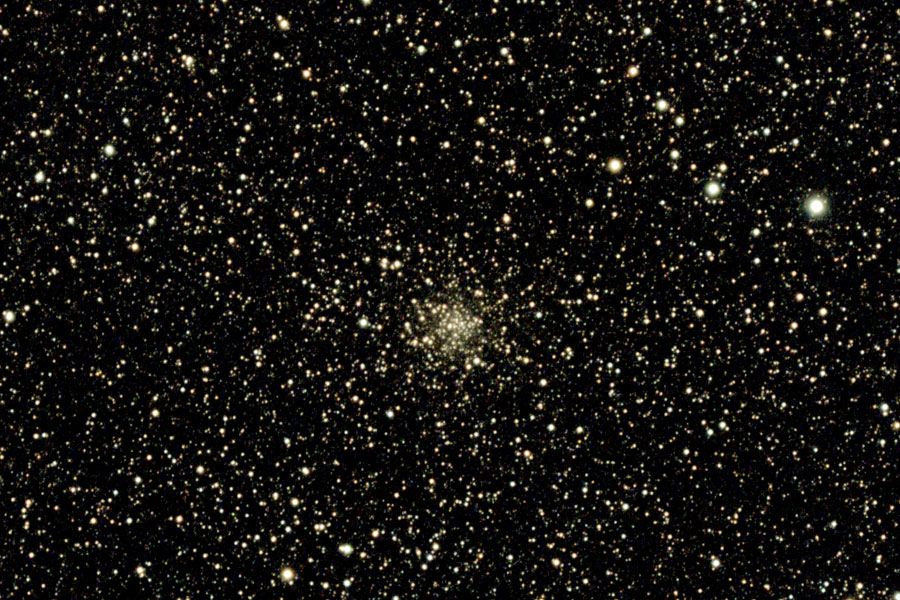
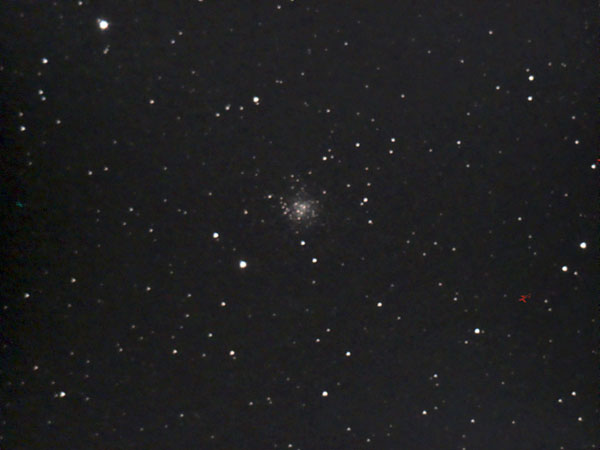
According to Stoyan, one of the more inconspicuous globular star clusters
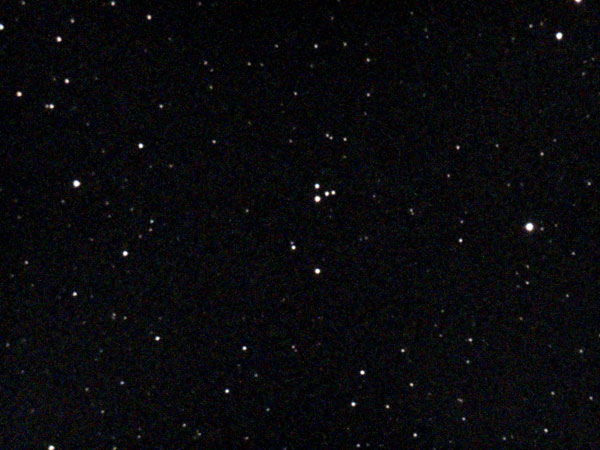
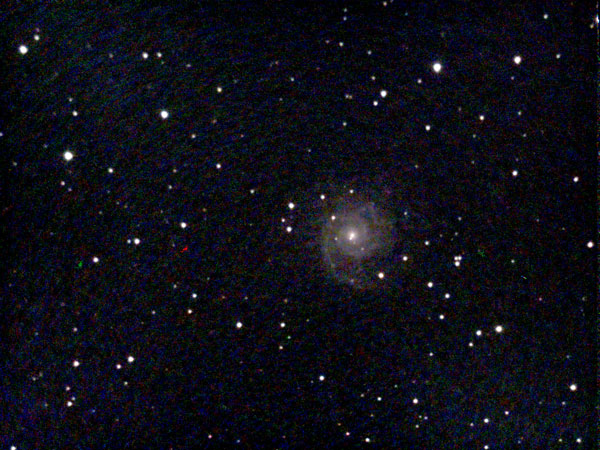
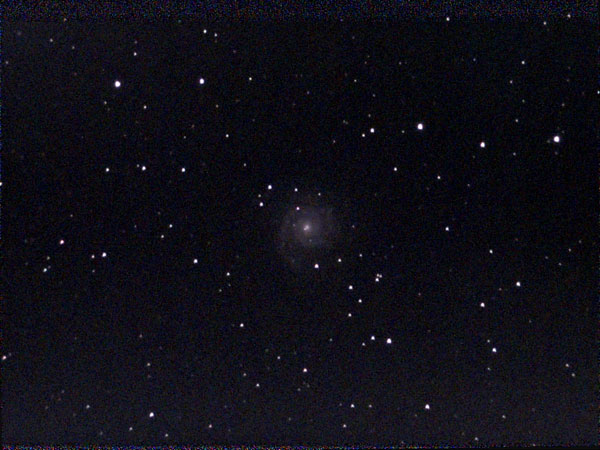
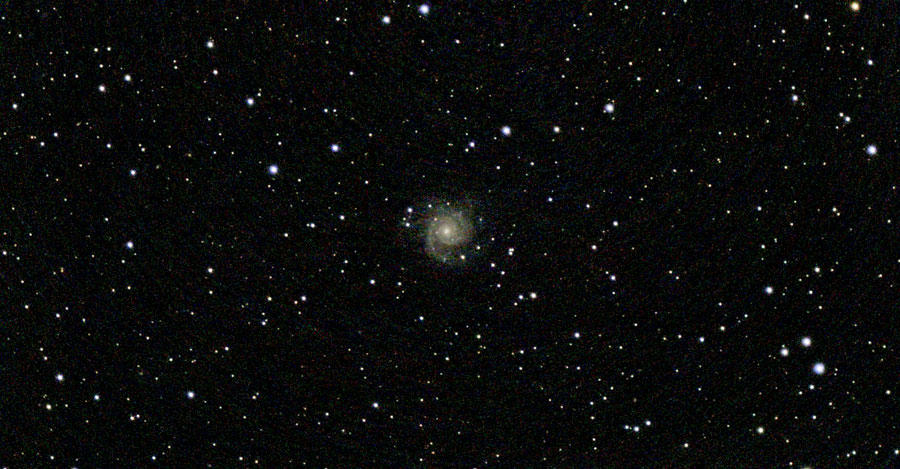

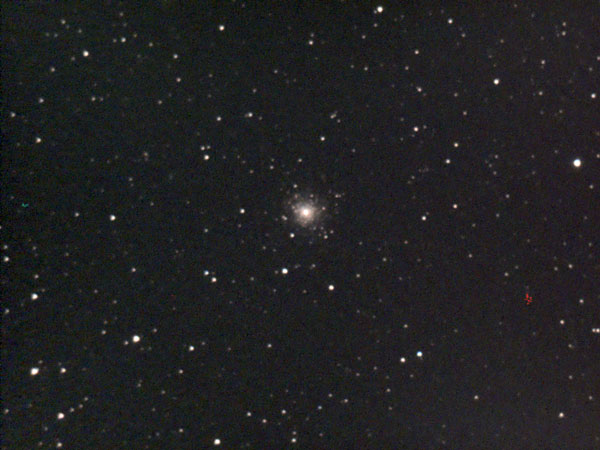
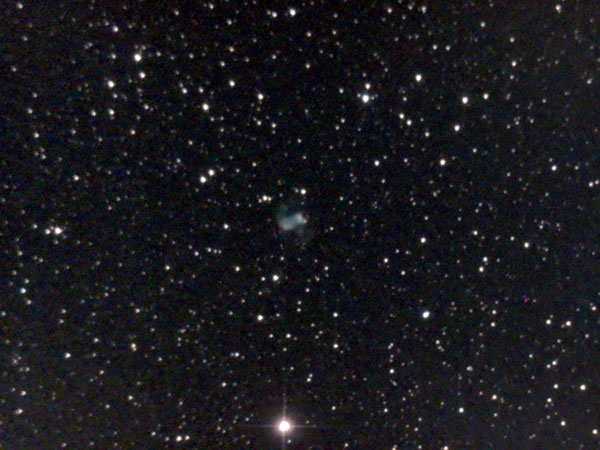
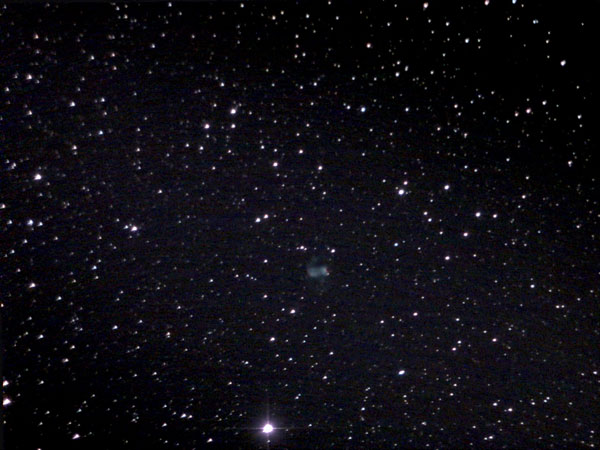

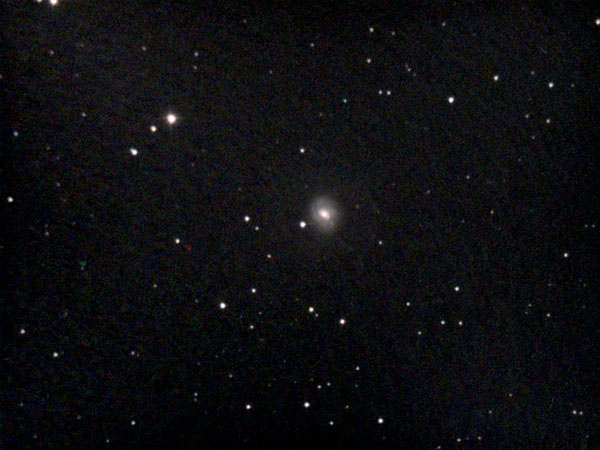
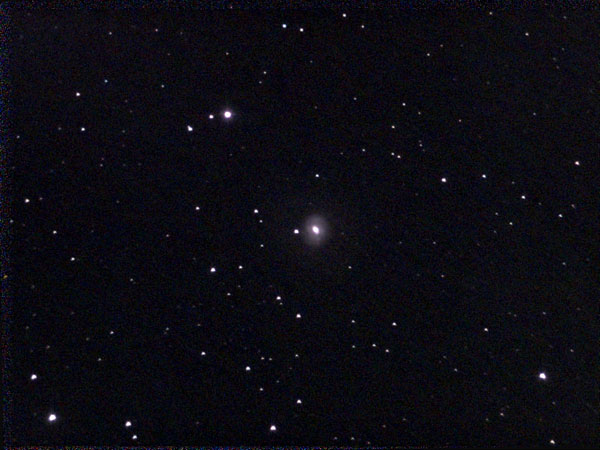
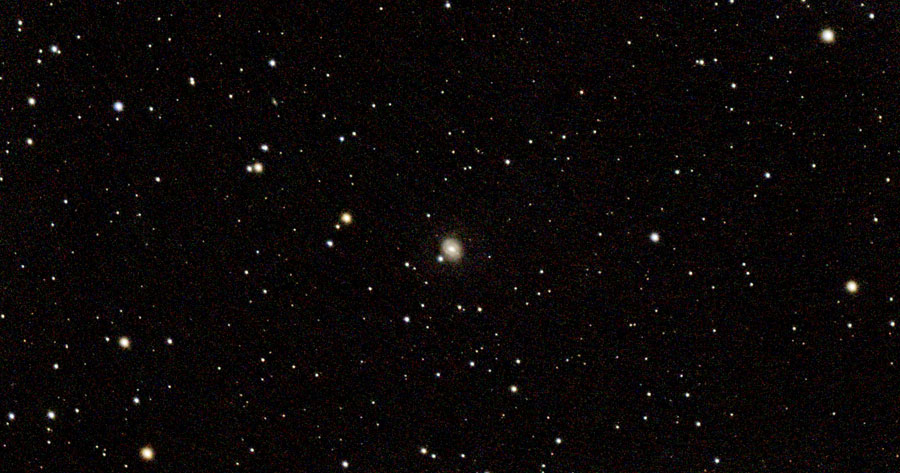
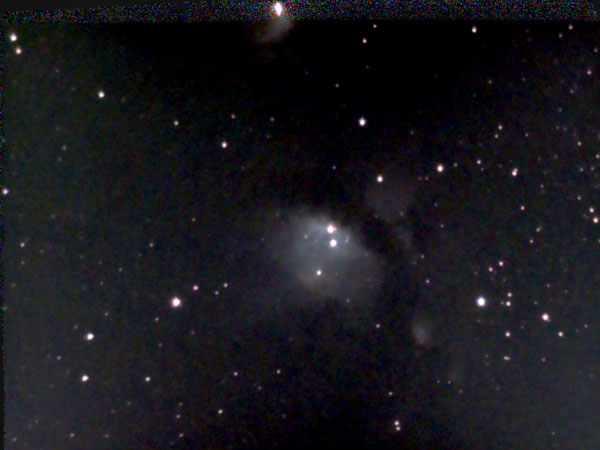
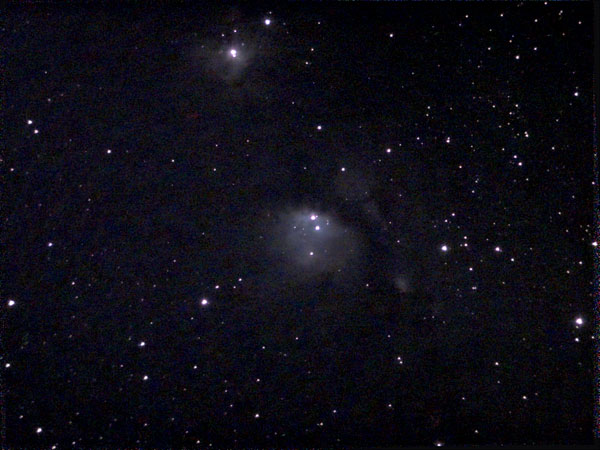
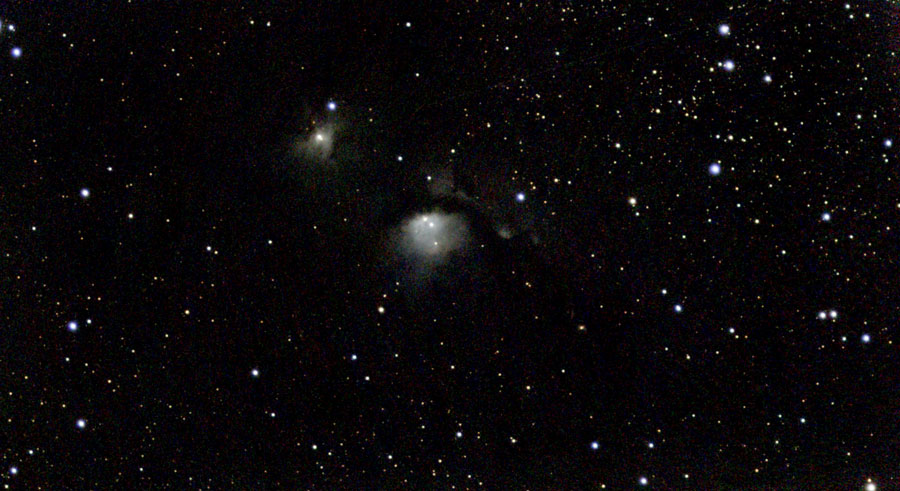

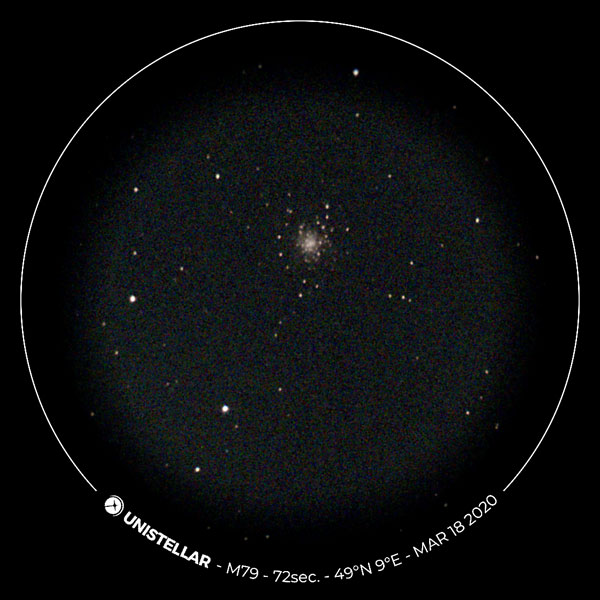
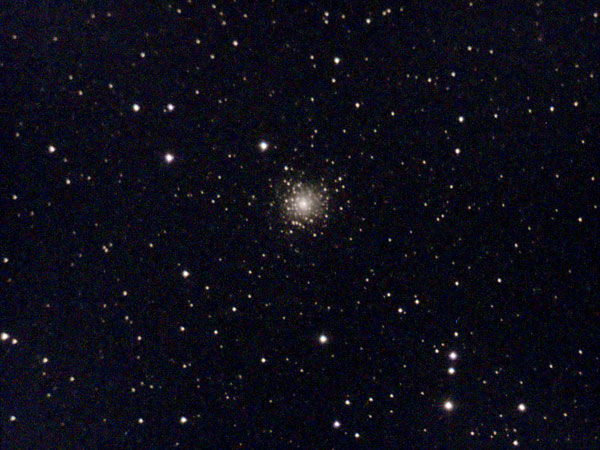
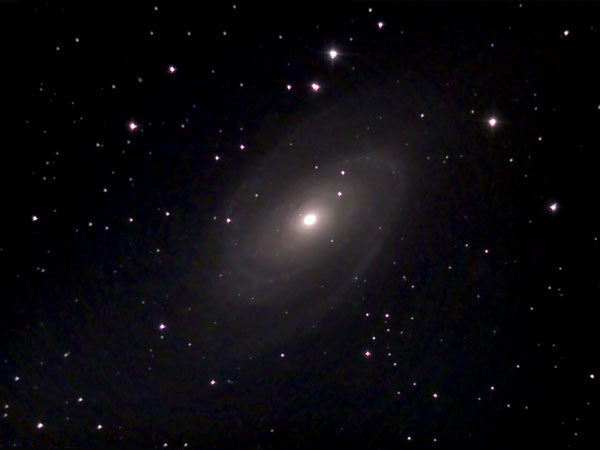
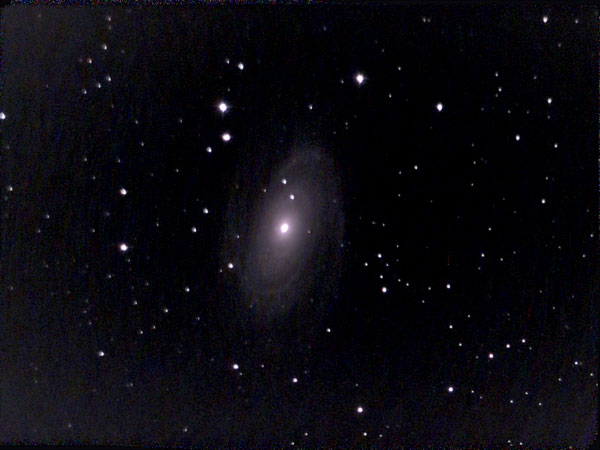

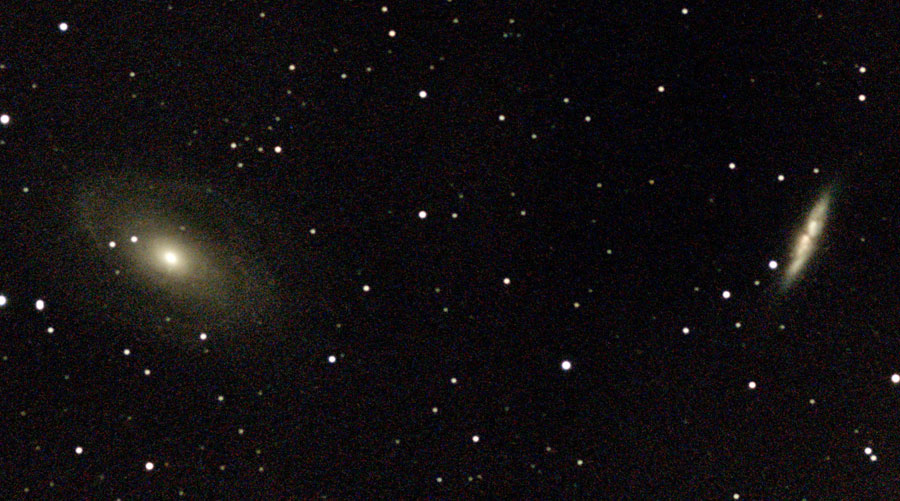
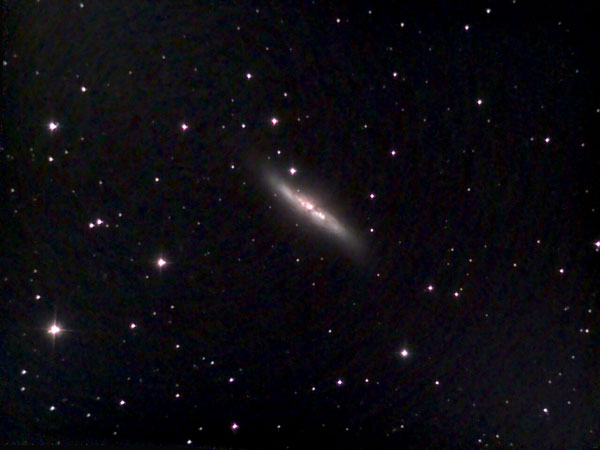
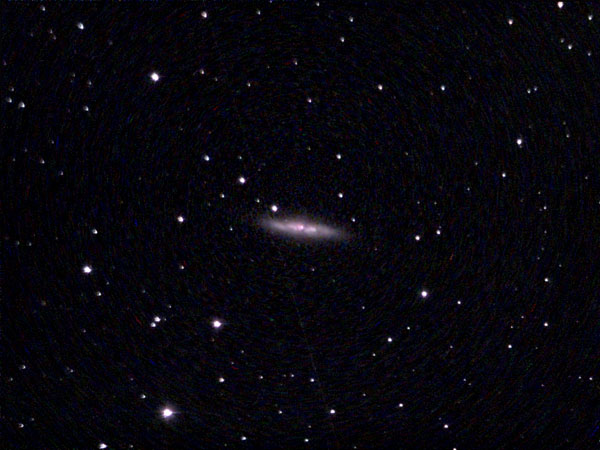
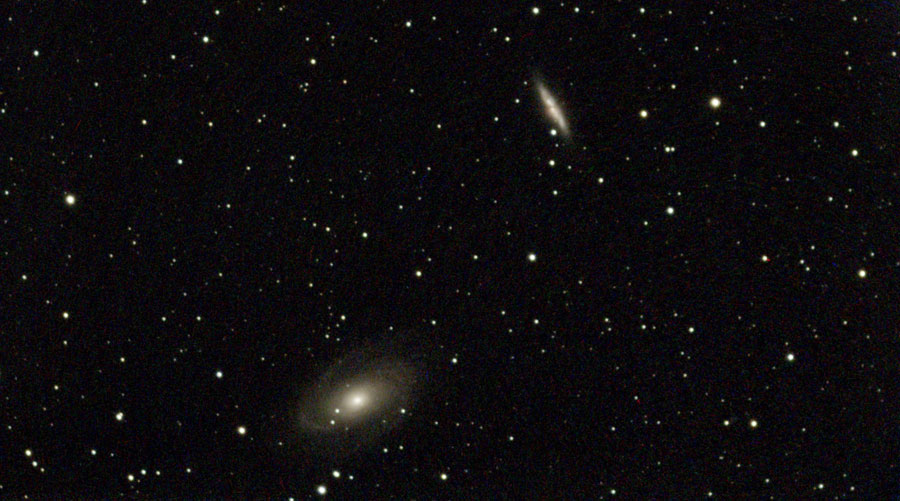

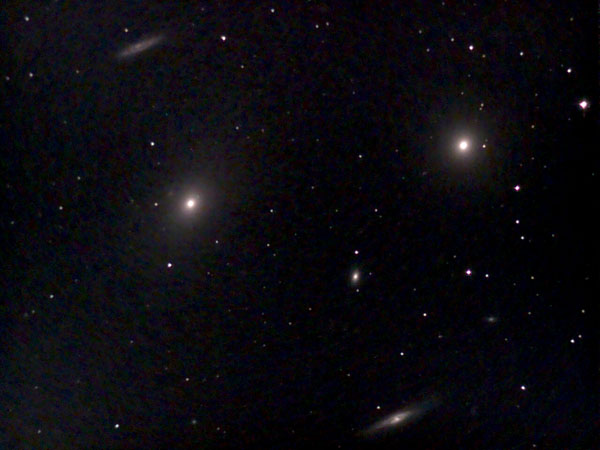
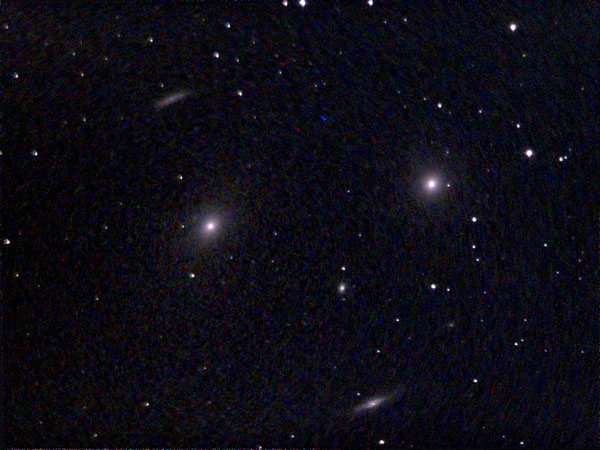
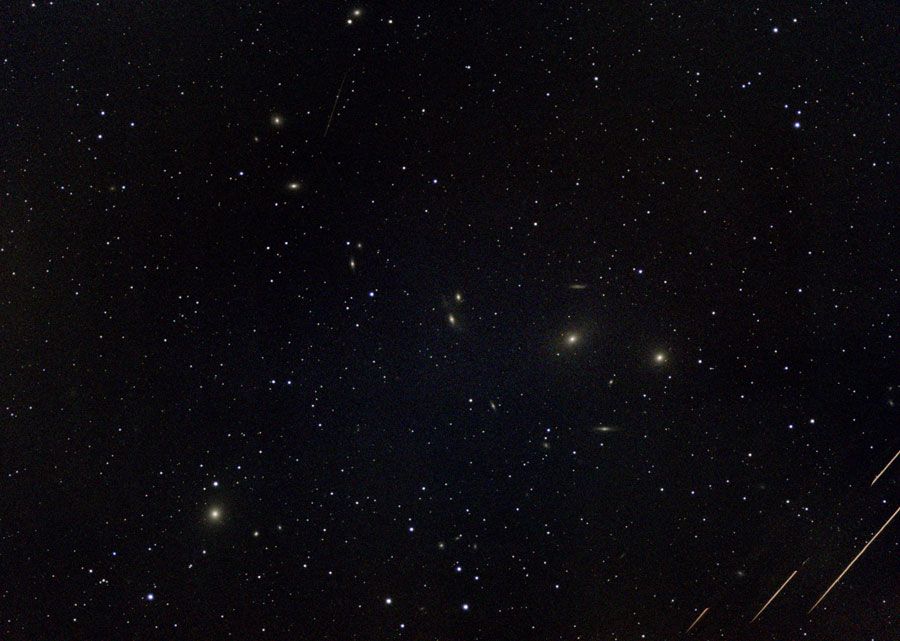

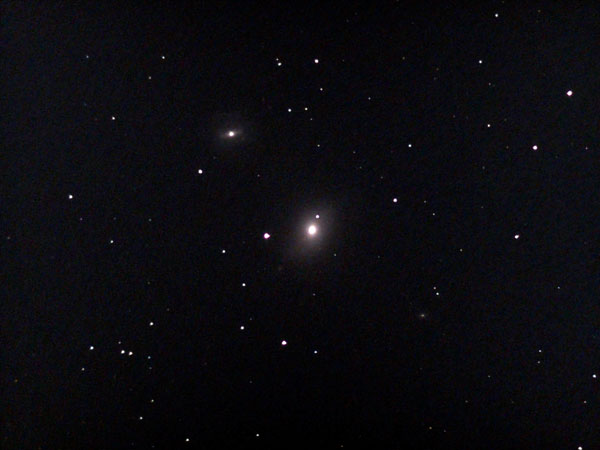
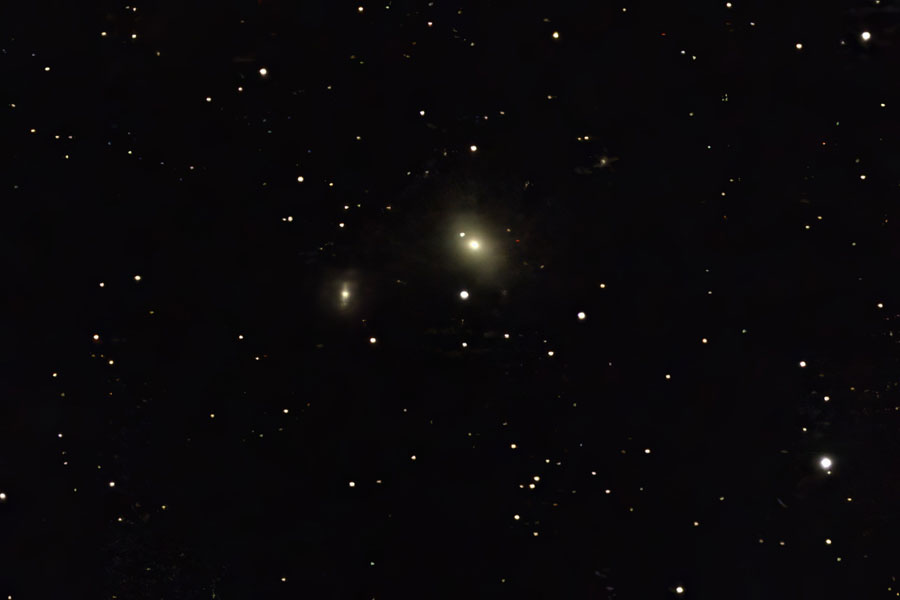




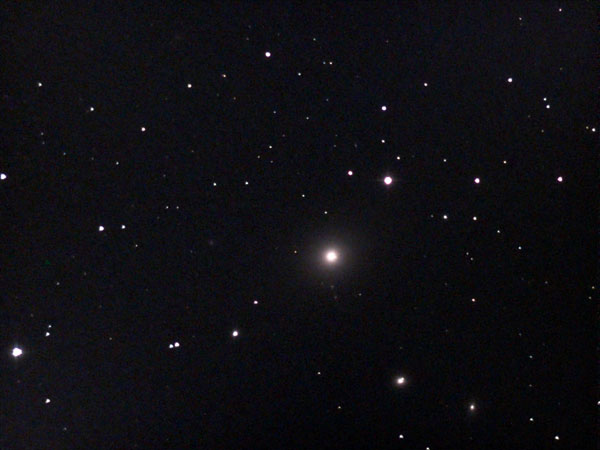


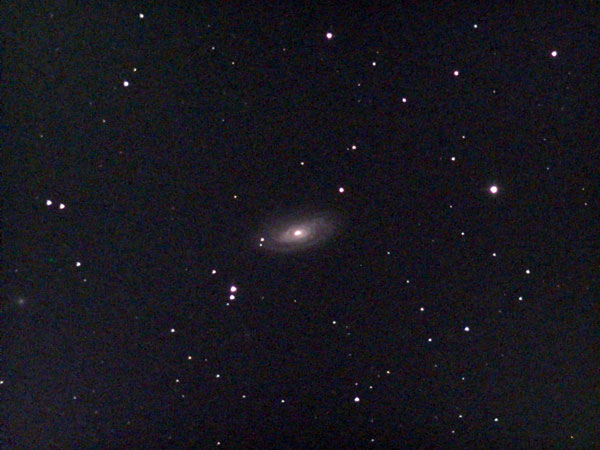
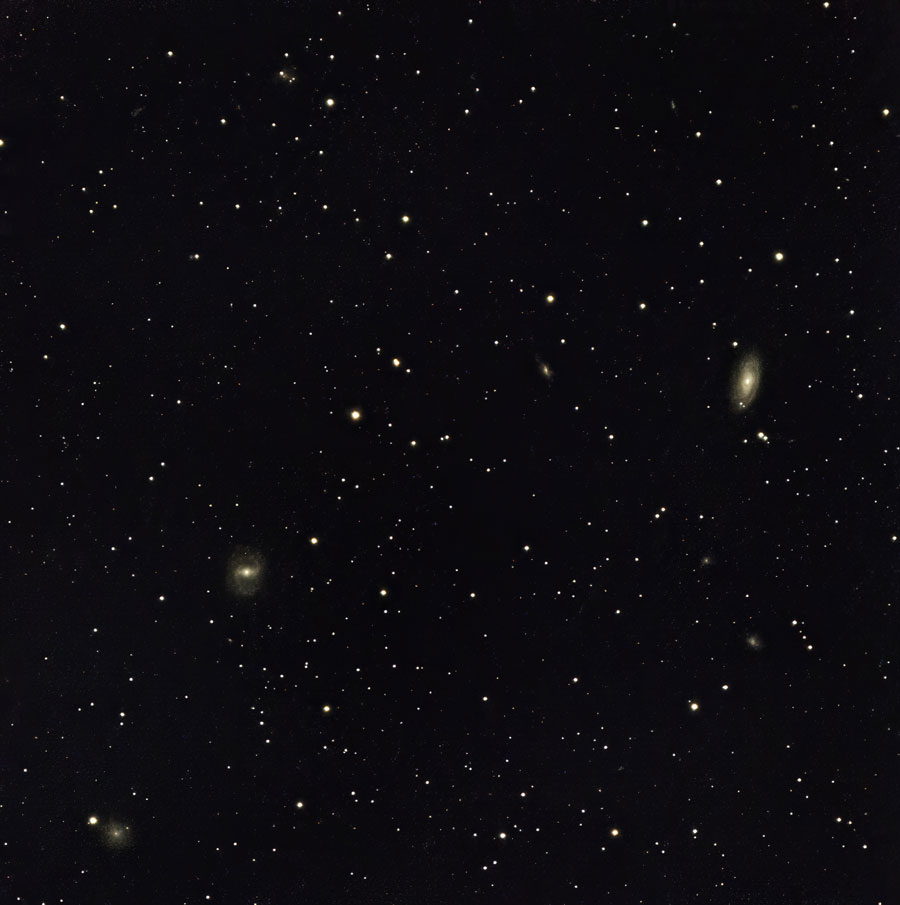
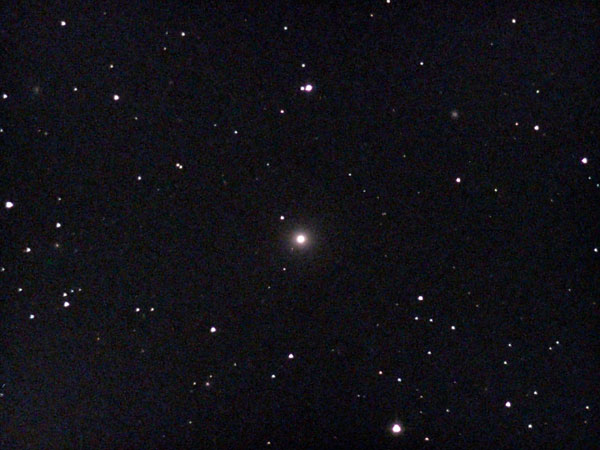

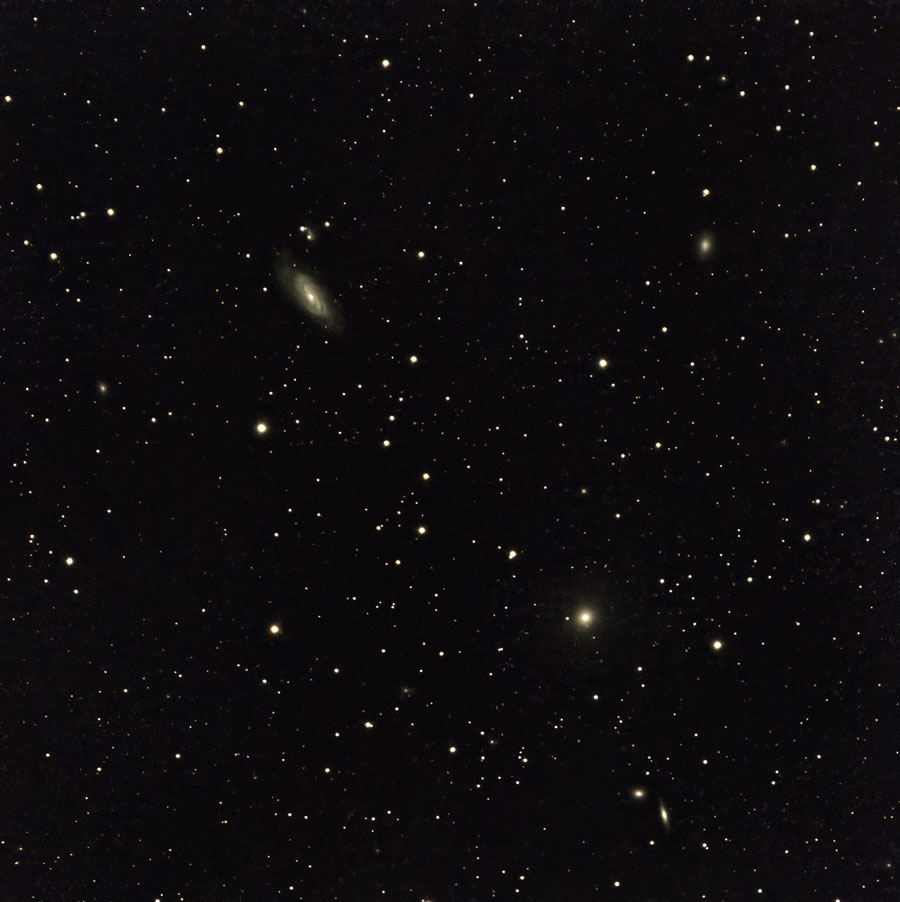
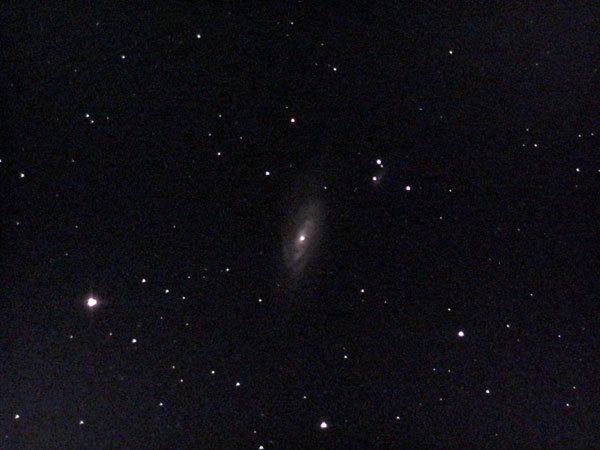


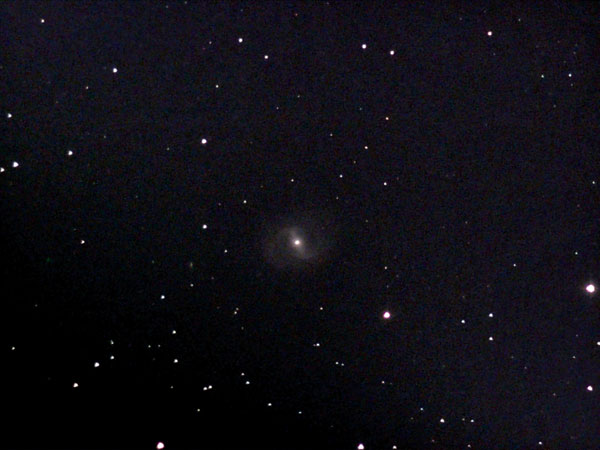

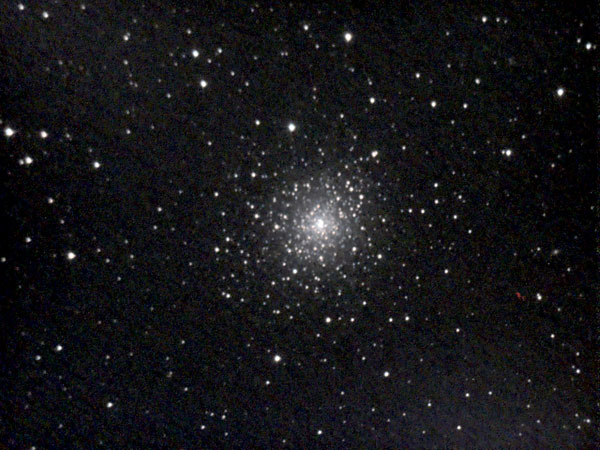
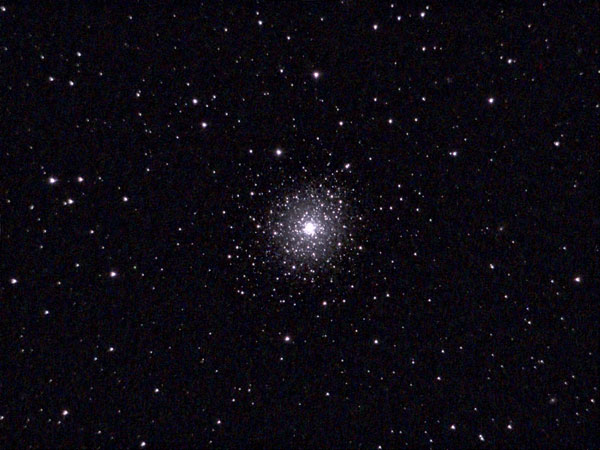
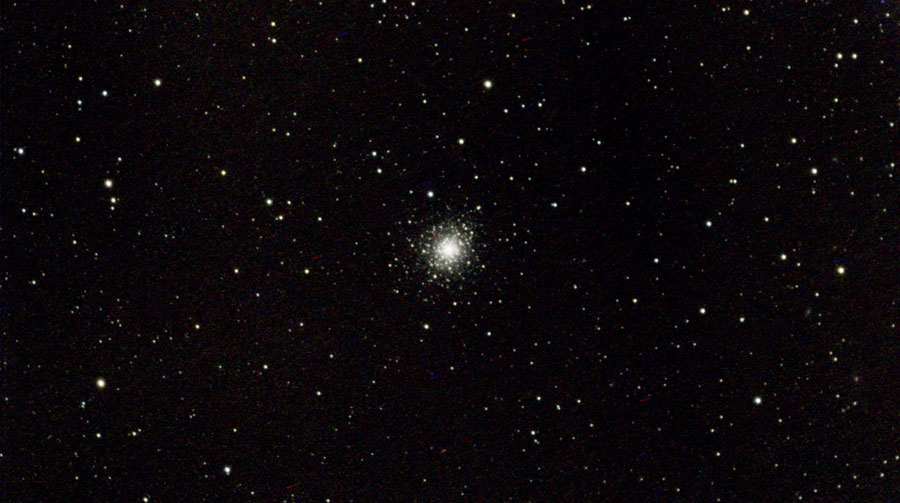
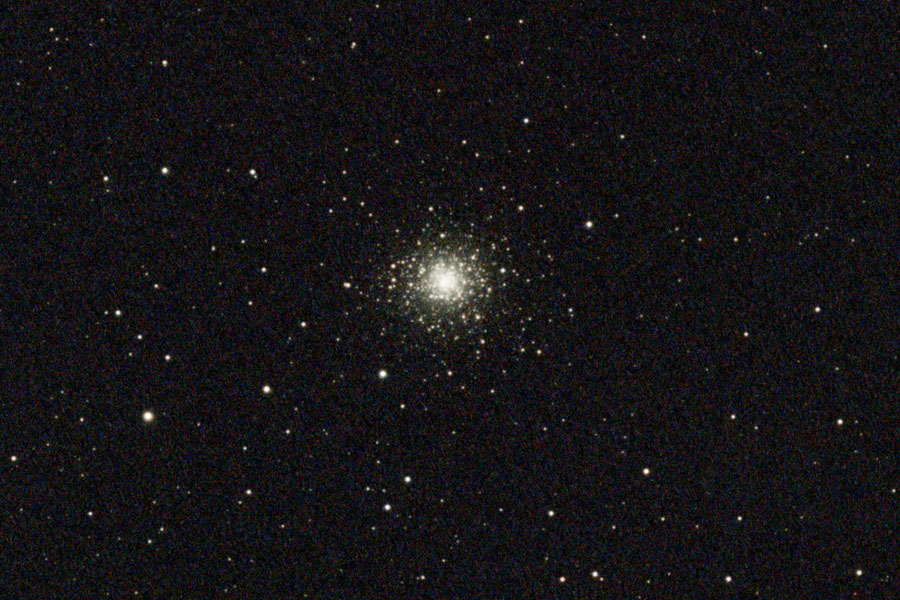
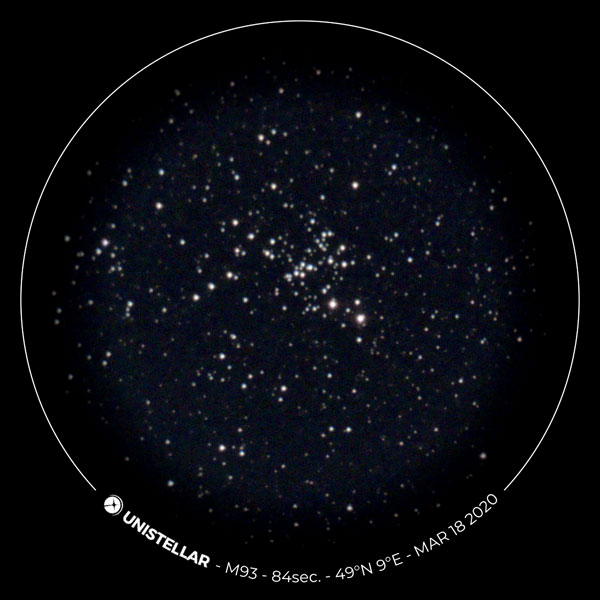
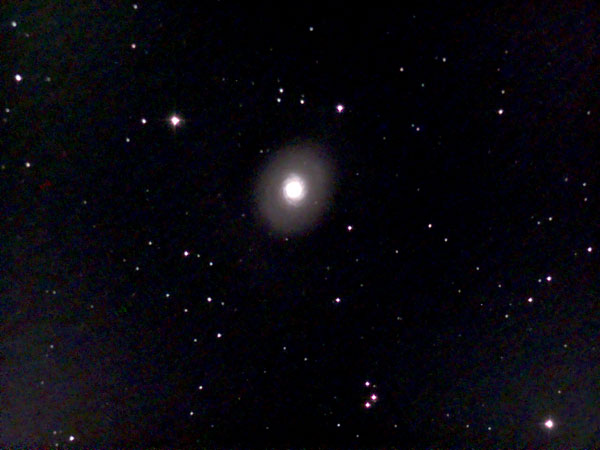
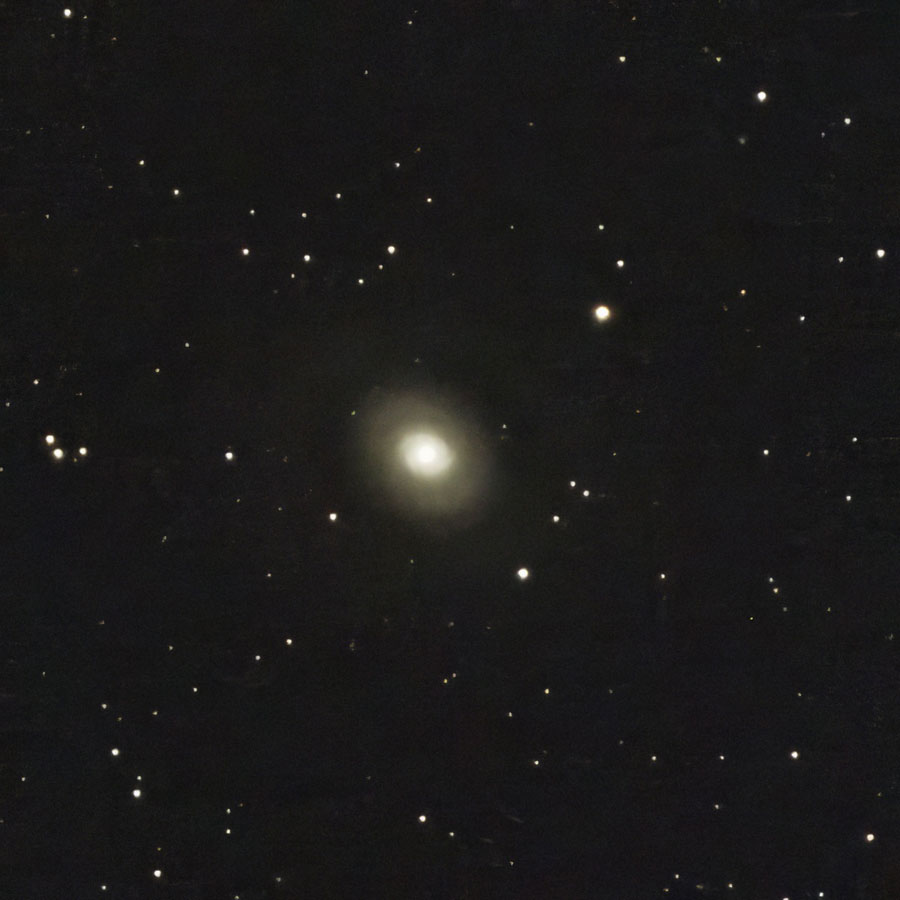
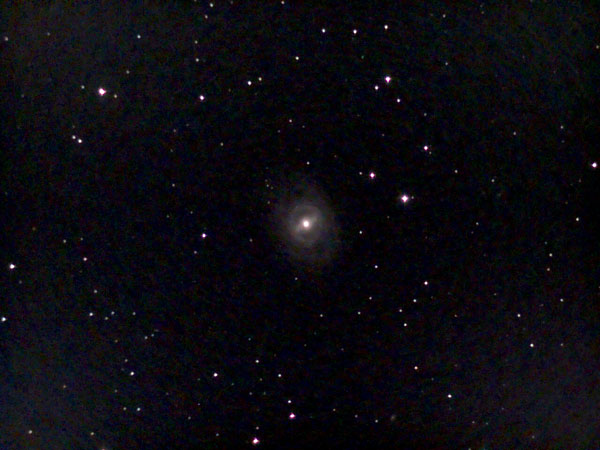
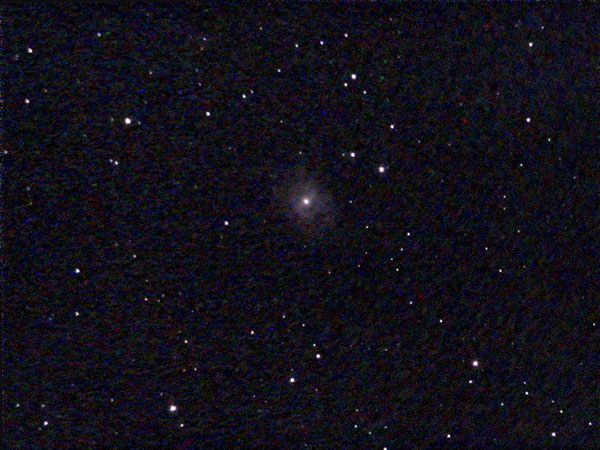
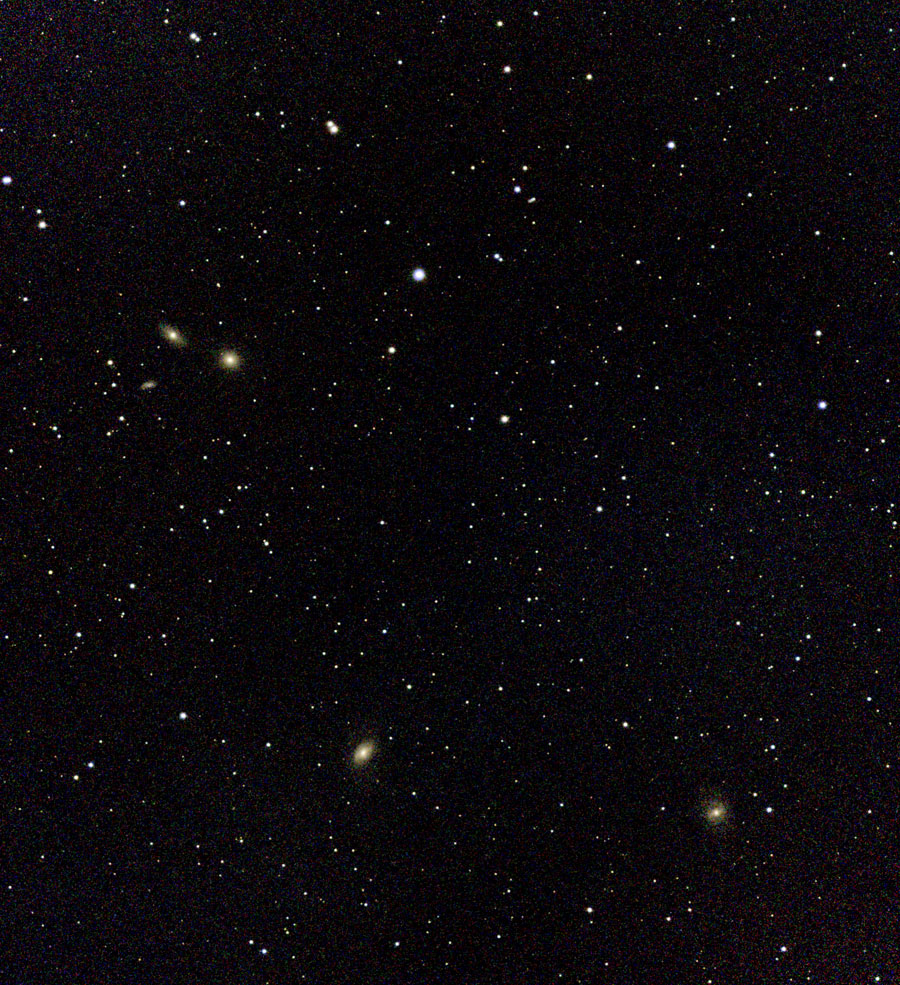
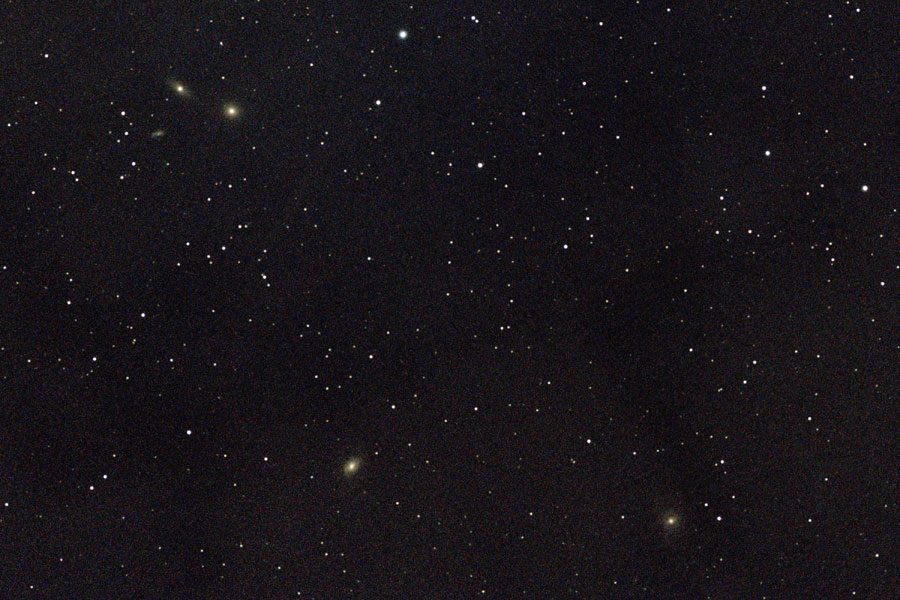
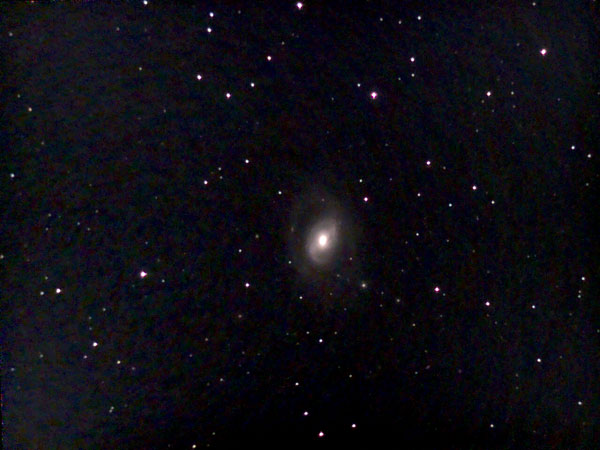
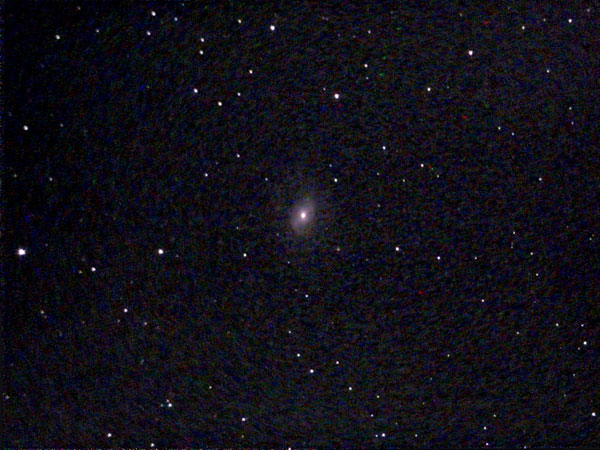


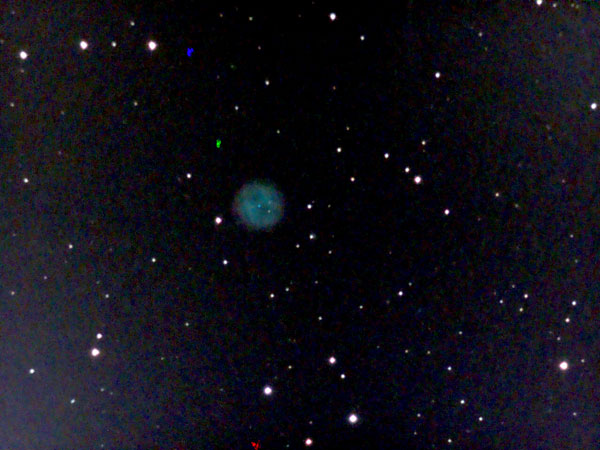
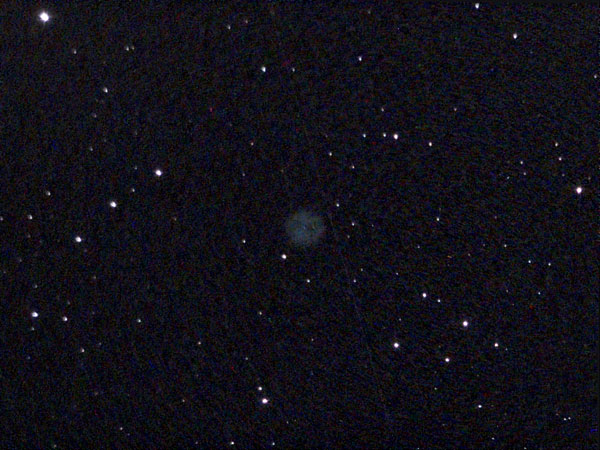
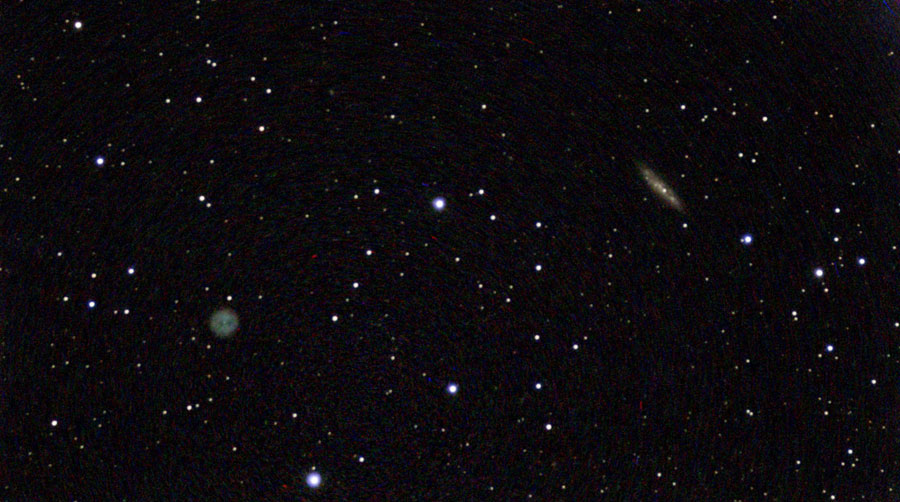
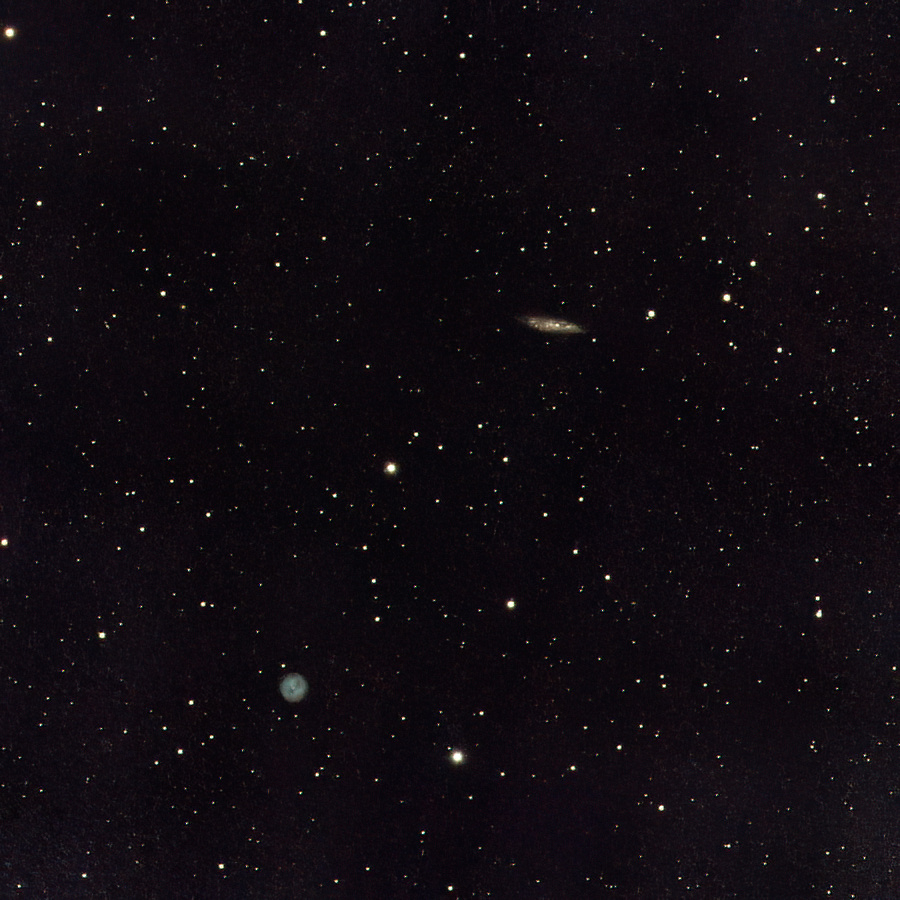
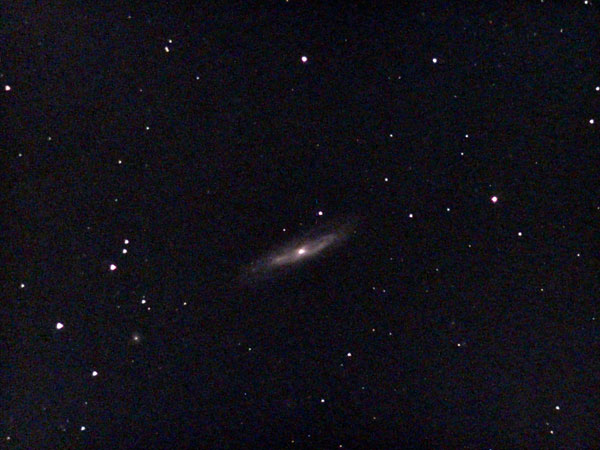
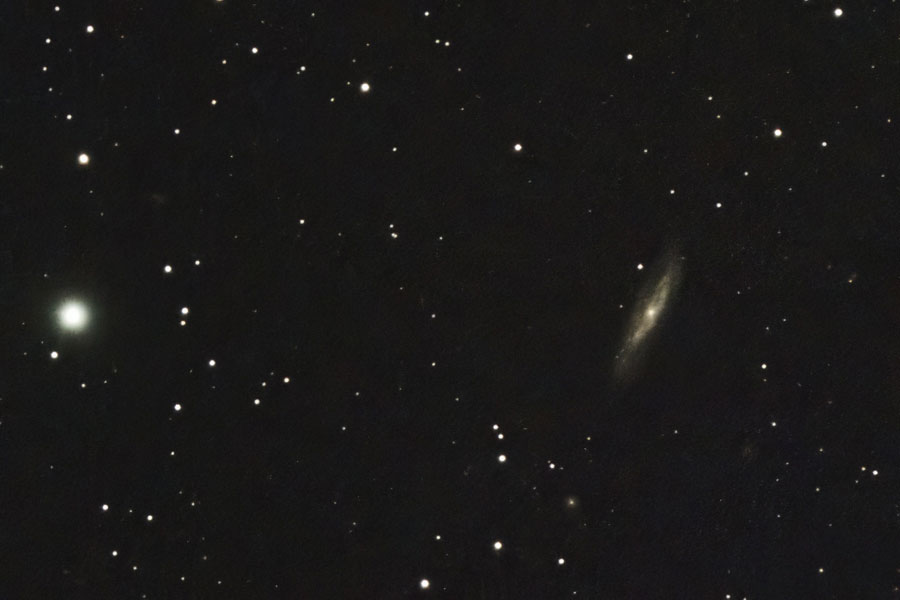
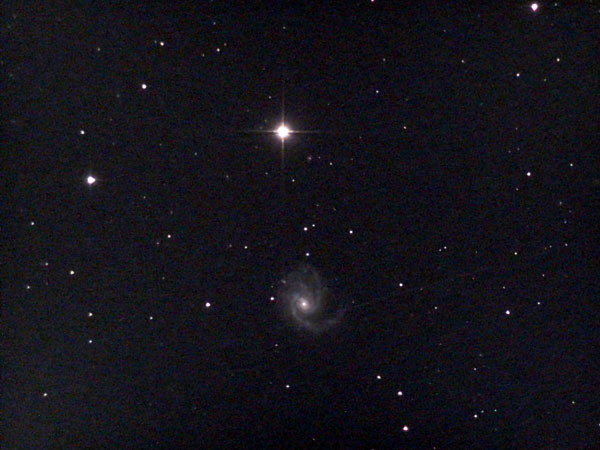
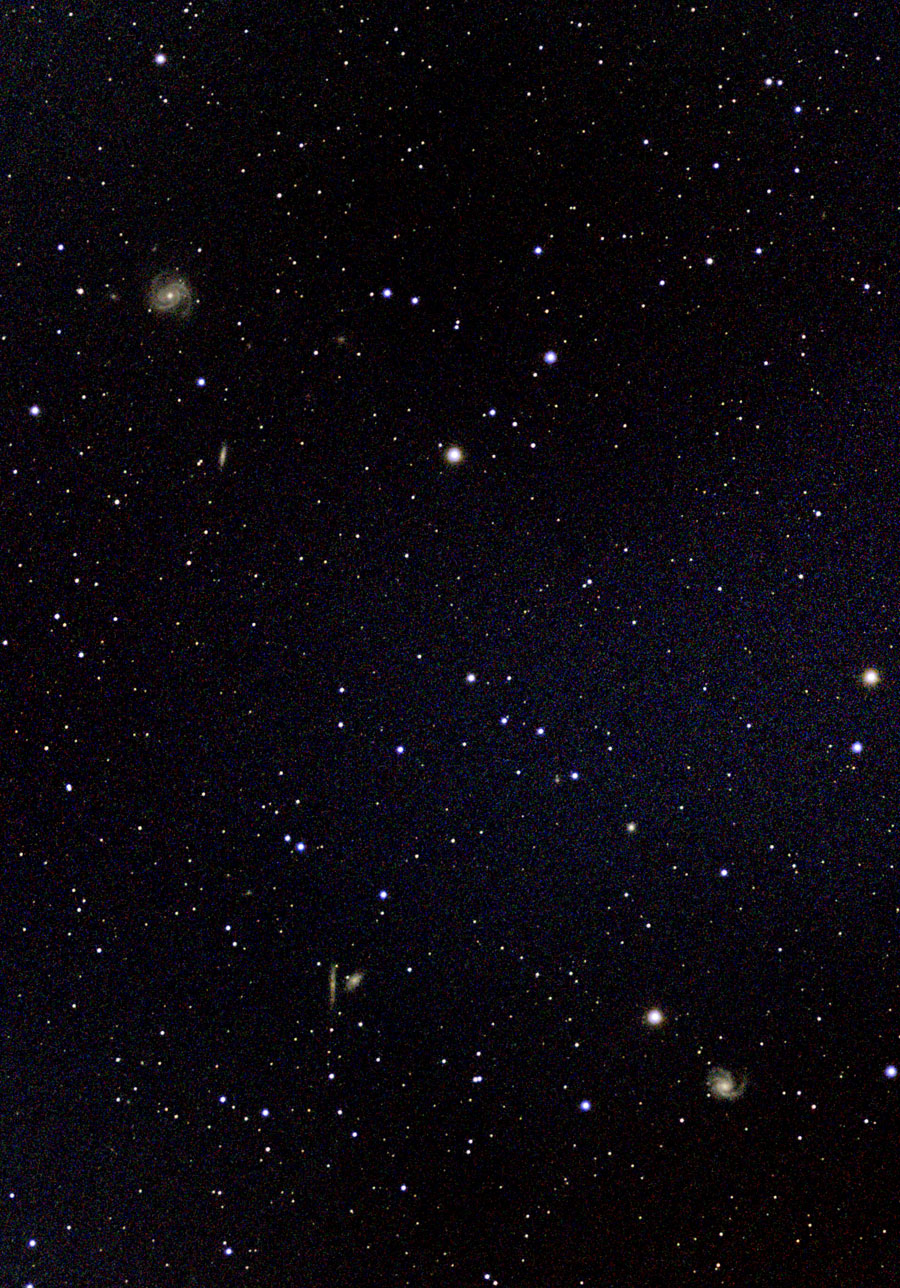
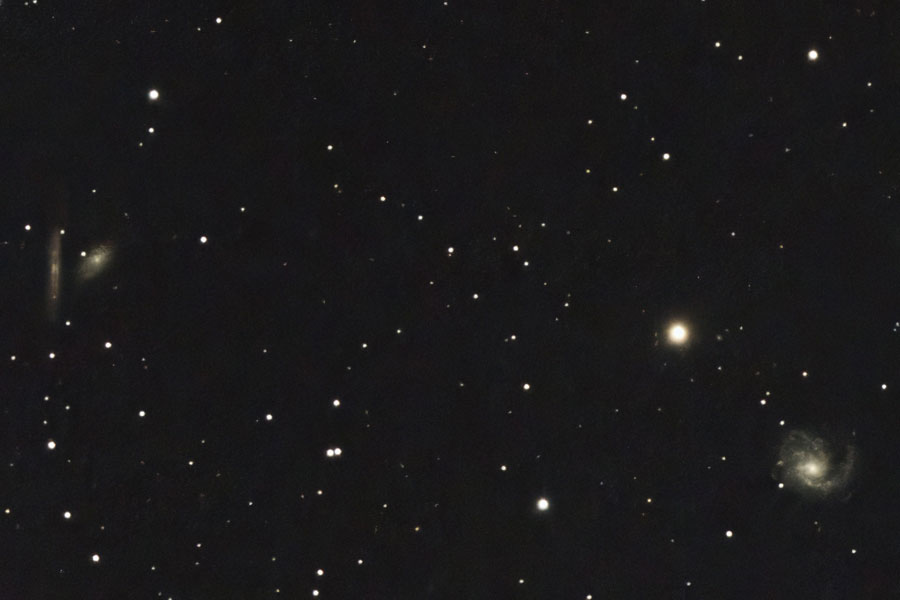
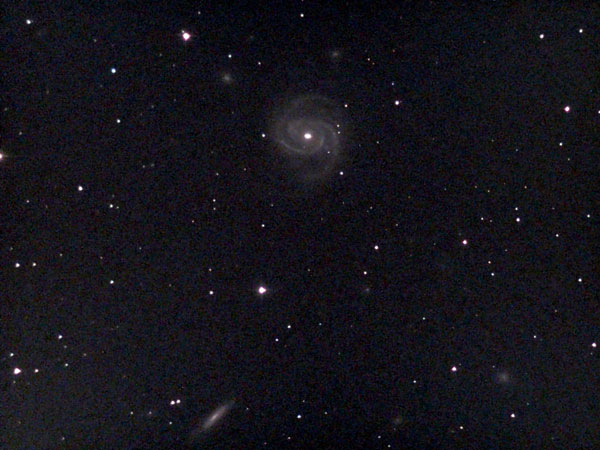
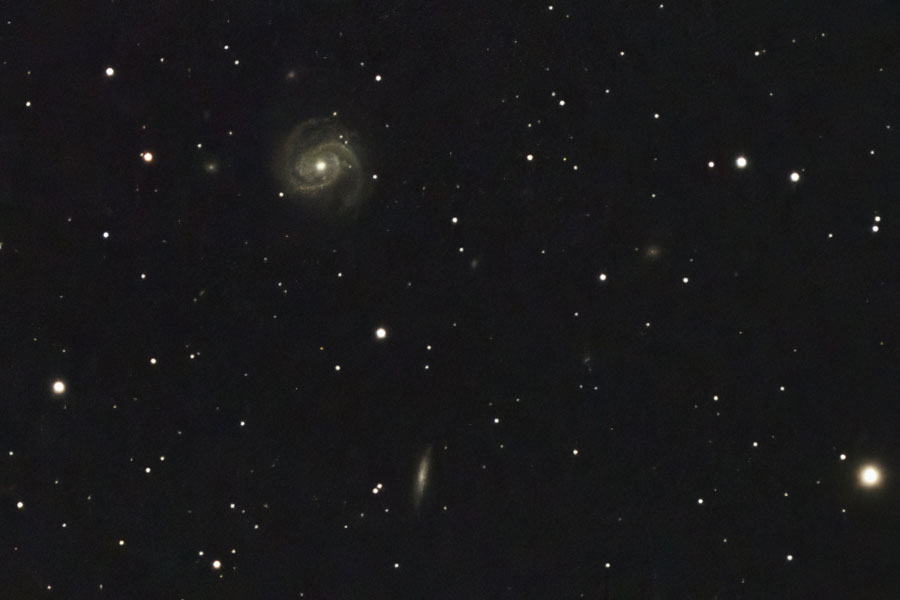
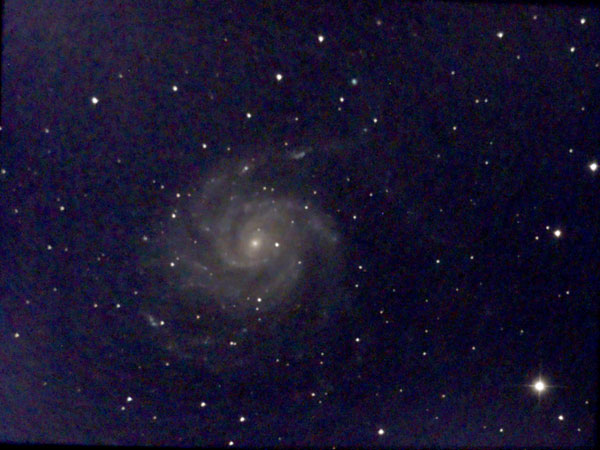
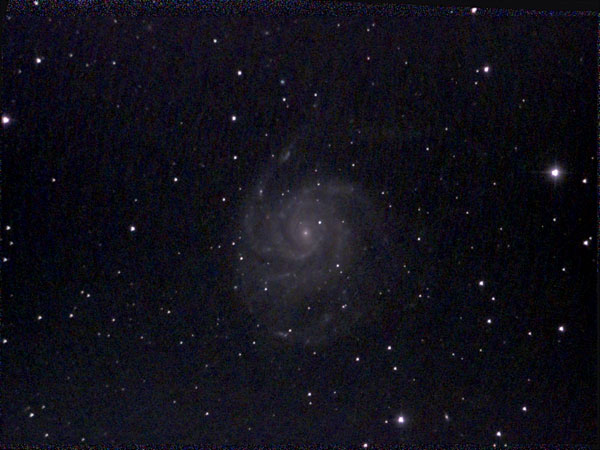
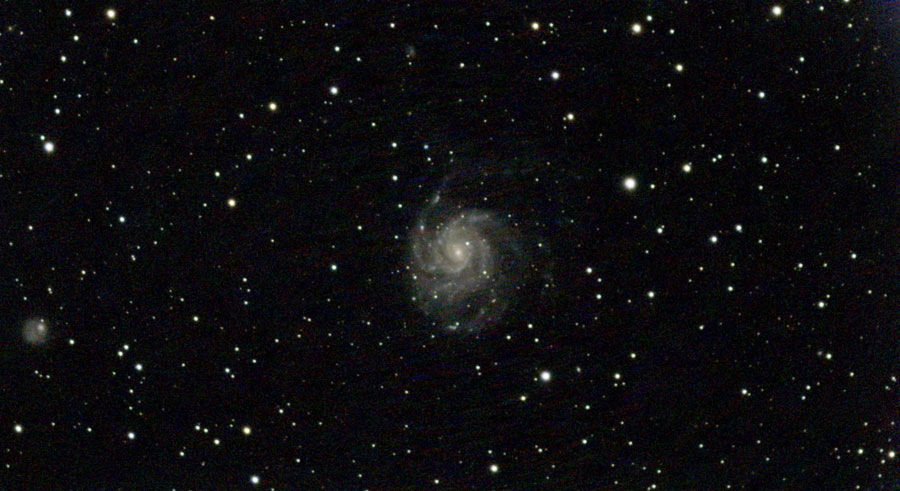
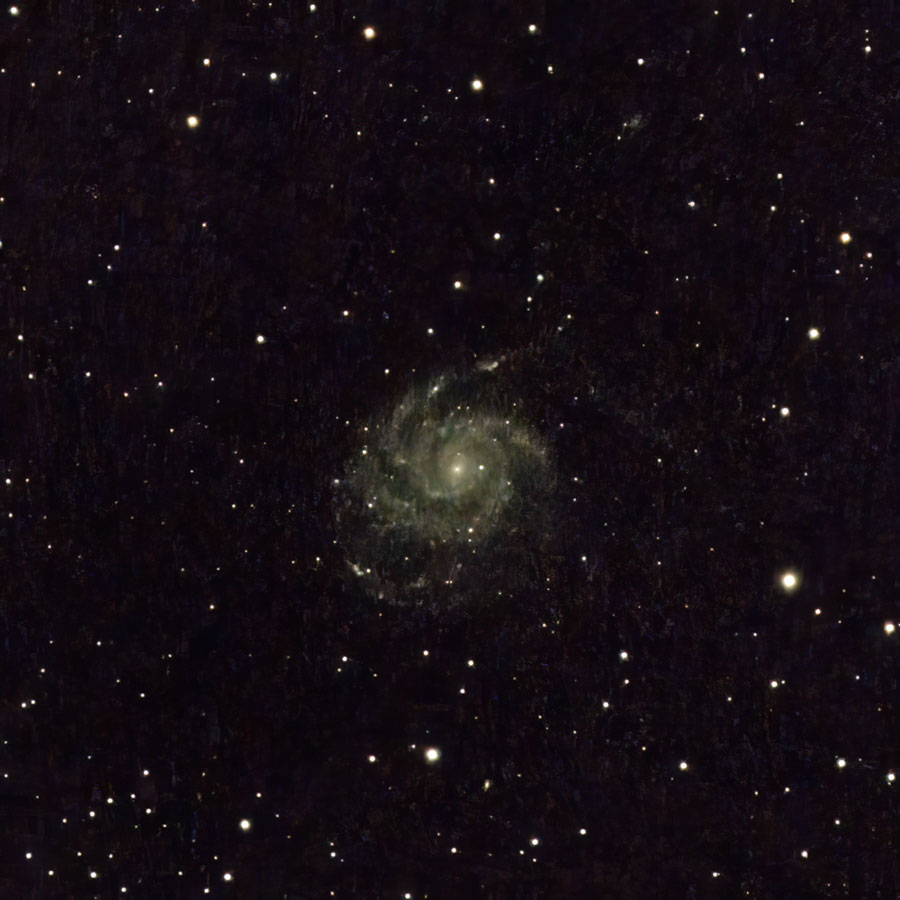
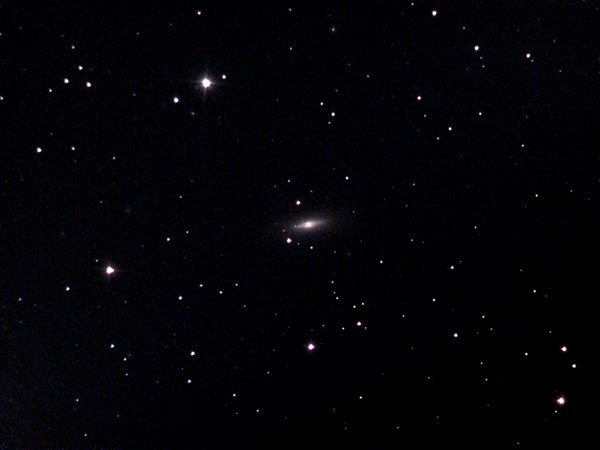
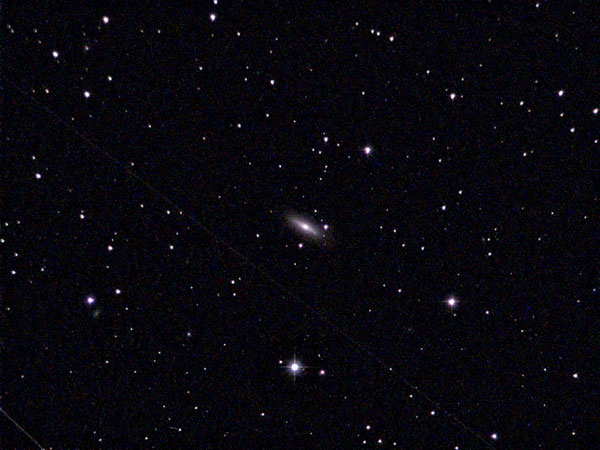
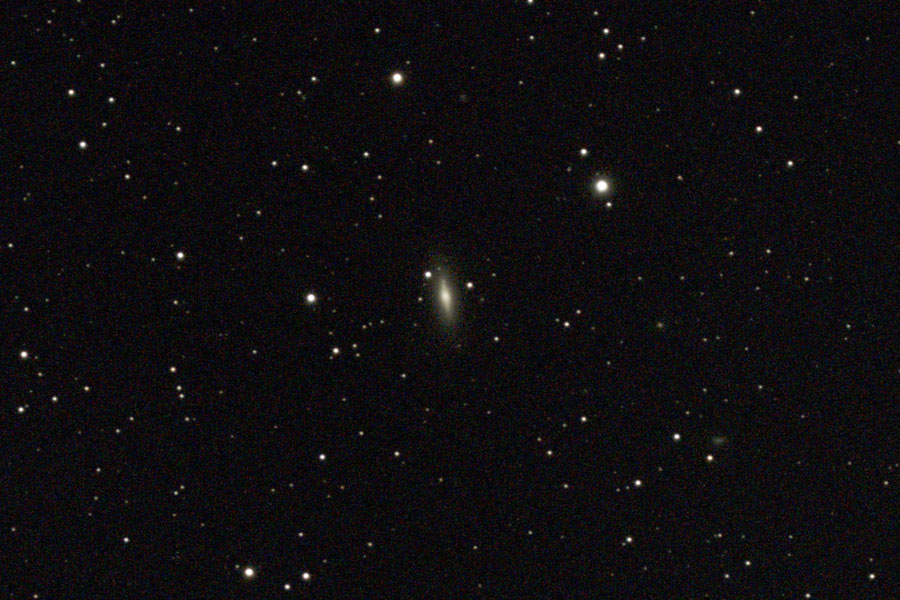
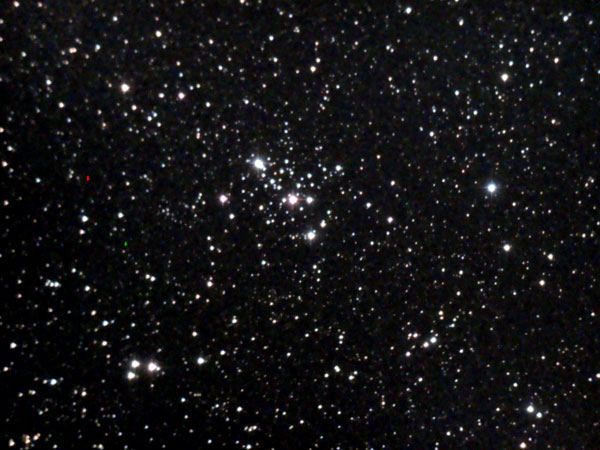
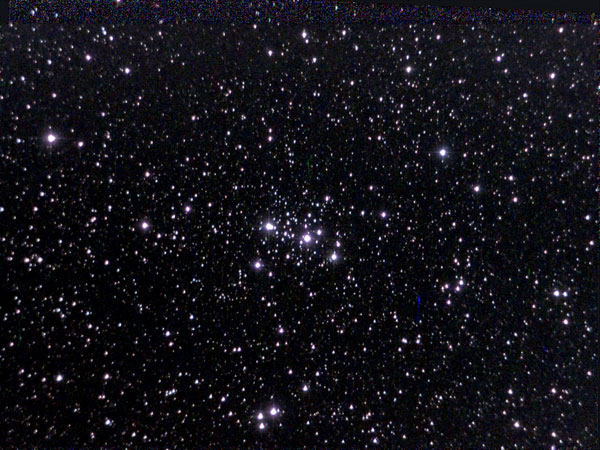
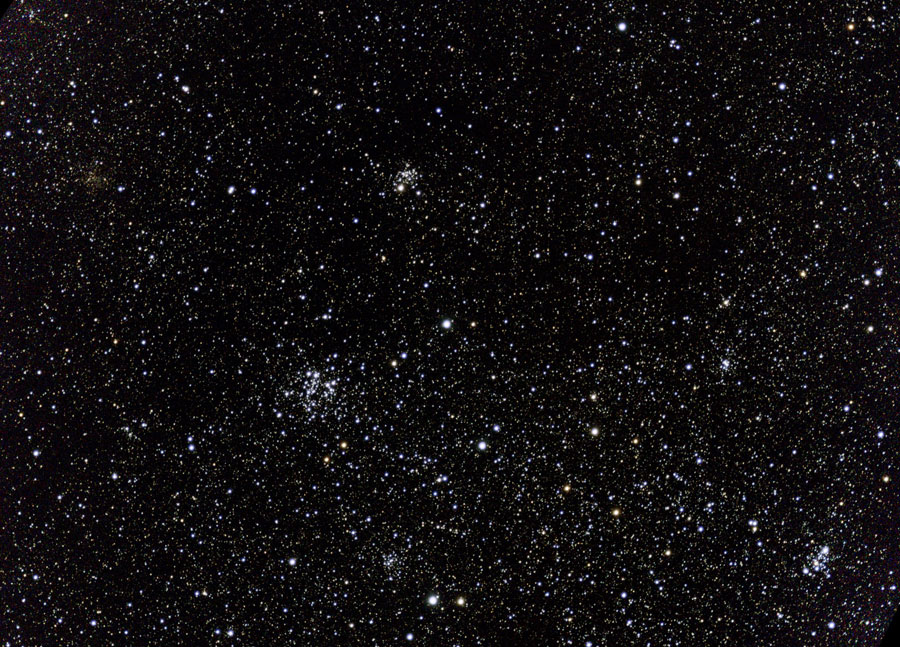
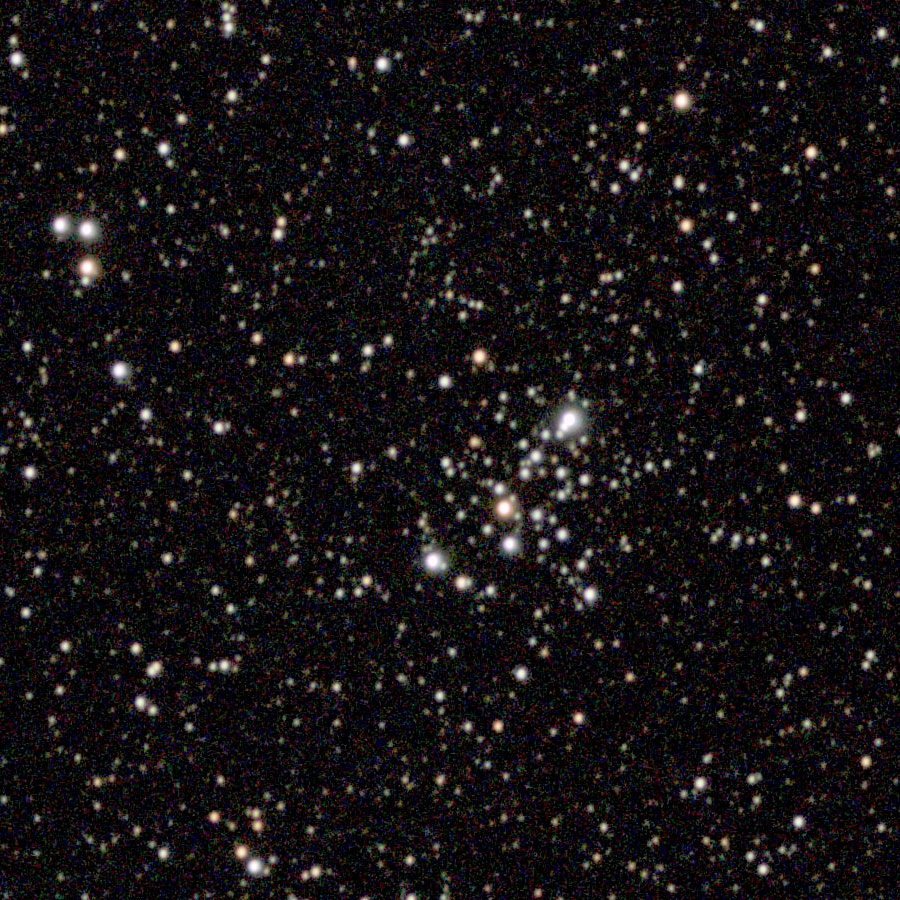
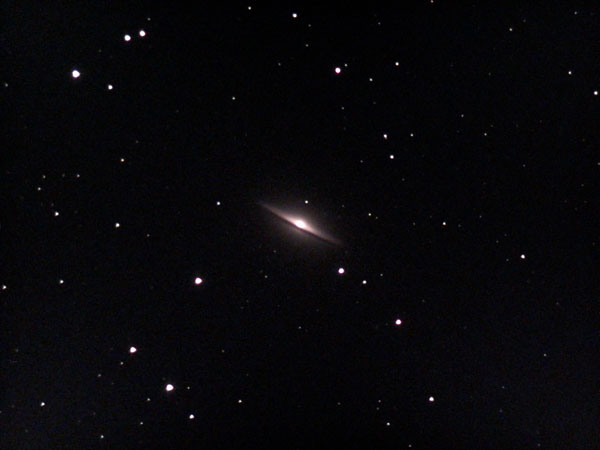
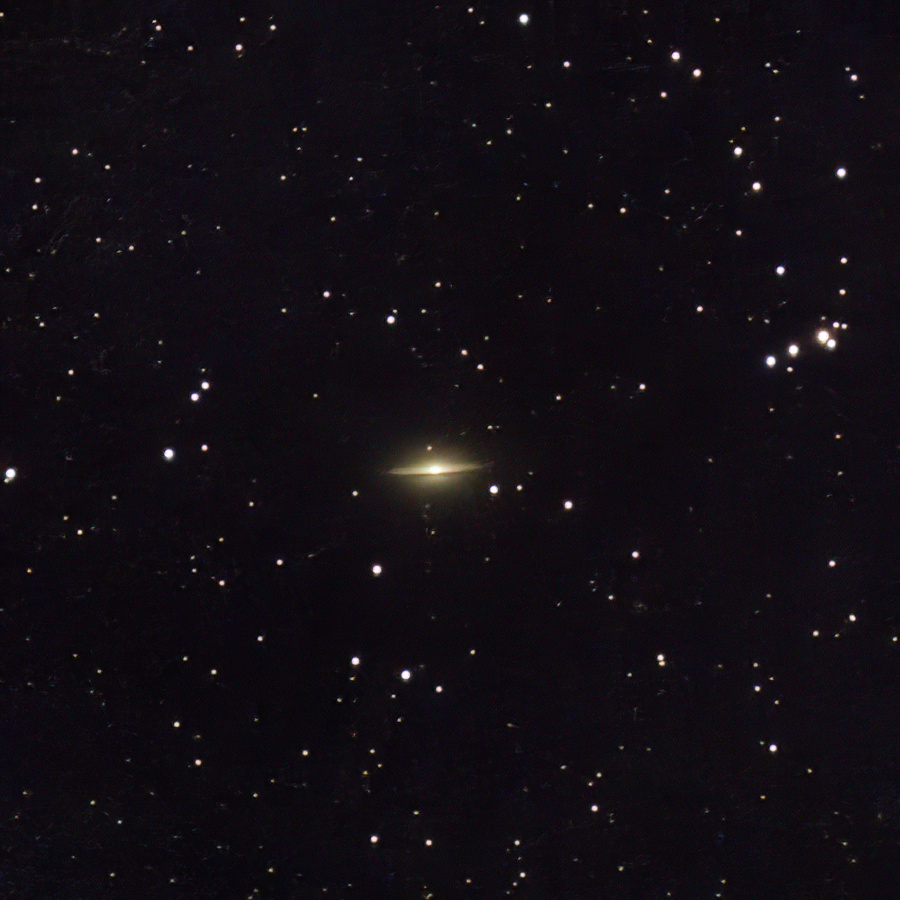

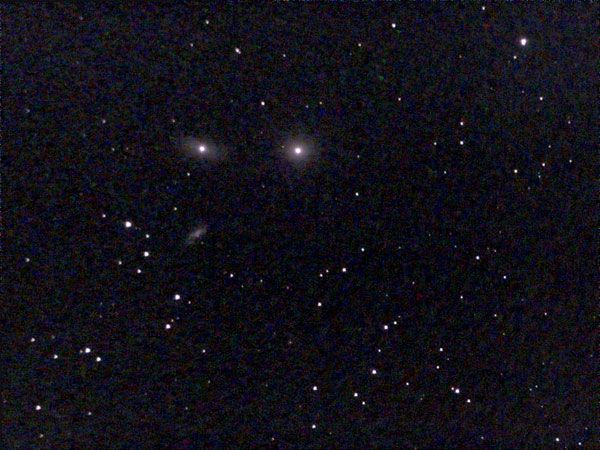

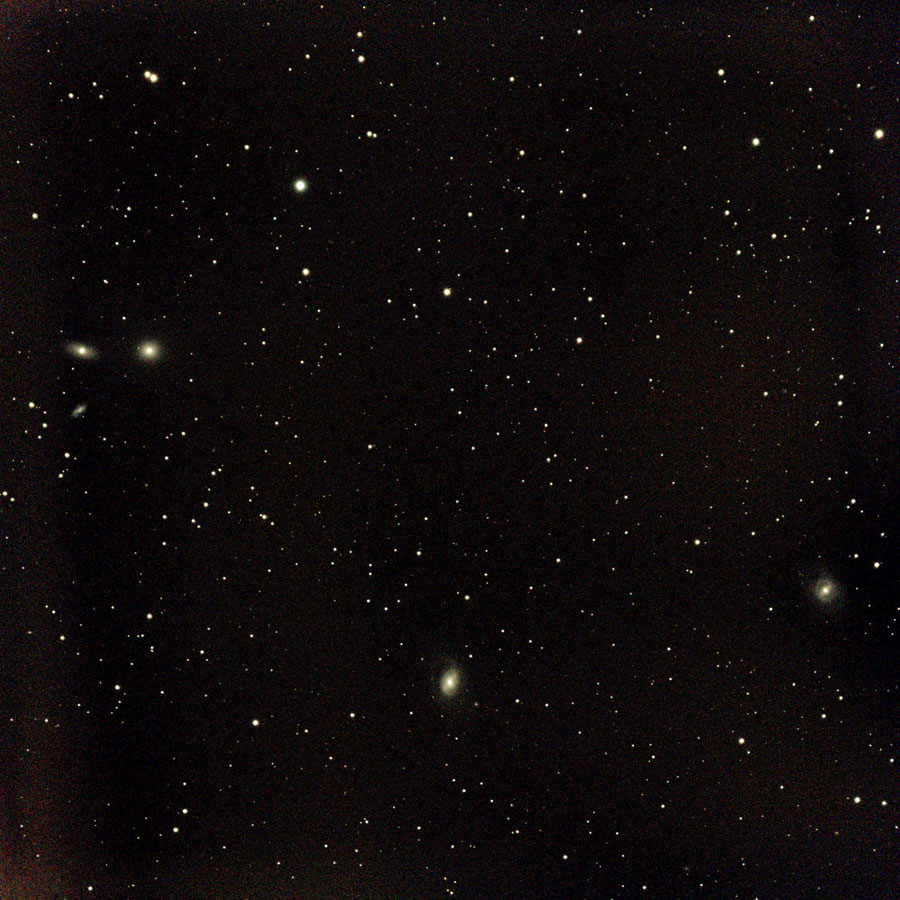
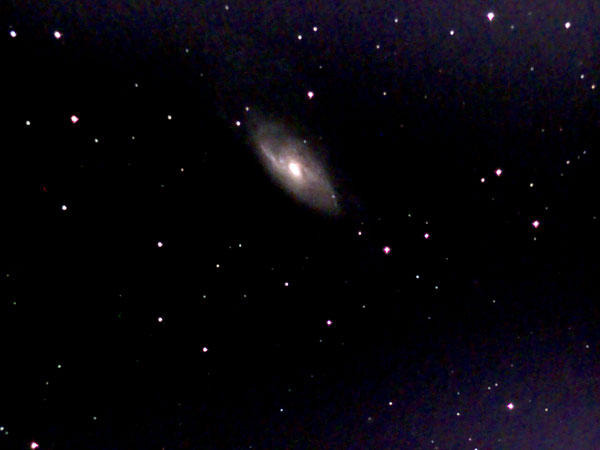
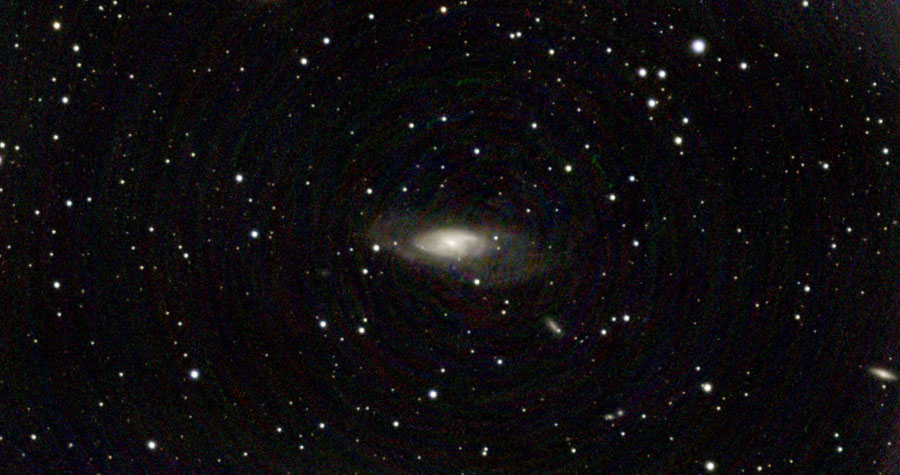
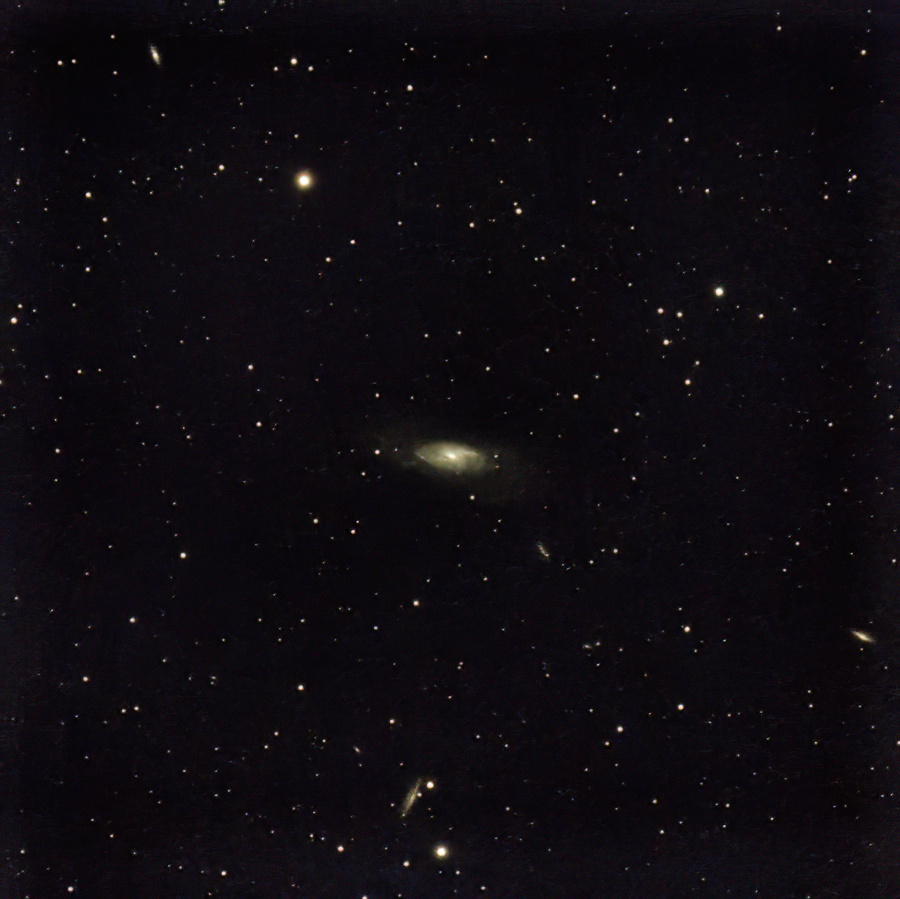
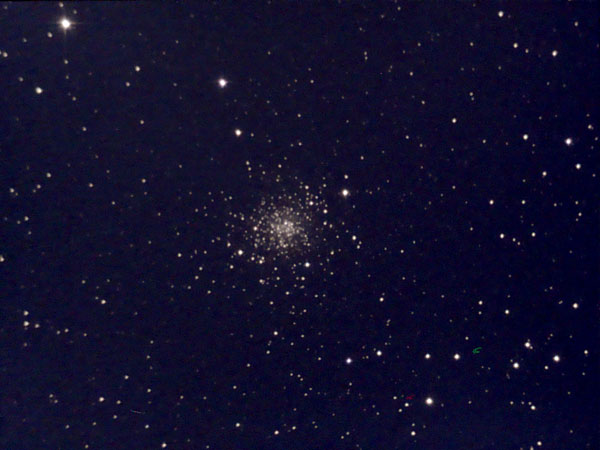

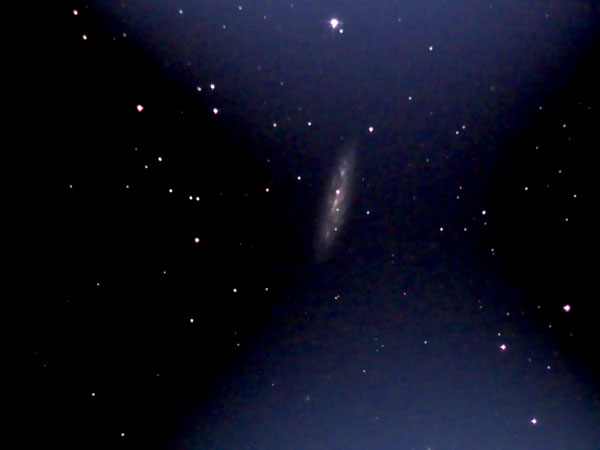


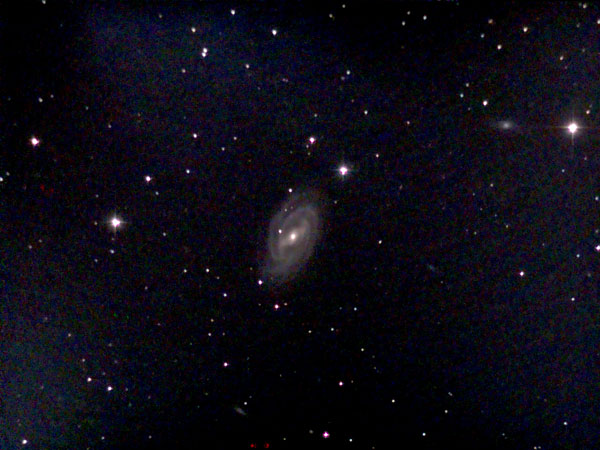
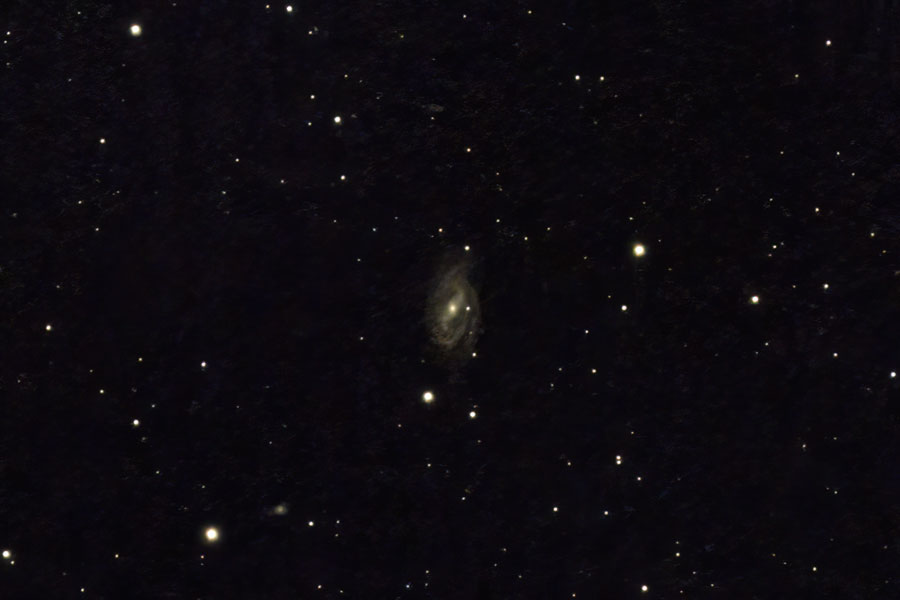
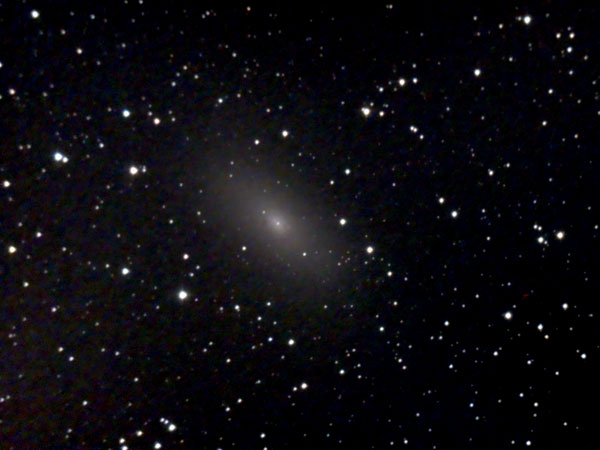
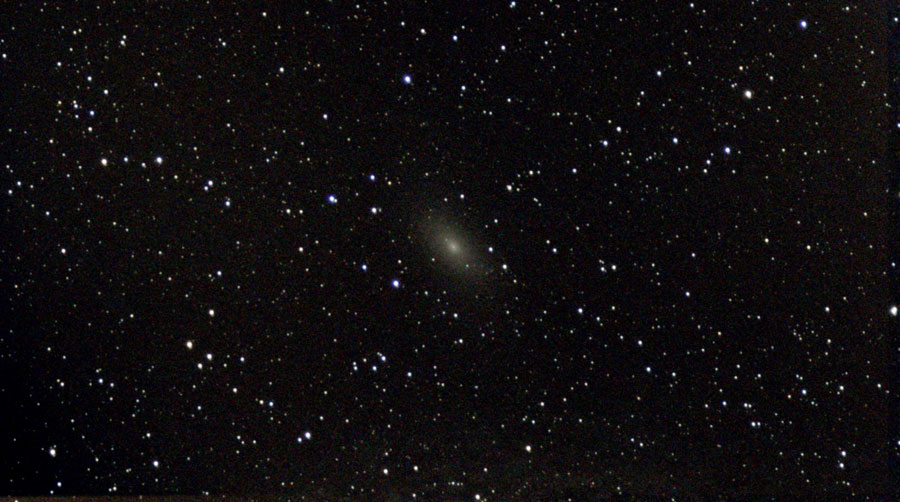

In the following, I reveal for the list of the 110 Messier objects (according to the Messier Guide from the Oculum publishing house), to what extent I have already photographed them with electronic telescopes or with astro cameras. Visual observations are not taken into account.
See also: Herschel 100+10 List - Overview Astronomy
Clik the "Object" links to see photos and get some information.
Note: Except for corrections, the eVscope and eVscope 2 columns are closed.
| Object | Name | Constellation | Type | eVscope | eVscope 2 | Vespera | Vespera Pro | Comments |
| M 1 | Crab Nebula | Taurus | GE |  |
 |
 |
 |
Supernova remnant from 1054 |
| M 2 | Aquarius | GC |  |
 |
 |
One of the larger GC | ||
| M 3 | Canes Venatici | GC |  |
 |
 |
One of the larger GC | ||
| M 4 | Scorpius | GC |  |
One of the larger GC; down south and thus, hard to observe | ||||
| M 5 | Serpens Caput | GC |  |
 |
 |
One of the larger GC | ||
| M 6 | Scorpius | OC |  |
Forms a cluster duo with M 7, but not in the eVscope... | ||||
| M 7 | Scorpius | OC |  |
Forms a cluster duo with M 6, but not in the eVscope... | ||||
| M 8 | Lagoon Nebula | Sagittarius | OC+GN |  |
 |
Emission nebula (NGC 6523) and open star cluster (NGC 6530) | ||
| M 9 | Ophiuchus | GC |  |
 |
Small globular star cluster | |||
| M 10 | Ophiuchus | GC |  |
 |
 |
Forms a pair with the globular star cluster M 12 | ||
| M 11 | Wild Ducks Cluster | Scutum | OC |  |
 |
 |
 |
Is located in the Scutum cloud, a special section of the Milky Way; therefore the photos are full of stars. |
| M 12 | Ophiuchus | GC |  |
 |
 |
Forms a pair with the globular star cluster M 10 | ||
| M 13 | Hercules Cluster | Hercules | GC |  |
 |
 |
 |
One of the largest GC |
| M 14 | Ophiuchus | GC |  |
 |
 |
The third of the three bright globular star clusters in Ophiuchus, but different in character from M 10 und M 12 | ||
| M 15 | Pegasus | GC |  |
 |
 |
 |
Supposedly, it is the best globular cluster in autumn, bright core | |
| M 16 | Eagle Nebula | Serpens | OC+GN |  |
 |
 |
 |
Star cluster M 16 embedded in the Eagle Nebula IC 4703 |
| M 17 | Omega or Swan Nebula | Sagittarius | GE |  |
 |
 |
 |
One of the most beautiful emission nebulae; in the reversing telescope, some people recognize a swan... |
| M 18 | Sagittarius | OC |  |
 |
More a less a "sub par" star cluster | |||
| M 19 | Ophiuchus | GC |  |
Famous for its oval shape | ||||
| M 20 | Trifid Nebula | Sagittarius | GE |  |
 |
Is called Trifid Nebula because it consists of three parts. | ||
| M 21 | Sagittarius | OC |  |
 |
Open star cluster that is given little attention | |||
| M 22 | Sagittarius | GC |  |
One of the largest GC | ||||
| M 23 | Sagittarius | OC |  |
Large open star cluster (nearly moon size) | ||||
| M 24 | Small Sagittarius Cloud | Sagittarius | SC |  |
Part of the Milky Way, too large for the eVscope | |||
| M 25 | Sagittarius | OC |  |
More of a "classical object for binoculars" | ||||
| M 26 | Scutum | OC |  |
 |
One of the more inconspicuous star clusters | |||
| M 27 | Dumbbell Nebula | Vulpecula | PN |  |
 |
 |
 |
One of the most beautiful nebulae for me |
| M 28 | Sagittarius | GC |  |
Smaller than the nearby M 22 | ||||
| M 29 | Cygnus | OC |  |
 |
 |
 |
Pattern created from only a few stars | |
| M 30 | Capricornus | GC |  |
 |
According to Stoyan, a typical globular star cluster that cannot be resolved in small telescopes. In the eVscope this is manifested by the very bright core. | |||
| M 31 | Andromeda Galaxy | Andromeda | G |  |
 |
 |
 |
Too large for the eVscope's field of view |
| M 32 | Comp. of Andromeda G. | Andromeda | G |  |
 |
 |
 |
Can be observed in the Vespera together with M 31, not well in the eVscope |
| M 33 | Triangulum Galaxy | Triangulum | G |  |
 |
 |
 |
Very faint, details recognizable only after longer exposures |
| M 34 | Perseus | OC |  |
 |
 |
 |
Large and nice open star cluster, reminds me of M 41 | |
| M 35 | Gemini | OC |  |
 |
 |
 |
Large and nice open star cluster; with AI and Vespera also together with NGC 2518 | |
| M 36 | Auriga | OC |  |
 |
 |
 |
Nice open star cluster, smaller than M 35 | |
| M 37 | Auriga | OC |  |
 |
 |
 |
Nice, very dense open star cluster | |
| M 38 | Auriga | OC |  |
 |
 |
 |
Nice open star cluster, larger than M 36, not as dense as M 37 | |
| M 39 | Cygnus | OC |  |
 |
 |
Few stars | ||
| M 40 | Ursa Major | DS |  |
 |
Optical double star; nearby are three small galaxies (NGC 4284, NGC 4290, PGC 39934) | |||
| M 41 | Canis Major | OC |  |
 |
 |
Large and nice open star cluster, reminds me of M 34; not as dense as M 35-38 | ||
| M 42 | Orion Nebula | Orion | GE |  |
 |
 |
 |
Too large, somewhat blurry, Trapezium mostly washed out in eVs(2) |
| M 43 | De Mairan's Nebula | Orion | GN |  |
 |
 |
 |
Part of M 42 (the "head") |
| M 44 | Praesepe/Crib | Cancer | OC |  |
 |
 |
Too large for the eVs, a few bright stars | |
| M 45 | Pleiades | Taurus | OC |  |
 |
 |
 |
Too large for the eVs FoV; Vsp: as a mosaic |
| M 46 | Puppis | OC |  |
 |
 |
Large; NGC 2438 (PN) on the photo! Vsp: M 46 and M 47 in the same FoV (mosaic) | ||
| M 47 | Puppis | OC |  |
 |
 |
Large, contains some large bright stars; Vsp: M 47 and M 46 in the same FoV (mosaic) | ||
| M 48 | Hydra | OC |  |
 |
 |
Large, many bright stars, at the center many nearby stars... | ||
| M 49 | Virgo | G |  |
 |
Elliptical galaxy | |||
| M 50 | Monoceros | OC |  |
 |
 |
 |
Nice large open star cluster with many fine and some bright stars; Vsp: also with IC 2177 in a mosaic | |
| M 51 | Whirlpool Galaxy | Canes Venatici | G |  |
 |
 |
 |
Nice spiral galaxy with connected satellite galaxy NGC 5195 |
| M 52 | Cassiopeia | OC |  |
 |
 |
 |
Medium-sized open star cluster | |
| M 53 | Coma Berenices | GC |  |
 |
One of the smaller globular star clusters | |||
| M 54 | Sagittarius | GC |  |
The left one of the three globular star clusters M 54, M 70, and M 69. According to Stoyan, it is not a globular star cluster of our galaxy, but belongs to a dwarf galaxy, which is just being "cannibalized" by our galaxy. | ||||
| M 55 | Sagittarius | GC |  |
Larger globular star cluster, very far in the south | ||||
| M 56 | Lyra | GC |  |
 |
 |
 |
One of the smaller globular star clusters | |
| M 57 | Ring Nebula | Lyra | PN |  |
 |
 |
 |
Ring clearly visible; tiny with Vsp |
| M 58 | Virgo | G |  |
 |
 |
Barred spiral galaxy, but hard to see in the eVs | ||
| M 59 | Virgo | G |  |
 |
Elliptical galaxy, smaller than M 58; at a distance of 0.4° from M 60 (can be seen together with M 60 with a suitable section) | |||
| M 60 | Virgo | G |  |
 |
Elliptical galaxy with satellite NGC 4647 (spiral galaxy); galaxies NGC 4638/37 and IC 809 also on some of the photos (and M 59 with a suitable section) | |||
| M 61 | Virgo | G |  |
 |
Spiral galaxy, small and fine spiral in the eVscope; on May 6, 2020, the new supernova SN 2020jfo within it was discovered. | |||
| M 62 | Ophiuchus | GC |  |
Is located near the horizon, therefore hard to observe | ||||
| M 63 | Sunflower Galaxy | Canes Venatici | G |  |
 |
Nice, elongated spiral galaxy, somewhat larger | ||
| M 64 | Blackeye Galaxy | Coma Berenices | G |  |
 |
Impressive spiral galaxy with unique look, somewhat larger | ||
| M 65 | Leo | G |  |
 |
 |
Thin, elongated spiral galaxy, spiral hard to see; part of the Leo triplet (with M 66 and NGC 3628); with M 66 in the eVs' rectangular FoV; with Vsp the whole triplet can be observed | ||
| M 66 | Leo | G |  |
 |
 |
Elongated spiral galaxy, spiral visible; part of the Leo triplet (with M 65 and NGC 3628); with M 65 in the eVs' rectangular FoV; with Vsp the whole triplet can be observed | ||
| M 67 | Cancer | OC |  |
 |
 |
Large, nice cluster with a few bright stars and many not so bright ones | ||
| M 68 | Hydra | GC | ||||||
| M 69 | Sagittarius | GC |  |
Is located farthest to the West of the three globular clusters M 54, M 70, and M 69, small. | ||||
| M 70 | Sagittarius | GC |  |
Is located in the middle one of the three globular clusters M 54, M 70, and M 69, small. Up to now, only photographed "disturbed". | ||||
| M 71 | Sagitta | GC |  |
 |
 |
 |
According to Stoyan, an unusually loose globular star cluster. | |
| M 72 | Aquarius | GC |  |
According to Stoyan, one of the more inconspicuous globular star clusters |
||||
| M 73 | Aquarius | OC |  |
According to Stoyan, one of the more obscure Messier objects, but worth visiting | ||||
| M 74 | Pisces | G |  |
 |
 |
 |
Nice spiral galaxy, but small. | |
| M 75 | Sagittarius | GC |  |
According to Stoyan, following M 54, the farthest away globular star cluster in Messier's catalogue, which explains its low brightness and size. | ||||
| M 76 | Small Dumbbell Nebula | Perseus | PN |  |
 |
 |
Small, colorful, rectangular | |
| M 77 | Cetus | G |  |
 |
 |
Spiral galaxy, a bit more to see than with M 74, but in the end just a soft dot in the eVs | ||
| M 78 | Orion | GR |  |
 |
 |
 |
Faint, but identifiable using two stars; around new moon, I was able to see more details (visually) | |
| M 79 | Lepus | GC |  |
Smaller globular star cluster | ||||
| M 80 | Scorpius | GC |  |
One of the fainter globular cluster, but nevertheless worthwhile; located almost as southernly as M 4. | ||||
| M 81 | Bode Galaxy | Ursa Major | G |  |
 |
 |
 |
Nice spiral galaxy; the spiral is not very conspicuous in the eVs |
| M 82 | Cigar Galaxy | Ursa Major | G |  |
 |
 |
 |
Elongated irregular galaxy (cigar), dirsturbed by an encounter with M 81 |
| M 83 | Hydra | G | ||||||
| M 84 | Virgo | G |  |
 |
 |
 |
Elliptical galaxy that can be seen together with M 86 in the eVs' FoV (+ NGC 4387 and a bit of NGC 4402); forms together with M 86 and NGC 4387 the "Great Galactic Face" (the latter is best accessed via NGC 4387). | |
| M 85 | Coma Berenices | G |  |
 |
Elliptical galaxy that can be seen together with the galaxy NGC 4394 (barred spiral) in the eVs' FoV; the new supernova 2020nlb (discovered on June 25, 2020) could be seen well. | |||
| M 86 | Virgo | G |  |
 |
 |
 |
Observed alone and together with M 84 in the eVs' FoV (+ NGC 4387 and a bit of NGC 4402); forms together with M 84 and NGC 4387 the "Great Galactic Face." | |
| M 87 | Virgo | G |  |
 |
 |
Elliptical galaxy, seen together with NGC 4478 in the eVs' FoV- and in the rectangular format also NGC 4476; has a jet stream; center of the Virgo galaxy cluster | ||
| M 88 | Coma Berenices | G |  |
 |
Spiral galaxy, spiral can be recognized | |||
| M 89 | Virgo | G |  |
 |
 |
Elliptical galaxy, a small bright and fuzzy dot... | ||
| M 90 | Virgo | G |  |
 |
 |
Spiral galaxy, spiral can be recognized | ||
| M 91 | Coma Berenices | G |  |
 |
Barred spiral galaxy, bar can be recognized, spiral not so much... | |||
| M 92 | Hercules | GC |  |
 |
 |
 |
Nice globular star cluster, smaller than M 13, but brighter core | |
| M 93 | Puppis | OC |  |
Nice open star cluster with compact center | ||||
| M 94 | Canes Venatici | G |  |
 |
Small spiral galaxy, the spiral appears more like a nebula | |||
| M 95 | Leo | G |  |
 |
 |
 |
Small barred spiral galaxy, relatively faint, but the bar is visible. Forms a pair with M 96, but too far away for the eVs (40'). | |
| M 96 | Leo | G |  |
 |
 |
 |
Spiral galaxy, forms a pair with M 95, but too far away for the eVs (40'). | |
| M 97 | Owl Nebula | Ursa Major | PN |  |
 |
 |
 |
Small green dot with two dark spots; Vsp: Together with M 108 on the same photo |
| M 98 | Coma Berenices | G |  |
 |
Spiral galaxy seen edge-on, small bright core | |||
| M 99 | Coma Berenices | G |  |
 |
 |
Spiral galaxy, almost seen face-on, similar to M 100 and M 101, but much smaller than M 101 | ||
| M 100 | Coma Berenices | G |  |
 |
Spiral galaxy, almost seen face-on, similar to M 99 and M 101, but much smaller than M 101; discovered 4-5 more galaxies on a photo! | |||
| M 101 | Pinwheel Galaxy | Ursa Major | G |  |
 |
 |
 |
Spiral galaxy, seen face-on, similar to M 99 and M 100, but much larger than both; quite impressive in the eVs(2) and Vsp |
| M 102 | Spindle Galaxy | Draco | G |  |
 |
 |
Seen edge-on; shares the name "Spindle Galaxy" with two other galaxies | |
| M 103 | Cassiopeia | OC |  |
 |
 |
 |
Open star cluster with many fine stars; the brighter stars form a triangle | |
| M 104 | Sombrero Galaxy | Virgo | G |  |
 |
Spiral galaxy, seen nearly edge-on; the dust ring and the bright nucleus led to the name; very impressive in the eVs. | ||
| M 105 | Leo | G |  |
 |
 |
 |
Bright elliptical galaxy; can be seen together with the galaxies NGC 3384 (elliptical) and the smaller NGC 3389 (spiral) in the eVs' FoV. | |
| M 106 | Canes Venatici | G |  |
 |
 |
Larger and bright spiral galaxy with bright core; close to it there is the small spiral galaxy NGC 4248. | ||
| M 107 | Ophiuchus | GC |  |
 |
The faintest of the Messier globular star clusters in constellation Ophiuchus (according to Stoyan) | |||
| M 108 | Ursa Major | G |  |
 |
 |
Barred spiral galaxy, nearly seen edge-on; Vsp: can be seen together with M 97 | ||
| M 109 | Ursa Major | G |  |
 |
Barred spiral galaxy, the bar is easily recognized in the eVs | |||
| M 110 | Comp. of Andromeda G. | Andromeda | G |  |
 |
 |
Satellite galaxy of M 31, very faint... |
AI = Atik Infinity, 224 = ZWO ASI224, 294 = ZWO ASI294
Ronald Stoyan (2020). Messier Guide. Oculum-Verlag (ISBN: 978-3-938469-94-1)
www.oculum-verlag.de/detailview?no=594